Prodrugs of Nh-acidic compounds
Blumberg , et al.
U.S. patent number 10,723,728 [Application Number 16/540,802] was granted by the patent office on 2020-07-28 for prodrugs of nh-acidic compounds. This patent grant is currently assigned to ALKERMES PHARMA IRELAND LIMITED. The grantee listed for this patent is ALKERMES PHARMA IRELAND LIMITED. Invention is credited to Orn Almarsson, Laura Cook Blumberg, Julius F. Remenar, Tarek A. Zeidan.












View All Diagrams
| United States Patent | 10,723,728 |
| Blumberg , et al. | July 28, 2020 |
Prodrugs of Nh-acidic compounds
Abstract
The invention provides a method of sustained delivery of a lactam, imide, amide, sulfonamide, carbamate or urea containing parent drug by administering to a patient an effective amount of a prodrug compound of the invention wherein upon administration to the patient, release of the parent drug from the prodrug is sustained release. Prodrug compounds suitable for use in the methods of the invention are labile conjugates of parent drugs that are derivatized through carbonyl linked prodrug moieties. The prodrug compounds of the invention can be used to treat any condition for which the lactam, imide, amide, sulfonamide, carbamate or urea containing parent drug is useful as a treatment.
| Inventors: | Blumberg; Laura Cook (Lincoln, MA), Remenar; Julius F. (Framingham, MA), Almarsson; Orn (Shrewsbury, MA), Zeidan; Tarek A. (Lexington, MA) | ||||||||||
|---|---|---|---|---|---|---|---|---|---|---|---|
| Applicant: |
|
||||||||||
| Assignee: | ALKERMES PHARMA IRELAND LIMITED
(Dublin, IE) |
||||||||||
| Family ID: | 43386901 | ||||||||||
| Appl. No.: | 16/540,802 | ||||||||||
| Filed: | August 14, 2019 |
Prior Publication Data
| Document Identifier | Publication Date | |
|---|---|---|
| US 20190367501 A1 | Dec 5, 2019 | |
Related U.S. Patent Documents
| Application Number | Filing Date | Patent Number | Issue Date | ||
|---|---|---|---|---|---|
| 16023887 | Jun 29, 2018 | 10428058 | |||
| 15227117 | Aug 7, 2018 | 10040787 | |||
| 14755412 | Jun 30, 2015 | ||||
| 14172391 | Aug 11, 2015 | 9102618 | |||
| 12823102 | Apr 1, 2014 | 8686009 | |||
| 61293133 | Jan 7, 2010 | ||||
| 61293087 | Jan 7, 2010 | ||||
| 61220480 | Jun 25, 2009 | ||||
| Current U.S. Class: | 1/1 |
| Current CPC Class: | A61P 25/00 (20180101); A61P 25/22 (20180101); C07D 215/22 (20130101); C07H 19/06 (20130101); C07D 401/12 (20130101); C07D 215/00 (20130101); C07D 263/58 (20130101); C07D 215/14 (20130101); A61P 43/00 (20180101); C07D 401/04 (20130101); A61K 31/496 (20130101); C07D 417/12 (20130101); C07D 401/14 (20130101); C07F 9/65583 (20130101); C07D 471/04 (20130101); A61K 31/554 (20130101); C07D 471/14 (20130101); C07D 239/56 (20130101); A61P 3/10 (20180101); C07D 239/553 (20130101) |
| Current International Class: | C07D 417/12 (20060101); C07D 239/553 (20060101); C07D 239/56 (20060101); C07H 19/06 (20060101); C07D 215/00 (20060101); C07D 401/14 (20060101); C07D 215/14 (20060101); C07D 471/04 (20060101); A61K 31/554 (20060101); A61K 31/496 (20060101); C07F 9/6558 (20060101); C07D 471/14 (20060101); C07D 401/12 (20060101); C07D 263/58 (20060101); C07D 215/22 (20060101); C07D 401/04 (20060101) |
| Field of Search: | ;514/334 |
References Cited [Referenced By]
U.S. Patent Documents
| 404065 | May 1889 | Woolridge |
| 2418499 | April 1947 | Burke |
| 3266984 | August 1966 | Kenzo et al. |
| 3523121 | August 1970 | Lewis et al. |
| 3573308 | March 1971 | Ning et al. |
| 3798219 | March 1974 | von Strandtmann et al. |
| 3957808 | May 1976 | Miller et al. |
| 4160099 | July 1979 | Bodor |
| 4260769 | April 1981 | Stella et al. |
| 4267326 | May 1981 | Ozaki et al. |
| 4428935 | January 1984 | Myers |
| 4443464 | April 1984 | Biedemann et al. |
| 4448906 | May 1984 | Deinet et al. |
| 4500708 | February 1985 | Chorvat et al. |
| 4594190 | June 1986 | Giani et al. |
| 4694006 | September 1987 | Bundgaard et al. |
| 4727151 | February 1988 | Bodor |
| 4760057 | July 1988 | Alexander |
| 4837337 | June 1989 | Murao et al. |
| 4914094 | April 1990 | Oshiro et al. |
| 5006528 | April 1991 | Oshiro et al. |
| 5206386 | April 1993 | Narayanan et al. |
| 5350747 | September 1994 | Howard |
| 5462934 | October 1995 | Goto et al. |
| 5700946 | December 1997 | Shimasaki et al. |
| 5719303 | February 1998 | Yoshida et al. |
| 5783589 | July 1998 | Hamilton et al. |
| 5985856 | November 1999 | Stella et al. |
| 6127357 | October 2000 | Cliffe et al. |
| 6133248 | October 2000 | Stella |
| 6150366 | November 2000 | Arenson et al. |
| 6180095 | January 2001 | Greenwald et al. |
| 6608084 | August 2003 | Bourzat et al. |
| 6653312 | November 2003 | Auvin et al. |
| 7115587 | October 2006 | Nerurkar et al. |
| 7160888 | January 2007 | Johnson et al. |
| 7538121 | May 2009 | MacDonald et al. |
| 8431576 | April 2013 | Remenar et al. |
| 8686009 | April 2014 | Blumberg |
| 9102618 | August 2015 | Blumberg |
| 10040787 | August 2018 | Blumberg |
| 10428058 | October 2019 | Blumberg |
| 2002/0176841 | November 2002 | Barker et al. |
| 2004/0254182 | December 2004 | Mulvihill et al. |
| 2005/0203089 | September 2005 | Starrett et al. |
| 2006/0040932 | February 2006 | Eijgendaal et al. |
| 2006/0142333 | June 2006 | MacDonald et al. |
| 2006/0293217 | December 2006 | Barker et al. |
| 2007/0031513 | February 2007 | Kikuchi et al. |
| 2007/0191611 | August 2007 | Rao et al. |
| 2007/0213300 | September 2007 | Liu et al. |
| 2008/0085888 | April 2008 | Breining et al. |
| 2008/0143403 | June 2008 | Huang et al. |
| 2008/0186971 | August 2008 | Carmichael et al. |
| 2008/0261954 | October 2008 | Maelicke |
| 2008/0312199 | December 2008 | Glinsky |
| 2008/0318905 | December 2008 | Muhammad et al. |
| 2009/0053329 | February 2009 | Peters et al. |
| 2009/0068290 | March 2009 | Bourin et al. |
| 2009/0069419 | March 2009 | Jandeleit et al. |
| 2009/0143403 | June 2009 | Brown |
| 2009/0163545 | June 2009 | Goldfarb |
| 2010/0098641 | April 2010 | Baker et al. |
| 2010/0286136 | November 2010 | Jones |
| 2010/0292316 | November 2010 | Sanders et al. |
| 2011/0003828 | January 2011 | Blumberg |
| 2011/0015156 | January 2011 | Remenar et al. |
| 2011/0166128 | July 2011 | Remenar et al. |
| 2011/0166156 | July 2011 | Blumberg et al. |
| 2011/0166194 | July 2011 | Blumberg et al. |
| 2011/0178068 | July 2011 | Almarsson et al. |
| 2011/0275803 | November 2011 | Remenar et al. |
| 2011/0319422 | December 2011 | Blumberg et al. |
| 2012/0015866 | January 2012 | Blumberg et al. |
| 2014/0221653 | August 2014 | Blumberg |
| 2015/0376143 | December 2015 | Blumberg |
| 2017/0015659 | January 2017 | Blumberg |
| 2019/0031648 | January 2019 | Blumberg |
| 1157677 | Nov 1983 | CA | |||
| 1273533 | Jul 1968 | DE | |||
| 104526 | Mar 1974 | DE | |||
| 0207581 | Jan 1987 | EP | |||
| 0590793 | Apr 1994 | EP | |||
| 1891956 | Feb 2008 | EP | |||
| 849541 | Sep 1960 | GB | |||
| 61-267580 | Nov 1986 | JP | |||
| 63284165 | Nov 1988 | JP | |||
| 02-191256 | Jul 1990 | JP | |||
| 05-194517 | Aug 1993 | JP | |||
| WO 1990014080 | Nov 1990 | WO | |||
| WO 9100863 | Jan 1991 | WO | |||
| WO 9115488 | Oct 1991 | WO | |||
| WO 9206089 | Apr 1992 | WO | |||
| WO 9325197 | Dec 1993 | WO | |||
| WO 9612725 | May 1996 | WO | |||
| WO 96026929 | Sep 1996 | WO | |||
| WO 9743284 | Nov 1997 | WO | |||
| WO 9933846 | Jul 1999 | WO | |||
| WO 0050417 | Aug 2000 | WO | |||
| WO 02096351 | Dec 2002 | WO | |||
| WO 02100861 | Dec 2002 | WO | |||
| WO 2003084572 | Oct 2003 | WO | |||
| WO 2004026864 | Apr 2004 | WO | |||
| WO 2004029054 | Apr 2004 | WO | |||
| WO 2004067546 | Aug 2004 | WO | |||
| WO 2004089925 | Oct 2004 | WO | |||
| WO 2005019215 | Mar 2005 | WO | |||
| WO 2005066165 | Jul 2005 | WO | |||
| WO 2005120577 | Dec 2005 | WO | |||
| WO 2006037090 | Apr 2006 | WO | |||
| WO 2006085219 | Aug 2006 | WO | |||
| WO 2006090273 | Aug 2006 | WO | |||
| WO 2007059111 | May 2007 | WO | |||
| WO 2009052467 | Apr 2009 | WO | |||
| WO 2011084848 | Jul 2011 | WO | |||
| WO 2011160084 | Dec 2011 | WO | |||
Other References
|
US. Appl. No. 12/823,102, filed Jun. 24, 2010, Blumberg. cited by applicant . U.S. Appl. No. 14/172,391, filed Feb. 4, 2014, Blumberg. cited by applicant . U.S. Appl. No. 14/755,412, filed Jun. 30, 2015, Blumberg. cited by applicant . U.S. Appl. No. 15/277,117, filed Aug. 3, 2016, Blumberg. cited by applicant . U.S. Appl. No. 16/023,887, filed Jun. 29, 2018, Blumberg. cited by applicant . U.S. Appl. No. 16/540,802, filed Aug. 14, 2019, Blumberg. cited by applicant . Alvarez, F.J., et al., "Pancreatic Lipase-Catalyzed Hydrolysis of Esters of Hydroxymethyl Phenytoin Dissolved in Various Metabolizable Vehicles, Dispersed in Micellar Systems, and in Aqueous Suspensions," Pharmaceutical Research 6, pp. 555-563 (1989). cited by applicant . Bender, et. al., "Cyclopropanecarboxylic Acid Esters as Potential Prodrugs with Enhanced Hydrolytic Stability," Org. Lett. vol. 10(3): 509-511 (2008). cited by applicant . Boehme, H., et al., "Zur Kenntnis der N-[-Alkoxy-alkyl]-carbonsaureamide and der durch ihre thermische Spaltung entstehenden Enamide," Chem. Ber., 99(7): pp. 2127-2135 (1966). cited by applicant . CAS RN 1001254-47-2, STN Entry Date Feb. 1, 2008. cited by applicant . CAS RN 441314-50-7, STN Entry Date Jul. 31, 2002. cited by applicant . CAS RN 52598-34-2, STN Entry Date Nov. 16, 1984. cited by applicant . CAS RN 66395-34-4, STN Entry Date Nov. 16, 1984. cited by applicant . CAS RN 760152-91-8 STN Entry Date Oct. 11, 2004. cited by applicant . CAS RN 91305-39-4, STN Entry Date Nov. 16, 1984. cited by applicant . Dezi, Modeling of 5-HT2A and 5-HT2C Receptors and of Their Complexes with Actual and Potential Antipsychotic PhD Thesis, Pompeu Fabra Univerisity, Barcelona, pp. 1-239 (2007). cited by applicant . Doshi, A., et al., "In Vivo Pharmacokinetic Studies of Prodrugs of Ibuprofen," Indian Journal of Pharmaceutical 69(6): 824-827 (Nov.-Dec. 2007). cited by applicant . Hartung, R., et al., "A Simple and Efficient Preparation of Novel Formaldehyde Derivatives," Synthesis, No. 3, pgs. (Jan. 2009). cited by applicant . Iley et al. "Acyloxymethyl as a Drug Protecting Group: Part 4. The Hydrolysis of Tertiary Amidomethyl Ester Prodrugs of Carboxylic Acid Agents," Pharmaceutical Research. 14(11):1634-1639 (1997). cited by applicant . Kearney, A.S., "Prodrugs and Targeted Drug Delivery," Advanced Drug Delivery Reviews, 19, pp. 225-239 (1996). cited by applicant . Kim, C., et al., "A new class of acyclic phosphonate nucleotide analogs: Phosphonate isosteres of acyclovir and ganciclovir monophosphates as antiviral agents," Journal of Medicinal Chemistry 34(7):2286-2294 (1991). cited by applicant . Krise, J.P., et al. Novel Prodrug Approach for Tertiary Amines Synthesis and Preliminary Evaluation of N- Phosphonooxymethyl Prodrugs, J. Med. Chern 42, pp. 3094-3100 (1999). cited by applicant . Link, J T., et al., "First Total Synthesis of Staurosporine and ent-Staurosporine," J. Am. Chem. Soc. 117, pp. 552-553 (1995). cited by applicant . Lopes et al. Journal of the Chemical Society, Perkin Transactions 2: Physical Organic Chemistry (3):431-439 (1999). cited by applicant . McCaron, P.A., et al., Incorporation of novel 1-alkylcarbonylxymethyl Prodrugs of 5-Fluorouracil into Poly(lactide-co glycolide) Nanoparticles, International Journal of Pharmaceutics 348, pp. 115-124 (2008). cited by applicant . Miao, et al., "Characterization of a Novel Metabolite Intermediate of Ziprasidone in Hepatic Cytosolic Fractions of Rat, Dog, and Human by ESI-MS/MS, Hydrogen/Deuterium Exchange, and Chemical Derivatization." Drug Metabolism and Disposition, 33(7):879-883 (2005). cited by applicant . Nielsen, A.B., et al.. "Bioreversible quaternary N-acyloxymethyl derivatives of the tertiary amines bupivacaine and lidocaine synthesis, aqueous solubility and stability in buffer, human plasma and simulated intestinal fluid," European Journal of Pharmaceutical Sciences 24:433-440 (2005). cited by applicant . Nomura, et al., "(3-Substituted benzyl)thiazolidine-2,4-diones as structurally new antihyperglycemic agents," Bioorg Med Chem Lett. 9(4):533-538 (1999). cited by applicant . Palin, R., et al., "Structure-activity relationships and CoMFA of N-3 substituted phenoxypropyl piperidine benzimidazol-2-one analogues as NOP receptor agonists with analgesic properties," Bioorganic & Medicinal Chemistry vol. 16, pp. 2829-2851 (2008). cited by applicant . Rautio, J., et. al., "Prodrugs: design and clinical applications," Nature Reviews, 7:255-270 (2008). cited by applicant . Redden, P.R., et al., "Acyloxymethyl Acidic Drug Derivatives: In Vitro Hydrolytic Reactivity," International Journal of Pharmaceutics, 180, pp. 151-160 (1999). cited by applicant . Robinson, R., et al., "Discovery of the Hemifumarate and {alpha-L-Alanyloxy)methyl Ether as Prodrugs of Antirheumatic Oxindole: Prodrugs for the Enolic OH Group," J. Med. Chem, 39:10-18 (1996). cited by applicant . Simplicio, A.L., "Beta-Aminoketones as Prodrugs with pH-Controlled Activation," International Journal of Pharmaceutics 336(2):208-214 (2007). cited by applicant . Simplicio, A.L., et al., "Prodrugs for Amines," molecules, 13: 519-547 (2008). cited by applicant . Skinner, W.A., "Topical Mosquito Repellents: X: 2-Oxazolidones," J. Pharmaceutical Sci., 66(4); 587-589. cited by applicant . Stella, V., et al., "Aqueous solubility and dissolution rate does not adequately predict in vivo performance: A probe utilizing some N-acyloxymethyl phenytoin prodrugs," Journal of Pharmaceutical Sciences, 88(8): 775-779 (1999). cited by applicant . Varma et al., (1968) "Synthesis and Antibacterial Activity of Certain 3-Substituted Benzoxazolines," Journal of Pharmaceutical Sciences, 57(1):39-44. cited by applicant . Weiler, E.D., et al., Isothiazoles VII: N-Hydroxyalkylation and Mannich Reaction of 4-Isothiazolin-3-one, J. Chem., 13(5): 1097-1098 (1976). cited by applicant . Weitzel, G., et al., Weitere Tumorhemmende Verbindungsklassen, I Cytostatische Effekte von N-and S-Hydroxymethyl-Verbindungen, Hoppe-Seyler's Zeitschrift Fur Physiologische Chemie, 334 (1): 1-25 (1963). cited by applicant . White, H.S., et al., "Correlation between Anticonvulsant Activity and Inhibitory Action of Glial y-Aminobutyric Acid Uptake of the Highly Selective Mouse y-aminobutyric Acid Transporter 1 Inhibitor 3-Hydroxy-4-amino-4, 5, 6, 7--and Its n-aikylated Analogs," The Journal of Pharmacology and Experimental Terapeutics, 302(2): 636-644 (2002). cited by applicant . Yoda, et al., "Sml2-mediated hetero-coupling reaction of lactams with aldehydes: synthesis of indolizidine alkaloids, (-)-delta-coniceine, (+)-5-epiinodolizidine 167B and (+)-lentiginosine," Tetrahedron Letters, 42(13): 2509-2512, Abstract Only, pp. 1-2 (2001). cited by applicant . Zinner et al., "Benzazole, IV. Mitteil.: Mannich-Basen des Benzoxazolons", Chemisch Bericthe, 1956, vol. 89, pp. 2131-6. cited by applicant. |
Primary Examiner: Habte; Kahsay
Attorney, Agent or Firm: Trinque; Brian C. Lathrop GPM, LLP
Parent Case Text
RELATED APPLICATIONS
This application is a divisional of U.S. application Ser. No. 14/755,412, filed Jun. 30, 2015, which is a divisional of U.S. application Ser. No. 14/172,391, filed on Feb. 4, 2014, now U.S. Pat. No. 9,102,618, which is a continuation of U.S. application Ser. No. 12/823,102, filed on Jun. 24, 2010, now U.S. Pat. No. 8,686,009, which claims the benefit of U.S. Provisional Application No. 61/220,480, filed on Jun. 25, 2009; 61/293,087, filed on Jan. 7, 2010; and 61/293,133, filed on Jan. 7, 2010. The entire teachings of the above applications are incorporated herein by reference.
Claims
What is claimed is:
1. A compound having the formula XIJ or formula XIIJ: ##STR01646## wherein, X is --S-- or --O--; R.sub.1 is selected from --C(R.sub.A)(R.sub.B)--OR.sub.20, --C(R.sub.A)(R.sub.B)--OC(O)OR.sub.20, --C(R.sub.A)(R.sub.B)--OC(O)R.sub.20, --C(R.sub.A)(R.sub.B)--OC(O)NR.sub.20R.sub.21, --(C(R.sub.A)(R.sub.B))--OPO.sub.3MY, --(C(R.sub.A)(R.sub.B))--OP(O)(OR.sub.20)(OR.sub.21), --[C(R.sub.A)(R.sub.B)O].sub.z--R.sub.20, --[C(R.sub.A)(R.sub.B)O].sub.z--C(O)OR.sub.20, --[C(R.sub.A)(R.sub.B)O].sub.z--C(O)R.sub.20, --[C(R.sub.A)(R.sub.B)O].sub.z--C(O)NR.sub.20R.sub.21, --[C(R.sub.A)(R.sub.B)O].sub.z--OPO.sub.3MY, --[C(R.sub.A)(R.sub.B)O].sub.z--P(O).sub.2(OR.sub.20)M, and --[C(R.sub.A)(R.sub.B)].sub.z--P(O)(OR.sub.20)(OR.sub.21); R.sub.2 is selected from the group consisting of absent, hydrogen, halogen, --OR.sub.10, --SR.sub.10, --NR.sub.10R.sub.11--, aliphatic, aryl, and heterocyclyl; each R.sub.10 and R.sub.11 is independently selected from the group consisting of absent, hydrogen, halogen, aliphatic, and aryl; alternatively, two R.sub.10 and R.sub.11 together with the atoms to which they are attached and any intervening atoms may form an additional 3, 4, 5, 6 or 7 membered ring; A is selected from the group consisting of absent, alkyl, alkenyl, alkynyl, --S--, --O--, --S(O)--, --S(O).sub.2--, --S[C(R.sub.30)(R.sub.31)].sub.u--, --S(O)[C(R.sub.30)(R.sub.31)].sub.u--, --S(O).sub.2[C(R.sub.30)(R.sub.31)].sub.u-, --O[C(R.sub.30)(R.sub.31)].sub.u--, --N(R.sub.30)--, --N(R.sub.30)[C(R.sub.31)(R.sub.32)].sub.u--, --[C(R.sub.30)(R.sub.31)].sub.u, --C(O)[C(R.sub.30)(R.sub.31)].sub.u--; each R.sub.3, R.sub.4, R.sub.5, R.sub.30, R.sub.31, and R.sub.32 is independently selected from the group consisting of absent, hydrogen, halogen, --OR.sub.10, --SR.sub.10, --NR.sub.10R.sub.11--, --C(O)R.sub.10, aliphatic, aryl and heterocyclyl; alternatively, two R.sub.3 groups together or two R.sub.4 groups together or one R.sub.3 group with one R.sub.4 group together forms a ring; each R.sub.A and R.sub.B is independently selected from the group consisting of hydrogen, halogen, aliphatic, and aryl; each R.sub.20 and R.sub.21 is independently selected from the group consisting of hydrogen, aliphatic, and aryl; Y and M are the same or different and each is a monovalent cation; or M and Y together is a divalent cation; r is 0, 1, 2, 3, 4, 5, 6, 7, 8, 9, 10 or 11; m and q are independently 0, 1, or 2; p is 0, 1, 2 or 3; z is 2 or 3; and u is independently 1, 2, 3, 4, 5, 6 or 7.
2. The compound of claim 1, wherein the compound of Formula XIJ or Formula XIIJ is a compound of Formula XIK or Formula XIIK: ##STR01647##
3. The compound of claim 1, wherein R.sub.5 is selected from the group consisting of ##STR01648## ##STR01649## wherein R.sub.100 and R.sub.101, each represent 1 to 4 substituents independently selected from the group consisting of hydrogen, halogen, C.sub.1-C.sub.8 alkyl, C.sub.2-C.sub.8 alkenyl, C.sub.2-C.sub.8 alkynyl, C.sub.3-C.sub.8 cycloalkyl, C.sub.1-C.sub.8 alkoxy, C.sub.1-C.sub.8 alkylamino, and C.sub.6-C.sub.8 aryl.
4. The compound of claim 1, wherein the compound of Formula XIJ or Formula XIIJ is selected from the group consisting of ##STR01650## ##STR01651## ##STR01652## ##STR01653## ##STR01654## ##STR01655## ##STR01656## ##STR01657## or a pharmaceutically acceptable salt thereof.
5. A pharmaceutical composition comprising the compound of claim 1 and a pharmaceutically acceptable carrier.
Description
BACKGROUND OF THE INVENTION
(i) Field of the Invention
The present invention relates to prodrugs of lactam, amide, imide, sulfonamide, carbamate, urea, benzamide, and acylaniline containing pharmacophores.
(ii) Background of the Invention
Drug delivery systems are often critical for the safe and effective administration of a biologically active agent. Perhaps the importance of these systems is best realized when patient compliance and consistent dosing are taken under consideration. For instance, reducing the dosing requirement for a drug from four-times-a-day to a single dose per day would have significant value in terms of ensuring patient compliance and optimizing therapy.
Optimization of a drug's bioavailability has many potential benefits. For patient convenience and enhanced compliance it is generally recognized that less frequent dosing is desirable. By extending the period through which the drug is released, a longer duration of action per dose is expected. This will then lead to an overall improvement of dosing parameters such as taking a drug once a day where it has previously required four doses per day or dosing once a week or even less frequently when daily dosing was previously required. Many drugs are presently dosed once per day, but not all of these drugs have pharmacokinetic properties that are suitable for dosing intervals of exactly twenty-four hours. Extending the period through which these drugs are released would also be beneficial.
One of the fundamental considerations in drug therapy involves the relationship between blood levels and therapeutic activity. For most drugs, it is of primary importance that serum levels remain between a minimally effective concentration and a potentially toxic level. In pharmacokinetic terms, the peaks and troughs of a drug's blood levels ideally fit well within the therapeutic window of serum concentrations. For certain therapeutic agents, this window is so narrow that dosage formulation becomes critical.
In an attempt to address the need for improved bioavailability, several drug release modulation technologies have been developed. For example, poorly soluble 5,5 diphenylimidazolidine-2,4-diones have been derivatized into phosphate ester prodrugs to improve solubility. (Stella et. al., U.S. Pat. No. 4,260,769, 1981). Enteric coatings have been used as a protector of pharmaceuticals in the stomach and microencapsulating active agents using proteinaceous microspheres, liposomes or polysaccharides have been effective in abating enzymatic degradation of the active agent. Enzyme inhibiting adjuvants have also been used to prevent enzymatic degradation.
A wide range of pharmaceutical formulations provide sustained release through microencapsulation of the active agent in amides of dicarboxylic acids, modified amino acids or thermally condensed amino acids. Slow release rendering additives can also be intermixed with a large array of active agents in tablet formulations.
While microencapsulation and enteric coating technologies impart enhanced stability and time-release properties to active agent substances these technologies suffer from several shortcomings. Incorporation of the active agent is often dependent on diffusion into the microencapsulating matrix, which may not be quantitative and may complicate dosage reproducibility. In addition, encapsulated drugs rely on diffusion out of the matrix or degradation of the matrix, or both, which is highly dependent on the chemical properties and water solubility of the active agent. Conversely, water-soluble microspheres swell by an infinite degree and, unfortunately, may release the active agent in bursts with limited active agent available for sustained release. Furthermore, in some technologies, control of the degradation process required for active agent release is unreliable. For example, because an enterically coated active agent depends on pH to release the active agent and pH and residence time varies, the release rate is difficult to control.
Several implantable drug delivery systems have utilized polypeptide attachment to drugs. Additionally, other large polymeric carriers incorporating drugs into their matrices are used as implants for the gradual release of drug. Yet another technology combines the advantages of covalent drug attachment with liposome formation where the active ingredient is attached to highly ordered lipid films.
However, there is still a need for an active agent delivery system that is able to deliver certain active agents which have been heretofore not formulated or difficult to formulate in a sustained release formulation for release over a sustained period of time and which is convenient for patient dosing.
There is a generally recognized need for sustained delivery of drugs that reduces the daily dosing requirement and allows for controlled and sustained release of the parent drug and also avoids irregularities of release and cumbersome formulations encountered with typical dissolution controlled sustained release methods.
SUMMARY OF THE INVENTION
The present invention accomplishes this by extending the period during which a lactam, amide, imide, sulfonamide, carbamate, urea, benzamide, acylaniline, and cyclic amide containing parent drug is released and absorbed after administration to the patient and providing a longer duration of action per dose than the parent drug itself. In one embodiment, the compounds suitable for use in the methods of the invention are derivatives of lactam-, amide-, imide-, sulfonamide-, carbamate-, urea-, benzamide-, acylaniline-, and cyclic amide-containing parent drugs that are substituted at the amide nitrogen or oxygen atom with labile aldehyde-linked prodrug moieties. Preferably, the prodrug moieties are hydrophobic and reduce the polarity and solubility of the parent drug under physiological conditions.
In one embodiment, the invention provides a prodrug compound of Formula I, II or III:
##STR00001## and the geometric isomers, enantiomers, diastereomers, racemates, pharmaceutically acceptable salts and solvates thereof; wherein A and B together with the --N(C.dbd.X)-- or --N.dbd.C--X-- or --S(O).sub.2--N-- group to which they are attached form a parent drug; X is --S-- or --O--; R.sub.1 is selected from --C(R.sub.A)(R.sub.B)--OR.sub.20, --C(R.sub.A)(R.sub.B)--OC(O)OR.sub.20, --C(R.sub.A)(R.sub.B)--OC(O)R.sub.20, --C(R.sub.A)(R.sub.B)--OC(O)NR.sub.20R.sub.21, --(C(R.sub.A)(R.sub.B))--OPO.sub.3MY, --(C(R.sub.A)(R.sub.B))--OP(O)(OR.sub.20)(OR.sub.21), --[C(R.sub.A)(R.sub.B)O].sub.z--R.sub.20, --[C(R.sub.A)(R.sub.B)O].sub.z--C(O)OR.sub.20, --[C(R.sub.A)(R.sub.B)O].sub.z--C(O)R.sub.20, --[C(R.sub.A)(R.sub.B)O].sub.z--C(O)NR.sub.20R.sub.21, --[C(R.sub.A)(R.sub.B)O].sub.z--OPO.sub.3MY, --[C(R.sub.A)(R.sub.B)O].sub.z--P(O).sub.2(OR.sub.20)M and --[C(R.sub.A)(R.sub.B)].sub.z--P(O)(OR.sub.20)(OR.sub.21); wherein z is 2 or 3; wherein each R.sub.A and R.sub.B is independently selected from hydrogen, halogen, aliphatic, substituted aliphatic, aryl or substituted aryl; each R.sub.20 and R.sub.21 is independently selected from hydrogen, aliphatic, substituted aliphatic, aryl or substituted aryl; Y and M are the same or different and each is a monovalent cation; or M and Y together is a divalent cation, and, wherein when said parent drug contains a 5,5 diphenylimidazolidine-2,4-dione moiety of formula I, R.sub.1 is other than --CH(R.sub.A)OPO.sub.3MY, CH(R.sub.A)OP(O)(OH).sub.2, or --CH(R.sub.A)OC(O)R.sub.20.
The invention further provides a method for sustained delivery of a parent drug by the administration of a conjugate of the parent drug with a labile moiety, wherein the conjugate is represented by formula I, II or III.
BRIEF DESCRIPTION OF THE DRAWINGS
The foregoing and other objects, features and advantages of the invention will be apparent from the following more particular description of preferred embodiments of the invention, as illustrated in the accompanying drawings in which like reference characters refer to the same parts throughout the different views. The drawings are not necessarily to scale, emphasis instead being placed upon illustrating the principles of the invention.
FIG. 1: PXRD spectrum of Compound-7
FIG. 2: IR Spectrum of Compound-7
FIG. 3: Raman spectrum of Compound-7
FIG. 4: TGA thermogram of Compound-7
FIG. 5: DSC thermogram of Compound-7
FIG. 6: Pharmacodynamic (PD) study of compound-4 in AMPH induced locomotion model.
FIG. 7: Pharmacodynamic (PD) study of compound-7 in AMPH induced locomotion model.
FIG. 8: Plasma concentration of aripiprazole after intravenous administration of (0.5 mg/Kg) compound 7 to rats.
FIG. 9: Plasma concentration of aripiprazole, dehydroaripiprazole and compound 7 after intramuscular administration of 30 mg/kg of compound 7 to dogs.
FIG. 10: Pharmacokinetic profile of pioglitazone, Compound-1002 and Compound-1008 after intravenous administration (20 mg pioglitazone equivalent) to rats.
DETAILED DESCRIPTION OF THE INVENTION
One aspect of the present invention provides a compound having the general formula I, II or III:
##STR00002## or its geometric isomers, enantiomers, diastereomers, racemates, pharmaceutically acceptable salts and solvates thereof; wherein A and B together with the --N(C.dbd.X)-- or --N.dbd.C--X-- or --S(O).sub.2--N-- they are attached forms a parent drug; X is --S-- or --O--; R.sub.1 is selected from --C(R.sub.A)(R.sub.B)--OR.sub.20, --C(R.sub.A)(R.sub.B)--OC(O)OR.sub.20, --C(R.sub.A)(R.sub.B)--OC(O)R.sub.20, --C(R.sub.A)(R.sub.B)--OC(O)NR.sub.2OR.sub.21, --(C(R.sub.A)(R.sub.B)--OPO.sub.3MY, --(C(R.sub.A)(R.sub.B))--OP(O)(OR.sub.20)(OR.sub.21), --[C(R.sub.A)(R.sub.B)O].sub.z--R.sub.20, --[C(R.sub.A)(R.sub.B)O].sub.z--C(O)OR.sub.20, --[C(R.sub.A)(R.sub.B)O].sub.z--C(O)R.sub.20, --[C(R.sub.A)(R.sub.B)O].sub.z--C(O)NR.sub.20R.sub.21, --[C(R.sub.A)(R.sub.B)O].sub.z--OPO.sub.3MY, --[C(R.sub.A(R.sub.B)O].sub.z--P(O).sub.2(OR.sub.20)M and --[C(R.sub.A)(R.sub.B)O].sub.z--P(O)(OR.sub.20)(OR.sub.21); wherein each R.sub.A and R.sub.B is independently selected from hydrogen, halogen, aliphatic, substituted aliphatic, aryl or substituted aryl; each R.sub.20 and R.sub.21 is independently selected from hydrogen, aliphatic, substituted aliphatic, aryl or substituted aryl; Y and M are the same or different and each is a monovalent cation; or M and Y together is a divalent cation; and,
wherein when said parent drug contains a 5,5 diphenylimidazolidine-2,4-dione moiety of formula I, R.sub.1 is other than --CH(R.sub.A)OPO.sub.3MY, CH(R.sub.A)OP(O)(OH).sub.2, or --CH(R.sub.A)OC(O)R.sub.20.
In one embodiment, the compounds of the invention having Formulas I, II and III are less soluble, and are preferably at least an order of magnitude less soluble, as compared to the parent drug from which they were derived. In one embodiment, the prodrugs of Formulas I, II and III have an aqueous solubility of less than about 0.5 mg/ml, preferably less than about 0.1 mg/mL, preferably less than about 0.01 mg/mL, preferably less than about 0.001 mg/mL, preferably less than about 0.0001 mg/mL and even more preferably less than about 0.00001 mg/ml when solubility is measured in a phosphate buffer (pH 7.4) at room temperature.
In a preferred embodiment, a compound of the invention provides sustained delivery of the parent drug over hours, days, weeks or months when administered, for example, orally or parenterally, to a subject. For example, the compounds can provide sustained delivery of the parent drug for at least 8, 12, 24, 36 or 48 hours or at least 4, 7, 15, 30, 60, 75 or 90 days or longer. Without being bound by a theory, it is believed that the compounds of the invention form an insoluble depot upon parenteral administration, for example subcutaneous, intramuscular or intraperitoneal injection. In one embodiment a prodrug of the invention may further comprise a sustained release delivery system for providing additional protection of the prodrug from enzymatic or chemical degradation.
In another embodiment, the invention provides a method for sustained delivery of a parent lactam, amide, imide, sulfonamide, carbamate, urea, benzamide, or acylaniline containing drug to a subject in need thereof. Each of these groups comprises an amidic N--H group. The method comprises administering to the subject an effective amount of a prodrug formed by substituting on the NH group a labile, hydrophobic aldehyde-linked prodrug moiety wherein the prodrug has reduced solubility under physiological conditions compared to the parent drug and provides for longer sustained therapeutic levels of the parent drug following administration than observed levels following administration of the parent drug. In a preferred embodiment, the amidic N--H group has a pKa of about 5 to about 22, preferably about 5 to about 21, and preferably about 5 to about 20.
In a preferred embodiment, R.sub.1 is selected from Table-1.
TABLE-US-00001 TABLE 1 ##STR00003## ##STR00004## ##STR00005## ##STR00006## ##STR00007## ##STR00008## ##STR00009## ##STR00010## ##STR00011## ##STR00012## ##STR00013## ##STR00014## ##STR00015## ##STR00016## ##STR00017## ##STR00018## ##STR00019## ##STR00020## ##STR00021## ##STR00022## ##STR00023## ##STR00024## ##STR00025## ##STR00026## ##STR00027## ##STR00028## ##STR00029## ##STR00030## ##STR00031## ##STR00032## ##STR00033## ##STR00034## ##STR00035## ##STR00036## ##STR00037## ##STR00038## ##STR00039## ##STR00040## ##STR00041## ##STR00042## ##STR00043## ##STR00044## ##STR00045## ##STR00046## ##STR00047## ##STR00048## ##STR00049## ##STR00050## ##STR00051## ##STR00052## ##STR00053## ##STR00054## ##STR00055## ##STR00056## ##STR00057## ##STR00058## ##STR00059## ##STR00060## ##STR00061## ##STR00062## ##STR00063## ##STR00064## ##STR00065## ##STR00066## ##STR00067## ##STR00068## ##STR00069## ##STR00070## ##STR00071## ##STR00072## ##STR00073## ##STR00074## ##STR00075## ##STR00076## ##STR00077## ##STR00078## ##STR00079## ##STR00080## ##STR00081## ##STR00082## ##STR00083## ##STR00084## ##STR00085## ##STR00086## ##STR00087## ##STR00088## ##STR00089## ##STR00090## ##STR00091## ##STR00092## ##STR00093## ##STR00094## ##STR00095## ##STR00096## ##STR00097## ##STR00098## ##STR00099## ##STR00100## ##STR00101## ##STR00102## ##STR00103## ##STR00104## ##STR00105## ##STR00106## ##STR00107## ##STR00108## ##STR00109## ##STR00110## ##STR00111## ##STR00112## ##STR00113## ##STR00114## ##STR00115## ##STR00116## ##STR00117## ##STR00118## ##STR00119## ##STR00120## ##STR00121## ##STR00122## ##STR00123## ##STR00124## ##STR00125## ##STR00126##
##STR00127## ##STR00128## ##STR00129## ##STR00130## ##STR00131## ##STR00132## ##STR00133## ##STR00134## ##STR00135## ##STR00136## ##STR00137## ##STR00138## ##STR00139## ##STR00140## ##STR00141## ##STR00142## ##STR00143## ##STR00144## ##STR00145## ##STR00146## ##STR00147## ##STR00148## ##STR00149## ##STR00150## ##STR00151## ##STR00152## ##STR00153## ##STR00154## ##STR00155## ##STR00156## ##STR00157## ##STR00158## ##STR00159## ##STR00160## ##STR00161## ##STR00162## ##STR00163## ##STR00164## ##STR00165## ##STR00166## ##STR00167## ##STR00168## ##STR00169## ##STR00170## ##STR00171## ##STR00172## ##STR00173## ##STR00174## ##STR00175## ##STR00176## ##STR00177## ##STR00178## ##STR00179## ##STR00180## ##STR00181## ##STR00182## ##STR00183## ##STR00184## ##STR00185## ##STR00186## ##STR00187## ##STR00188## ##STR00189## ##STR00190## ##STR00191## ##STR00192## ##STR00193## ##STR00194## ##STR00195## ##STR00196## ##STR00197## ##STR00198## ##STR00199## ##STR00200## ##STR00201## ##STR00202## ##STR00203## ##STR00204## ##STR00205## ##STR00206## ##STR00207## ##STR00208## ##STR00209## ##STR00210## ##STR00211## ##STR00212## ##STR00213## ##STR00214## ##STR00215## ##STR00216## ##STR00217## ##STR00218## ##STR00219## ##STR00220## ##STR00221## ##STR00222## ##STR00223## ##STR00224## ##STR00225## ##STR00226## ##STR00227## ##STR00228## ##STR00229## ##STR00230## ##STR00231## ##STR00232## ##STR00233## ##STR00234## ##STR00235## ##STR00236## ##STR00237## ##STR00238## ##STR00239## ##STR00240## ##STR00241## ##STR00242## ##STR00243## ##STR00244## ##STR00245## ##STR00246## ##STR00247## ##STR00248## ##STR00249## ##STR00250## ##STR00251## ##STR00252##
##STR00253## ##STR00254## ##STR00255## ##STR00256## ##STR00257## ##STR00258## ##STR00259## ##STR00260## ##STR00261## ##STR00262## ##STR00263## ##STR00264## ##STR00265## ##STR00266## ##STR00267## ##STR00268## ##STR00269## ##STR00270## ##STR00271## ##STR00272## ##STR00273## ##STR00274## ##STR00275## ##STR00276## ##STR00277## ##STR00278## ##STR00279## ##STR00280## ##STR00281## ##STR00282## ##STR00283## ##STR00284## ##STR00285## ##STR00286## ##STR00287## ##STR00288## ##STR00289## ##STR00290## ##STR00291## ##STR00292## ##STR00293## ##STR00294## ##STR00295## ##STR00296## ##STR00297## ##STR00298## ##STR00299## ##STR00300## ##STR00301## ##STR00302## ##STR00303## ##STR00304## ##STR00305## ##STR00306## ##STR00307## ##STR00308## ##STR00309## ##STR00310## ##STR00311## ##STR00312## ##STR00313## ##STR00314## ##STR00315## ##STR00316## ##STR00317## ##STR00318## ##STR00319## ##STR00320## ##STR00321## ##STR00322## ##STR00323## ##STR00324## ##STR00325## ##STR00326## ##STR00327## ##STR00328## ##STR00329## ##STR00330## ##STR00331## ##STR00332## ##STR00333## ##STR00334## ##STR00335## ##STR00336## ##STR00337## ##STR00338## ##STR00339## ##STR00340## ##STR00341## ##STR00342## ##STR00343## ##STR00344## ##STR00345## ##STR00346## ##STR00347## ##STR00348## ##STR00349## ##STR00350## ##STR00351## ##STR00352## ##STR00353## ##STR00354## ##STR00355## ##STR00356## ##STR00357## ##STR00358## ##STR00359## ##STR00360## ##STR00361## ##STR00362## ##STR00363## ##STR00364## ##STR00365## ##STR00366## ##STR00367## ##STR00368## ##STR00369## ##STR00370## ##STR00371## ##STR00372## ##STR00373## ##STR00374## ##STR00375## ##STR00376## ##STR00377##
##STR00378## ##STR00379## ##STR00380## ##STR00381## ##STR00382## ##STR00383## ##STR00384## ##STR00385## ##STR00386## ##STR00387## ##STR00388## ##STR00389## ##STR00390## ##STR00391## ##STR00392## ##STR00393## ##STR00394## ##STR00395## ##STR00396## ##STR00397## ##STR00398## ##STR00399## ##STR00400## ##STR00401## ##STR00402## ##STR00403## ##STR00404## ##STR00405## ##STR00406## ##STR00407## ##STR00408## ##STR00409## ##STR00410## ##STR00411## ##STR00412## ##STR00413## ##STR00414## ##STR00415## ##STR00416## ##STR00417## ##STR00418## ##STR00419## ##STR00420##
In a more preferred embodiment, R.sub.1 is selected from Table 2.
TABLE-US-00002 TABLE 2 ##STR00421## ##STR00422## ##STR00423## ##STR00424## ##STR00425## ##STR00426## ##STR00427## ##STR00428## ##STR00429## ##STR00430## ##STR00431## ##STR00432## ##STR00433## ##STR00434## ##STR00435## ##STR00436## ##STR00437## ##STR00438## ##STR00439## ##STR00440## ##STR00441## ##STR00442## ##STR00443## ##STR00444## ##STR00445## ##STR00446## ##STR00447## ##STR00448## ##STR00449## ##STR00450## ##STR00451## ##STR00452## ##STR00453## ##STR00454## ##STR00455## ##STR00456## ##STR00457## ##STR00458## ##STR00459## ##STR00460## ##STR00461## ##STR00462## ##STR00463## ##STR00464## ##STR00465## ##STR00466## ##STR00467## ##STR00468## ##STR00469## ##STR00470## ##STR00471## ##STR00472##
In a more preferred embodiment, R.sub.1 is selected from Table 3.
TABLE-US-00003 TABLE 3 ##STR00473## ##STR00474## ##STR00475## ##STR00476## ##STR00477## ##STR00478## ##STR00479## ##STR00480## ##STR00481## ##STR00482## ##STR00483## ##STR00484## ##STR00485## ##STR00486## ##STR00487## ##STR00488## ##STR00489## ##STR00490## ##STR00491## ##STR00492##
In a more preferred embodiment, R.sub.1 is selected from Table 4.
TABLE-US-00004 TABLE 4 ##STR00493## ##STR00494## ##STR00495## ##STR00496## ##STR00497## ##STR00498## ##STR00499## ##STR00500## ##STR00501## ##STR00502## ##STR00503## ##STR00504## ##STR00505## ##STR00506## ##STR00507## ##STR00508## ##STR00509## ##STR00510## ##STR00511## ##STR00512## ##STR00513## ##STR00514## ##STR00515## ##STR00516## ##STR00517## ##STR00518## ##STR00519## ##STR00520## ##STR00521## ##STR00522## ##STR00523## ##STR00524## ##STR00525## ##STR00526## ##STR00527## ##STR00528## ##STR00529## ##STR00530## ##STR00531## ##STR00532## ##STR00533## ##STR00534## ##STR00535## ##STR00536##
Prodrugs of Lactam, Cyclic Urea, Imide, Carbamate Containing Pharmacophores
In one embodiment, compounds of the present invention are represented by formula IV or V as illustrated below, or its geometric isomers, enantiomers, diastereomers, racemates, pharmaceutically acceptable salts co-crystals and solvates thereof:
##STR00537## where represents a single or double bond; X and R.sub.1 are as defined above; each X.sub.1, X.sub.2, and X.sub.3 is independently selected from absent, --S--, --O--, --S(O)--, --S(O).sub.2--, --N(R.sub.10)--, --C(O)--, --C(OR.sub.10)(R.sub.11)--, --[C(R.sub.10)(R.sub.11)].sub.v--, --C(R.sub.10).dbd.C(R.sub.10)--; wherein v is 0, 1, 2, 3, 4, 5, 6, 7, 8, 9 or 10; wherein each R.sub.10 and R.sub.11 is independently absent, hydrogen, halogen, aliphatic, substituted aliphatic, aryl or substituted aryl; alternatively, two R.sub.10 and R.sub.11 together with the atoms to which they are attached may form an additional optionally substituted, 3, 4, 5, 6 or 7 membered ring; and t is 0, 1, 2 or 3.
In one embodiment, compounds of the present invention are represented by formula VI or VII as illustrated below, and the geometric isomers, enantiomers, diastereomers, racemates, pharmaceutically acceptable salts and solvates thereof:
##STR00538## wherein represents a single or double bond; X, X.sub.1, X.sub.2 and R.sub.1 are as defined above; ring Y is an optionally substituted cycloalkyl, cycloalkenyl, heterocyclyl or aryl containing one, two or three rings; each F.sub.1 and F.sub.2 is independently selected from absent and R.sub.5-A-Cy.sub.1-B-D-; wherein, A is selected from absent, optionally substituted alkyl, optionally substituted alkenyl, optionally substituted alkynyl, --S--, --O--, --S(O)--, --S(O).sub.2--, --S[C(R.sub.30)(R.sub.31)].sub.u--, --S(O)[C(R.sub.30)(R.sub.31)].sub.u--, --S(O).sub.2[C(R.sub.30)(R.sub.3)].sub.u--, --O[C(R.sub.30)(R.sub.31)].sub.u--, --N(R.sub.30)--, --N(R.sub.30)[C(R.sub.31)(R.sub.32)].sub.u--, --[C(R.sub.30)(R.sub.31)].sub.u, --C(O)[C(R.sub.30)(R.sub.31)].sub.u--; wherein each u is independently 1, 2, 3, 4, 5, 6 or 7; Cy.sub.1 is absent or an optionally substituted cycloalkyl, optionally substituted cycloalkenyl, optionally substituted heterocyclyl, optionally substituted aryl or optionally substituted heteroaryl; B is absent, or a linker; D is selected from absent, --O--, --NR.sub.33, --C(R.sub.34)(R.sub.35)--, --S--, --S(O)--, --S(O).sub.2--, and --C(O)--; each G.sub.1 and G.sub.2 is independently selected from absent, --S--, --O--, --S(O)--, --S(O).sub.2--, --SC(R.sub.40)(R.sub.41)--, --S(O) C(R.sub.40)(R.sub.41)--, --S(O).sub.2C(R.sub.40)(R.sub.41)--, --C(O)--, --C(OR.sub.40)(R.sub.41)--, --OC(R.sub.40)(R.sub.41)--, --N(R.sub.40)--, --C(R.sub.40).dbd.C(R.sub.41)--, --N(R.sub.40)--C(R.sub.41)(R.sub.42)--, and --[C(R.sub.40)(R.sub.41)].sub.u--; each R.sub.3, R.sub.4, R.sub.5, R.sub.30, R.sub.31, R.sub.32 R.sub.33, R.sub.34, R.sub.35, R.sub.40, R.sub.41, and R.sub.42 is independently selected from absent, hydrogen, halogen, --OR.sub.10, --SR.sub.10, --NR.sub.10R.sub.11--, --C(O)R.sub.10, optionally substituted aliphatic, optionally substituted aryl or optionally substituted heterocyclyl; alternatively, two R.sub.3 groups or two R.sub.4 groups or one R.sub.3 group with one R.sub.4 group together with the atoms to which they are attached and any intervening atoms form an optionally substituted ring; m and q are independently selected from 0, 1, and 2.
In a preferred embodiment, G.sub.2 is selected from --N-- or --C(R.sub.10)--.
In a preferred embodiment, the R.sub.5 moiety is an aryl or heteroaryl group selected from:
##STR00539## ##STR00540## wherein R.sub.100 and R.sub.101, each represent 1 to 4 substituents independently selected from hydrogen, halogen, optionally substituted C.sub.1-C.sub.8 alkyl, optionally substituted C.sub.2-C.sub.8 alkenyl, optionally substituted C.sub.2-C.sub.8 alkynyl, optionally substituted C.sub.3-C.sub.8 cycloalkyl, optionally substituted C.sub.1-C.sub.8 alkoxy, optionally substituted C.sub.1-C.sub.8 alkylamino and optionally substituted C.sub.1-C.sub.8 aryl; and, R.sub.103 is selected from hydrogen, halogen, optionally substituted C.sub.1-C.sub.8 alkyl, optionally substituted C.sub.2-C.sub.8 alkenyl, optionally substituted C.sub.2-C.sub.8 alkynyl, optionally substituted C.sub.3-C.sub.8 cycloalkyl, optionally substituted C.sub.1-C.sub.8 alkoxy, optionally substituted C.sub.1-C.sub.8 alkylamino and optionally substituted C.sub.1-C.sub.8 aryl.
In a preferred embodiment, Cy.sub.1 is selected from:
##STR00541## ##STR00542##
In a preferred embodiment, the bivalent B is a direct bond, a straight chain C.sub.1-C.sub.10 alkyl, C.sub.1-C.sub.10 alkenyl, C.sub.1-C.sub.10 alkynyl, C.sub.1-C.sub.10 alkoxy, alkoxyC.sub.1-C.sub.10alkoxy, C.sub.1-C.sub.10 alkylamino, alkoxyC.sub.1-C.sub.10alkylamino, C.sub.1-C.sub.10 alkylcarbonylamino, C.sub.1-C.sub.10 alkylaminocarbonyl, aryloxyC.sub.1-C.sub.10alkoxy, aryloxyC.sub.1-C.sub.10alkylamino, aryloxyC.sub.1-C.sub.10alkylamino carbonyl, C.sub.1-C.sub.10-alkylaminoalkylaminocarbonyl, C.sub.1-C.sub.10 alkyl(N-alkyl)aminoalkyl-aminocarbonyl, alkylaminoalkylamino, alkylcarbonylaminoalkylamino, alkyl(N-alkyl)aminoalkylamino, (N-alkyl)alkylcarbonylaminoalkylamino, alkylaminoalkyl, alkylaminoalkylaminoalkyl, alkylpiperazinoalkyl, piperazinoalkyl, alkylpiperazino, alkenylaryloxyC.sub.1-C.sub.10alkoxy, alkenylarylaminoC.sub.1-C.sub.10alkoxy, alkenylaryllalkylaminoC.sub.1-C.sub.10alkoxy, alkenylaryloxyC.sub.1-C.sub.10alkylamino, alkenylaryloxyC.sub.1-C.sub.10alkylaminocarbonyl, piperazinoalkylaryl, heteroarylC.sub.1-C.sub.10alkyl, heteroarylC.sub.2-C.sub.10alkenyl, heteroarylC.sub.2-C.sub.10alkynyl, heteroarylC.sub.1-C.sub.10alkylamino, heteroarylC.sub.1-C.sub.10alkoxy, heteroaryloxyC.sub.1-C.sub.10alkyl, heteroaryloxyC.sub.2-C.sub.10alkenyl, heteroaryloxyC.sub.2-C.sub.10alkynyl, heteroaryloxyC.sub.1-C.sub.10alkylamino or heteroaryloxyC.sub.1-C.sub.10alkoxy.
In one embodiment, compounds of the present invention are represented by formula VIII or VIIIA as illustrated below, and the geometric isomers, enantiomers, diastereomers, racemates, pharmaceutically acceptable salts and solvates thereof:
##STR00543## wherein Ring Y, R.sub.1, R.sub.3, R.sub.4, G.sub.1, G.sub.2, X, F.sub.2, m and q are as defined above.
In a more preferred embodiment, compounds of the present invention are represented by formula IX or X as illustrated below, and the geometric isomers, enantiomers, diastereomers, racemates, pharmaceutically acceptable salts and solvates thereof:
##STR00544## wherein R.sub.1, R.sub.3, F.sub.2, and q are as defined above.
In a preferred embodiment a compound is selected from Table IX-X. A more preferred embodiment is a compound from Table IX-X wherein R.sub.1 is selected from tables 1-4.
TABLE-US-00005 TABLE IX-X No Structure 1 ##STR00545## 2 ##STR00546## 3 ##STR00547## 4 ##STR00548## 5 ##STR00549## 6 ##STR00550## 7 ##STR00551## 8 ##STR00552## 9 ##STR00553## 10 ##STR00554## 11 ##STR00555## 12 ##STR00556## 13 ##STR00557## 14 ##STR00558##
In a more preferred embodiment, prodrugs of domperidone are disclosed. (Formula 4 and 11 from Table IX-X). A more preferred embodiment is a compound of Formula 4 from Table IX-X, wherein R.sub.1 is selected from table 1. In a more preferred embodiment, a compound of Formula 4 from Table IX-X, wherein R.sub.1 is selected from tables 2-4 is disclosed.
In a more preferred embodiment, prodrugs of droperidol are disclosed. (Formula 6 and 13, from Table IX-X). In a more preferred embodiment, a compound of Formula 6 from Table IX-X wherein R.sub.1 is selected from table 1 is disclosed. A more preferred embodiment is a compound of Formula 6 from Table IX-X wherein R.sub.1 is selected from tables 2-4.
In a more preferred embodiment, prodrugs of pimozide are disclosed. (Formula 7 and 14 from Table IX-X). In a more preferred embodiment, a compound of Formula 7 from Table IX-X wherein R.sub.1 is selected from table 1 is disclosed. In a more preferred embodiment, a compound of Formula 7 from Table IX-X wherein R.sub.1 is selected from tables 2-4 is disclosed.
In another embodiment, compounds of the present invention are represented by Formula XI or XII as illustrated below, and the geometric isomers, enantiomers, diastereomers, racemates, pharmaceutically acceptable salts and solvates thereof:
##STR00559## wherein Ring Y, R.sub.1, R.sub.3, R, X, F.sub.1, G.sub.1, G.sub.2, m and q are as defined above.
In another embodiment, compounds of the present invention are represented by Formula XIA or XIIA as illustrated below, and the geometric isomers, enantiomers, diastereomers, racemates, pharmaceutically acceptable salts and solvates thereof:
##STR00560## wherein R.sub.1, R.sub.3, R.sub.4, R.sub.5, R.sub.10, R.sub.11, A, D, m, and q are as defined above; R.sub.2 is selected from absent, hydrogen, halogen, --OR.sub.10, --SR.sub.10, --NR.sub.10R.sub.11--, optionally substituted aliphatic, optionally substituted aryl or aryl or optionally substituted heterocyclyl; r is 0, 1, 2, 3, 4, 5, 6, 7, 8, 9, 10 or 11; each G.sub.3 and G.sub.4 is independently selected from --N--, and --C(R.sub.10)--[C(R.sub.10)(R.sub.11)].sub.a--, wherein a is 0, 1 or 2; X.sub.20 is --C(R.sub.10)-- or --N--; and, p is 0, 1, 2 or 3.
In another embodiment, compounds of the present invention are represented by Formula XIB or XIIB as illustrated below, and the geometric isomers, enantiomers, diastereomers, racemates, pharmaceutically acceptable salts and solvates thereof
##STR00561## wherein R.sub.1, R.sub.2, R.sub.3, R.sub.4, R.sub.5, R.sub.10, R.sub.11, A, D, m, p and q are as defined above.
In another embodiment, compounds of the present invention are represented by Formula XIC or XIIC as illustrated below, and the geometric isomers, enantiomers, diastereomers, racemates, pharmaceutically acceptable salts and solvates thereof:
##STR00562## wherein R.sub.1, is as defined above; and, w is 1, 2, 3, 4, 5, 6, 7, 8, 9, 10 or 11.
In another embodiment, compounds of the present invention are represented by Formula XID or XIID as illustrated below, and the geometric isomers, enantiomers, diastereomers, racemates, pharmaceutically acceptable salts and solvates thereof:
##STR00563## wherein, X.sub.1, R.sub.1, R.sub.2, R.sub.3, R.sub.5, A, B, D, G.sub.3, G.sub.4, p, q, R.sub.10 and R.sub.11 are as defined above.
In another embodiment, compounds of the present invention are represented by Formula XIE or XIIE as illustrated below, and the geometric isomers, enantiomers, diastereomers, racemates, pharmaceutically acceptable salts and solvates thereof:
##STR00564## wherein, X, R.sub.1, R.sub.2, R.sub.3, R.sub.4, A, D, G.sub.3, G.sub.4, m, q, r, R.sub.10 and R.sub.11 are as defined above.
In another embodiment, compounds of the present invention are represented by Formula XIF or XIIF as illustrated below, and the geometric isomers, enantiomers, diastereomers, racemates, pharmaceutically acceptable salts and solvates thereof:
##STR00565## wherein, X, R.sub.1, R.sub.2, D, r, R.sub.10 and R.sub.11 are as defined above.
In another embodiment, compounds of the present invention are represented by Formula XIG or XIIG as illustrated below, or its geometric isomers, enantiomers, diastereomers, racemates, pharmaceutically acceptable salts and solvates thereof:
##STR00566## wherein R.sub.1, is as defined above.
In another embodiment, compounds of the present invention are represented by Formula XIH or XIIH as illustrated below, and the geometric isomers, enantiomers, diastereomers, racemates, pharmaceutically acceptable salts and solvates thereof:
##STR00567## wherein, X, R.sub.1, R.sub.2, R.sub.5, A, D, G.sub.3, G.sub.4 and p, are as defined above.
In another embodiment, compounds of the present invention are represented by Formula XI-I or XII-I as illustrated below, and the geometric isomers, enantiomers, diastereomers, racemates, pharmaceutically acceptable salts and solvates thereof:
##STR00568## wherein R.sub.1, is as defined above.
In another embodiment, compounds of the present invention are represented by Formula XIJ or XIIJ as illustrated below, and the geometric isomers, enantiomers, diastereomers, racemates, pharmaceutically acceptable salts and solvates thereof:
##STR00569## wherein, X, R.sub.1, R.sub.2, R.sub.3, R.sub.4, R.sub.5, A, D, G.sub.3, G.sub.4, p, R.sub.10 and R.sub.11 are as defined above.
In another embodiment, compounds of the present invention are represented by Formula XIK or XIIK as illustrated below, or its geometric isomers, enantiomers, diastereomers, racemates, pharmaceutically acceptable salts and solvates thereof:
##STR00570## wherein R.sub.1, is as defined above.
In a preferred embodiment a compound is selected from Table XI-XII. A more preferred embodiment is a compound from Table XI-XII wherein R.sub.1 is selected from Table 1-4.
TABLE-US-00006 TABLE XI-XII 1 ##STR00571## 2 ##STR00572## 3 ##STR00573## 4 ##STR00574## 5 ##STR00575## 6 ##STR00576## 7 ##STR00577## 8 ##STR00578## 9 ##STR00579## 10 ##STR00580## 11 ##STR00581## 12 ##STR00582##
In a more preferred embodiment, prodrugs of aripiprazole are disclosed. (Formula 1 and 7 from Table XI-XII). In a more preferred embodiment, a compound of Formula 1 wherein R.sub.1 is selected from table 1 is disclosed. In a more preferred embodiment, a compound of Formula 1 wherein R.sub.1 is selected from tables 2-4 is disclosed.
In a more preferred embodiment, prodrugs of dehydroaripiprazole are disclosed. (Formula 2 and 8 from Table XI-XII). In a more preferred embodiment, a compound of Formula 2 wherein R.sub.1 is selected from table 1 is disclosed. In a more preferred embodiment, a compound of Formula 2 wherein R.sub.1 is selected from tables 2-4 is disclosed.
In a more preferred embodiment, prodrugs of ziprasidone are disclosed. (Formula 3 and 9 from Table XI-XI). In a more preferred embodiment, a compound of Formula 3 wherein R.sub.1 is selected from table 1 is disclosed. In a more preferred embodiment, a compound of Formula 3 wherein R.sub.1 is selected from tables 2-4 is disclosed.
In a more preferred embodiment, prodrugs of bifeprunox are disclosed. (Formula 4 and 11 from Table XI-XII). In a more preferred embodiment, a compound of Formula 4 wherein R.sub.1 is selected from table 1 is disclosed. In a more preferred embodiment, a compound of Formula 4 wherein R.sub.1 is selected from tables 2-4 is disclosed.
Representative compounds according to the invention are those selected from the Tables A-I below and the geometric isomers, enantiomers, diastereomers, racemates, pharmaceutically acceptable salts and solvates thereof:
TABLE-US-00007 TABLE A No Structure 1 ##STR00583## 2 ##STR00584## 3 ##STR00585## 4 ##STR00586## 5 ##STR00587## 6 ##STR00588## 7 ##STR00589## 8 ##STR00590## 9 ##STR00591## 10 ##STR00592## 11 ##STR00593## 12 ##STR00594## 13 ##STR00595## 14 ##STR00596## 15 ##STR00597## 16 ##STR00598## 17 ##STR00599## 18 ##STR00600## 19 ##STR00601## 20 ##STR00602## 21 ##STR00603## 22 ##STR00604## 23 ##STR00605## 24 ##STR00606## 25 ##STR00607## 26 ##STR00608## 27 ##STR00609## 28 ##STR00610## 29 ##STR00611## 30 ##STR00612## 31 ##STR00613## 32 ##STR00614## 33 ##STR00615## 34 ##STR00616## 35 ##STR00617## 36 ##STR00618## 37 ##STR00619## 38 ##STR00620## 39 ##STR00621## 40 ##STR00622## 41 ##STR00623## 42 ##STR00624## 43 ##STR00625## 44 ##STR00626## 45 ##STR00627## 46 ##STR00628## 47 ##STR00629## 48 ##STR00630## 49 ##STR00631## 50 ##STR00632## 51 ##STR00633## 52 ##STR00634## 53 ##STR00635## 54 ##STR00636## 55 ##STR00637## 56 ##STR00638## 57 ##STR00639## 58 ##STR00640## 59 ##STR00641## 60 ##STR00642## 61 ##STR00643## 62 ##STR00644## 63 ##STR00645## 64 ##STR00646## 65 ##STR00647## 66 ##STR00648## 67 ##STR00649## 68 ##STR00650## 69 ##STR00651## 70 ##STR00652## 71 ##STR00653## 72 ##STR00654## 73 ##STR00655## 74 ##STR00656## 75 ##STR00657## 76 ##STR00658## 77 ##STR00659## 78 ##STR00660## 79 ##STR00661## 80 ##STR00662## 81 ##STR00663## 82 ##STR00664## 83 ##STR00665## 84 ##STR00666## 85 ##STR00667## 86 ##STR00668## 87 ##STR00669## 88 ##STR00670## 89 ##STR00671## 90 ##STR00672## 91 ##STR00673## 92 ##STR00674## 93 ##STR00675## 94 ##STR00676## 95 ##STR00677## 96 ##STR00678## 97 ##STR00679## 98 ##STR00680## 99 ##STR00681## 100 ##STR00682## 101 ##STR00683## 102 ##STR00684## 103 ##STR00685## 104 ##STR00686## 105 ##STR00687## 106 ##STR00688## 107 ##STR00689## 108 ##STR00690## 109 ##STR00691## 110 ##STR00692## 111 ##STR00693## 112 ##STR00694## 113 ##STR00695## 114 ##STR00696## 115 ##STR00697## 116 ##STR00698## 117 ##STR00699## 118 ##STR00700##
TABLE-US-00008 TABLE B No Structure 150 ##STR00701## 151 ##STR00702## 152 ##STR00703## 153 ##STR00704## 154 ##STR00705## 155 ##STR00706## 156 ##STR00707## 157 ##STR00708## 158 ##STR00709## 159 ##STR00710## 160 ##STR00711## 161 ##STR00712## 162 ##STR00713## 163 ##STR00714## 164 ##STR00715## 165 ##STR00716## 166 ##STR00717## 167 ##STR00718## 168 ##STR00719## 169 ##STR00720## 170 ##STR00721## 171 ##STR00722## 172 ##STR00723## 173 ##STR00724## 174 ##STR00725## 175 ##STR00726## 176 ##STR00727## 177 ##STR00728## 178 ##STR00729## 179 ##STR00730## 180 ##STR00731## 181 ##STR00732## 182 ##STR00733## 183 ##STR00734## 184 ##STR00735## 185 ##STR00736## 186 ##STR00737## 187 ##STR00738## 188 ##STR00739## 189 ##STR00740## 190 ##STR00741## 191 ##STR00742## 192 ##STR00743## 193 ##STR00744## 194 ##STR00745## 195 ##STR00746## 196 ##STR00747## 197 ##STR00748## 198 ##STR00749## 199 ##STR00750## 200 ##STR00751## 201 ##STR00752## 202 ##STR00753## 203 ##STR00754## 204 ##STR00755## 205 ##STR00756## 206 ##STR00757## 207 ##STR00758## 209 ##STR00759## 210 ##STR00760## 211 ##STR00761## 212 ##STR00762## 213 ##STR00763## 214 ##STR00764## 215 ##STR00765## 216 ##STR00766## 217 ##STR00767## 218 ##STR00768## 219 ##STR00769## 220 ##STR00770## 221 ##STR00771## 222 ##STR00772## 223 ##STR00773## 224 ##STR00774## 225 ##STR00775## 226 ##STR00776## 227 ##STR00777## 228 ##STR00778## 229 ##STR00779## 230 ##STR00780## 231 ##STR00781## 232 ##STR00782## 233 ##STR00783## 234 ##STR00784## 235 ##STR00785## 236 ##STR00786## 237 ##STR00787## 238 ##STR00788## 239 ##STR00789## 240 ##STR00790## 241 ##STR00791## 242 ##STR00792## 243 ##STR00793## 244 ##STR00794## 245 ##STR00795## 246 ##STR00796## 247 ##STR00797## 248 ##STR00798## 249 ##STR00799## 250 ##STR00800## 251 ##STR00801## 252 ##STR00802## 253 ##STR00803## 254 ##STR00804## 255 ##STR00805## 256 ##STR00806## 257 ##STR00807## 258 ##STR00808## 259 ##STR00809## 260 ##STR00810## 261 ##STR00811## 262 ##STR00812## 263 ##STR00813## 264 ##STR00814## 265 ##STR00815## 266 ##STR00816##
TABLE-US-00009 TABLE C No. Structure 400 ##STR00817## 401 ##STR00818## 402 ##STR00819## 403 ##STR00820## 404 ##STR00821## 405 ##STR00822## 406 ##STR00823## 407 ##STR00824## 408 ##STR00825## 409 ##STR00826## 410 ##STR00827## 411 ##STR00828## 412 ##STR00829## 413 ##STR00830## 414 ##STR00831## 430 ##STR00832## 432 ##STR00833## 434 ##STR00834## 436 ##STR00835## 415 ##STR00836## 416 ##STR00837## 417 ##STR00838## 418 ##STR00839## 419 ##STR00840## 420 ##STR00841## 421 ##STR00842## 422 ##STR00843## 423 ##STR00844## 424 ##STR00845## 425 ##STR00846## 426 ##STR00847## 427 ##STR00848## 428 ##STR00849## 429 ##STR00850## 431 ##STR00851## 433 ##STR00852## 435 ##STR00853## 437 ##STR00854##
TABLE-US-00010 TABLE D No. Structure 501 ##STR00855## 502 ##STR00856## 503 ##STR00857## 504 ##STR00858## 505 ##STR00859## 506 ##STR00860## 507 ##STR00861## 508 ##STR00862## 509 ##STR00863## 510 ##STR00864## 511 ##STR00865## 512 ##STR00866## 513 ##STR00867## 514 ##STR00868## 515 ##STR00869## 516 ##STR00870## 533 ##STR00871## 535 ##STR00872## 537 ##STR00873## 539 ##STR00874## 517 ##STR00875## 518 ##STR00876## 519 ##STR00877## 520 ##STR00878## 521 ##STR00879## 522 ##STR00880## 523 ##STR00881## 524 ##STR00882## 525 ##STR00883## 526 ##STR00884## 527 ##STR00885## 528 ##STR00886## 529 ##STR00887## 530 ##STR00888## 531 ##STR00889## 532 ##STR00890## 534 ##STR00891## 536 ##STR00892## 538 ##STR00893## 540 ##STR00894##
In another embodiment, the invention relates to a compound of formula LI and LII:
##STR00895##
In another aspect of the invention, compounds of formula LI and LII are selected from Table E and F:
TABLE-US-00011 TABLE E No Structure 700 ##STR00896## 701 ##STR00897## 702 ##STR00898## 703 ##STR00899## 704 ##STR00900## 705 ##STR00901## 706 ##STR00902## 707 ##STR00903## 708 ##STR00904## 709 ##STR00905## 710 ##STR00906## 711 ##STR00907## 712 ##STR00908## 713 ##STR00909## 714 ##STR00910## 715 ##STR00911## 716 ##STR00912## 717 ##STR00913## 718 ##STR00914## 719 ##STR00915## 720 ##STR00916## 721 ##STR00917## 722 ##STR00918## 723 ##STR00919## 724 ##STR00920## 725 ##STR00921## 726 ##STR00922## 727 ##STR00923## 728 ##STR00924## 729 ##STR00925## 730 ##STR00926## 731 ##STR00927## 732 ##STR00928## 733 ##STR00929## 734 ##STR00930## 735 ##STR00931## 736 ##STR00932## 737 ##STR00933## 738 ##STR00934## 739 ##STR00935## 740 ##STR00936## 741 ##STR00937## 742 ##STR00938## 743 ##STR00939## 744 ##STR00940## 745 ##STR00941## 746 ##STR00942## 747 ##STR00943## 748 ##STR00944## 749 ##STR00945## 750 ##STR00946## 751 ##STR00947## 752 ##STR00948## 753 ##STR00949## 754 ##STR00950## 755 ##STR00951## 756 ##STR00952## 757 ##STR00953## 758 ##STR00954## 759 ##STR00955## 760 ##STR00956## 761 ##STR00957## 762 ##STR00958## 763 ##STR00959## 764 ##STR00960## 765 ##STR00961## 766 ##STR00962## 767 ##STR00963## 768 ##STR00964## 769 ##STR00965## 770 ##STR00966## 771 ##STR00967## 772 ##STR00968## 773 ##STR00969## 774 ##STR00970## 775 ##STR00971## 776 ##STR00972## 777 ##STR00973## 778 ##STR00974## 779 ##STR00975## 780 ##STR00976## 781 ##STR00977## 782 ##STR00978## 783 ##STR00979## 784 ##STR00980## 785 ##STR00981## 786 ##STR00982## 787 ##STR00983## 788 ##STR00984## 789 ##STR00985## 790 ##STR00986## 791 ##STR00987## 792 ##STR00988## 793 ##STR00989## 794 ##STR00990## 795 ##STR00991## 796 ##STR00992## 797 ##STR00993## 798 ##STR00994## 799 ##STR00995## 800 ##STR00996## 801 ##STR00997## 802 ##STR00998## 803 ##STR00999## 804 ##STR01000## 805 ##STR01001## 806 ##STR01002## 807 ##STR01003## 808 ##STR01004## 809 ##STR01005## 810 ##STR01006## 811 ##STR01007## 812 ##STR01008## 813 ##STR01009## 814 ##STR01010## 815 ##STR01011## 816 ##STR01012## 817 ##STR01013##
TABLE-US-00012 TABLE F No Structure 900 ##STR01014## 901 ##STR01015## 902 ##STR01016## 903 ##STR01017## 904 ##STR01018## 905 ##STR01019## 906 ##STR01020## 907 ##STR01021## 908 ##STR01022## 909 ##STR01023## 910 ##STR01024## 911 ##STR01025## 912 ##STR01026## 913 ##STR01027## 914 ##STR01028## 915 ##STR01029## 916 ##STR01030## 917 ##STR01031## 918 ##STR01032## 919 ##STR01033## 920 ##STR01034## 921 ##STR01035## 922 ##STR01036## 923 ##STR01037## 924 ##STR01038## 925 ##STR01039## 926 ##STR01040## 927 ##STR01041## 928 ##STR01042## 929 ##STR01043## 930 ##STR01044## 931 ##STR01045## 932 ##STR01046## 933 ##STR01047## 934 ##STR01048## 935 ##STR01049## 936 ##STR01050## 937 ##STR01051## 938 ##STR01052## 939 ##STR01053## 940 ##STR01054## 941 ##STR01055## 942 ##STR01056## 943 ##STR01057## 944 ##STR01058## 945 ##STR01059## 946 ##STR01060## 947 ##STR01061## 948 ##STR01062## 949 ##STR01063## 950 ##STR01064## 951 ##STR01065## 952 ##STR01066## 953 ##STR01067##
Compounds of formula IX, X, XI, XII and in particular compounds of tables A-D are useful for the treatment of neurological and psychiatric disorders including schizophrenia, mania, anxiety and bipolar disease. These compounds provide sustained release of parent pharmacophores by cleavage of the labile moiety, R.sub.1. As such, the compounds of formula IX, X, XI, XII and in particular compounds of tables A-D are useful for the treatment of neurological disorders by providing sustained release of parent drugs.
In another embodiment, compounds of the present invention are represented by formula XIII or XIV as illustrated below, or its geometric isomers, enantiomers, diastereomers, racemates, pharmaceutically acceptable salts and solvates thereof:
##STR01068## wherein R.sub.100, R.sub.101, R.sub.102, and R.sub.103 are independently selected from absent, hydrogen, halogen, --OR.sub.10, --SR.sub.10, --NR.sub.10R.sub.11--, optionally substituted aliphatic, optionally substituted aryl or aryl or optionally substituted heterocyclyl; alternatively, two R.sub.100, and R.sub.101 together with the atoms they are attached and any intervening atoms form an optionally substituted ring; and, X.sub.100 is --CH-- or --N--.
A preferred embodiment is a compound selected from Table XIII-XIV. A more preferred embodiment is a compound from Table XIII-XIV wherein R.sub.1 is selected from tables 1-4.
TABLE-US-00013 TABLE XIII-XIV ##STR01069## 1 ##STR01070## 2 ##STR01071## 3 ##STR01072## 4 ##STR01073## 5 ##STR01074## 6 ##STR01075## 7 ##STR01076## 8 ##STR01077## 9 ##STR01078## 10 ##STR01079## 11 ##STR01080## 12 ##STR01081## 13 ##STR01082## 14 ##STR01083## 15 ##STR01084## 16 ##STR01085## 17 ##STR01086## 18 ##STR01087## 19 ##STR01088## 20
Prodrugs of Acylanilines
In another embodiment, compounds of the present invention are represented by formula XV or XVI as illustrated below, or its geometric isomers, enantiomers, diastereomers, racemates, pharmaceutically acceptable salts and solvates thereof:
##STR01089## wherein R.sub.1 is as defined above; each R.sub.50, R.sub.51, R.sub.52, R.sub.53, R.sub.54 and R.sub.55 is independently selected from hydrogen, halogen, --OR.sub.10, --SR.sub.10, --NR.sub.10R.sub.11--, optionally substituted aliphatic, optionally substituted aryl or aryl or optionally substituted heterocyclyl; alternatively, two or more R.sub.50, R.sub.51, R.sub.52, R.sub.53, R.sub.54 and R.sub.55 together with the atoms to which they are attached form an optionally substituted ring.
A preferred embodiment is a compound selected from Table XV-XVI. A more preferred embodiment is a compound from Table XV-XVI wherein R.sub.1 is selected from tables 1-4.
TABLE-US-00014 TABLE XV-XVI ##STR01090## 1 ##STR01091## 2 ##STR01092## 3 ##STR01093## 4 ##STR01094## 5 ##STR01095## 6 ##STR01096## 7 ##STR01097## 8 ##STR01098## 9 ##STR01099## 10 ##STR01100## 11 ##STR01101## 12 ##STR01102## 13 ##STR01103## 14 ##STR01104## 15 ##STR01105## 16 ##STR01106## 17 ##STR01107## 18 ##STR01108## 19 ##STR01109## 20 ##STR01110## 21 ##STR01111## 22 ##STR01112## 23 ##STR01113## 24 ##STR01114## 25 ##STR01115## 26 ##STR01116## 27 ##STR01117## 28 ##STR01118## 29 ##STR01119## 30 ##STR01120## 31 ##STR01121## 32 ##STR01122## 33 ##STR01123## 34 ##STR01124## 35 ##STR01125## 36 ##STR01126## 37 ##STR01127## 38 ##STR01128## 39 ##STR01129## 40 ##STR01130## 41 ##STR01131## 42 ##STR01132## 43 ##STR01133## 44 ##STR01134## 45 ##STR01135## 46 ##STR01136## 47 ##STR01137## 48 ##STR01138## 49 ##STR01139## 50 ##STR01140## 51 ##STR01141## 52 ##STR01142## 53 ##STR01143## 54 ##STR01144## 55 ##STR01145## 56 ##STR01146## 57 ##STR01147## 58 ##STR01148## 59 ##STR01149## 60 ##STR01150## 61 ##STR01151## 62 ##STR01152## 63 ##STR01153## 64 ##STR01154## 65 ##STR01155## 66 ##STR01156## 67 ##STR01157## 68 ##STR01158## 69 ##STR01159## 70 ##STR01160## 71 ##STR01161## 72 ##STR01162## 73 ##STR01163## 74 ##STR01164## 75 ##STR01165## 76 ##STR01166## 77 ##STR01167## 78
Thiazolidinones
In another embodiment, compounds of the present invention are represented by formula XVII, XVIII or XIX as illustrated below, and the geometric isomers, enantiomers, diastereomers, racemates, pharmaceutically acceptable salts and solvates thereof:
##STR01168## wherein F.sub.1 and R.sub.1 are as defined above.
A preferred embodiment is a compound of formula XX, XXI or XXII as illustrated below, and the geometric isomers, enantiomers, diastereomers, racemates, pharmaceutically acceptable salts and solvates thereof:
##STR01169## wherein R.sub.1 is as defined above; Cy.sub.2 is an optionally substituted heterocyclic ring; and, X.sub.5 is selected from absent, --S--, --O--, --S(O)--, --S(O).sub.2--, --N(R.sub.10)--, --C(O)--, --C(OR.sub.10)(R.sub.11)--, --[C(R.sub.10)(R.sub.11)].sub.v--, --O[C(R.sub.10)(R.sub.11)].sub.v--, --O[C(R.sub.10)(R.sub.11)].sub.vO--, --S[C(R.sub.10)(R.sub.11)].sub.vO--, --NR.sub.12[C(R.sub.10)(R.sub.11)].sub.vO--, --NR.sub.12[C(R.sub.10)(R.sub.11)].sub.vS--, --S[C(R.sub.10)(R.sub.11)].sub.v--, --C(O)[C(R.sub.10)(R.sub.11)].sub.v--, and --C(R.sub.10).dbd.C(R.sub.10)--; wherein v is 0, 1, 2, 3, 4, 5, 6, 7, 8, 9 or 10.
A preferred embodiment is a compound of formula XXIV as illustrated below, and the geometric isomers, enantiomers, diastereomers, racemates, pharmaceutically acceptable salts and solvates thereof:
##STR01170##
In a more preferred embodiment of formula XXIV, R.sub.1 is selected from tables 1-4.
A preferred embodiment is a compound of formula XXV as illustrated below, and the geometric isomers, enantiomers, diastereomers, racemates, pharmaceutically acceptable salts and solvates thereof:
##STR01171##
In a more preferred embodiment of formula XXV, R.sub.1 is selected from tables 1-4.
A preferred embodiment is a compound of formula XXVI as illustrated below, and the geometric isomers, enantiomers, diastereomers, racemates, pharmaceutically acceptable salts and solvates thereof:
##STR01172##
In a more preferred embodiment of formula XXVI, R.sub.1 is selected from tables 1-4.
A preferred embodiment is a compound of formula XXVII as illustrated below, and the geometric isomers, enantiomers, diastereomers, racemates, pharmaceutically acceptable salts and solvates thereof:
##STR01173##
In a more preferred embodiment of formula XXVII, R.sub.1 is selected from tables 1-4.
A preferred embodiment is a compound of formula XXVIII as illustrated below, and the geometric isomers, enantiomers, diastereomers, racemates, pharmaceutically acceptable salts and solvates thereof:
##STR01174##
In a more preferred embodiment of formula XXVIII, R.sub.1 is selected from tables 1-4.
A preferred embodiment is a compound of formula XXIX as illustrated below, and the geometric isomers, enantiomers, diastereomers, racemates, pharmaceutically acceptable salts and solvates thereof:
##STR01175##
In a more preferred embodiment of formula XXIX, R.sub.1 is selected from tables 1-4.
A preferred embodiment is a compound of formula XXX as illustrated below, and the geometric isomers, enantiomers, diastereomers, racemates, pharmaceutically acceptable salts and solvates thereof:
##STR01176##
In a more preferred embodiment of formula XXX, R.sub.1 is selected from Table 1.
A preferred embodiment is a compound of formula XXXI as illustrated below, and the geometric isomers, enantiomers, diastereomers, racemates, pharmaceutically acceptable salts and solvates thereof:
##STR01177##
In a more preferred embodiment of formula XXXI, R.sub.1 is selected from Table 1.
A preferred embodiment is a compound of formula XXXII as illustrated below, and the geometric isomers, enantiomers, diastereomers, racemates, pharmaceutically acceptable salts and solvates thereof:
##STR01178##
In a more preferred embodiment of formula XXXII, R.sub.1 is selected from Table 1.
In a preferred embodiment a compound of formula XX-XXII is selected from table XX-XXII below, wherein R.sub.1 is as described above. A more preferred embodiment is a compound of table XX-XXII wherein R.sub.1 is selected from tables 1-4.
TABLE-US-00015 TABLE XX-XXII ##STR01179## 1 ##STR01180## 2 ##STR01181## 3 ##STR01182## 4 ##STR01183## 5 ##STR01184## 6 ##STR01185## 7 ##STR01186## 8 ##STR01187## 9 ##STR01188## 10 ##STR01189## 11 ##STR01190## 12 ##STR01191## 13 ##STR01192## 14 ##STR01193## 15 ##STR01194## 16 ##STR01195## 17 ##STR01196## 18 ##STR01197## 19 ##STR01198## 20 ##STR01199## 21
Thiazolidinedione prodrugs of formula XVII to XXXII are useful for the treatment of type 2 diabetes mellitus. Herein provided is a method of treating type 2 diabetes mellitus by the administration of a prodrug of formula XVII to XXXII, in particular a compound of table XX-XXII above wherein the prodrug provides sustained release of the parent drug. The parent drug results from the cleavage of the labile R.sub.1 moiety.
In some embodiments, a compound of formula XXVII is selected from Table G:
TABLE-US-00016 TABLE G No. Structure 1000. ##STR01200## 1001. ##STR01201## 1002. ##STR01202## 1003. ##STR01203## 1004. ##STR01204## 1005. ##STR01205## 1006. ##STR01206## 1007. ##STR01207## 1008. ##STR01208## 1009. ##STR01209## 1010. ##STR01210## 1011. ##STR01211## 1012. ##STR01212## 1013. ##STR01213## 1014. ##STR01214## 1015. ##STR01215## 1016. ##STR01216## 1017. ##STR01217## 1018. ##STR01218## 1019. ##STR01219## 1020. ##STR01220## 1021. ##STR01221## 1022. ##STR01222## 1023. ##STR01223## 1024. ##STR01224## 1025. ##STR01225## 1026. ##STR01226## 1027. ##STR01227## 1028. ##STR01228## 1029. ##STR01229## 1030. ##STR01230## 1031. ##STR01231## 1032. ##STR01232## 1033. ##STR01233## 1034. ##STR01234## 1035. ##STR01235## 1036. ##STR01236## 1037. ##STR01237## 1038. ##STR01238## 1039. ##STR01239## 1040. ##STR01240## 1041. ##STR01241##
TABLE-US-00017 TABLE H No Structure 1100. ##STR01242## 1101. ##STR01243## 1102. ##STR01244## 1103. ##STR01245## 1104. ##STR01246## 1105. ##STR01247## 1106. ##STR01248## 1107. ##STR01249## 1108. ##STR01250## 1109. ##STR01251## 1110. ##STR01252## 1111. ##STR01253## 1112. ##STR01254## 1113. ##STR01255## 1114. ##STR01256## 1115. ##STR01257## 1116. ##STR01258## 1117. ##STR01259## 1118. ##STR01260## 1119. ##STR01261## 1120. ##STR01262## 1121. ##STR01263## 1122. ##STR01264## 1123. ##STR01265## 1124. ##STR01266## 1125. ##STR01267## 1126. ##STR01268## 1127. ##STR01269## 1128. ##STR01270## 1129. ##STR01271## 1130. ##STR01272## 1131. ##STR01273## 1132. ##STR01274## 1133. ##STR01275## 1134. ##STR01276## 1135. ##STR01277## 1136. ##STR01278## 1137. ##STR01279## 1138. ##STR01280## 1139. ##STR01281## 1140. ##STR01282## 1141. ##STR01283## 1142. ##STR01284## 1143. ##STR01285## 1144. ##STR01286## 1145. ##STR01287## 1146. ##STR01288## 1147. ##STR01289## 1148. ##STR01290## 1149. ##STR01291## 1150. ##STR01292## 1151. ##STR01293## 1152. ##STR01294## 1153. ##STR01295## 1154. ##STR01296## 1155. ##STR01297## 1156. ##STR01298## 1157. ##STR01299## 1158. ##STR01300## 1159. ##STR01301## 1160. ##STR01302## 1161. ##STR01303## 1162. ##STR01304## 1163. ##STR01305## 1164. ##STR01306## 1165. ##STR01307## 1166. ##STR01308## 1167. ##STR01309##
TABLE-US-00018 TABLE I No Structure 1200. ##STR01310## 1201. ##STR01311## 1202. ##STR01312## 1203. ##STR01313## 1204. ##STR01314## 1205. ##STR01315## 1206. ##STR01316## 1207. ##STR01317## 1208. ##STR01318## 1209. ##STR01319## 1210. ##STR01320## 1211. ##STR01321## 1212. ##STR01322## 1213. ##STR01323## 1214. ##STR01324## 1215. ##STR01325## 1216. ##STR01326## 1217. ##STR01327## 1218. ##STR01328## 1219. ##STR01329## 1220. ##STR01330## 1221. ##STR01331## 1222. ##STR01332## 1223. ##STR01333## 1224. ##STR01334## 1225. ##STR01335## 1226. ##STR01336## 1227. ##STR01337## 1228. ##STR01338## 1229. ##STR01339## 1230. ##STR01340## 1231. ##STR01341## 1232. ##STR01342## 1233. ##STR01343## 1234. ##STR01344## 1235. ##STR01345## 1236. ##STR01346## 1237. ##STR01347## 1238. ##STR01348## 1239. ##STR01349## 1240. ##STR01350## 1241. ##STR01351## 1242. ##STR01352## 1243. ##STR01353## 1244. ##STR01354## 1245. ##STR01355## 1246. ##STR01356## 1247. ##STR01357## 1248. ##STR01358## 1249. ##STR01359## 1250. ##STR01360## 1251. ##STR01361## 1252. ##STR01362## 1253. ##STR01363## 1254. ##STR01364## 1255. ##STR01365## 1256. ##STR01366## 1257. ##STR01367## 1258. ##STR01368## 1259. ##STR01369## 1260. ##STR01370## 1261. ##STR01371## 1262. ##STR01372## 1263. ##STR01373## 1264. ##STR01374## 1265. ##STR01375## 1266. ##STR01376## 1267. ##STR01377##
Barbiturates
In another embodiment, compounds of the present invention are represented by formula XXXIII-XXXVII as illustrated below, and the geometric isomers, enantiomers, diastereomers, racemates, pharmaceutically acceptable salts and solvates thereof:
##STR01378## wherein, X, X.sub.1, X.sub.2, R.sub.100, R.sub.101, and R.sub.1 are as defined above; X.sub.10 is --S or --O.
In a preferred embodiment a compound from Table XXXIII-XXXVII is provided. A more preferred embodiment is a compound of table XXXIII-XXXVII wherein R.sub.1 is selected from tables 1-4.
TABLE-US-00019 TABLE XXXIII-XXXIV ##STR01379## 1 ##STR01380## 2 ##STR01381## 3 ##STR01382## 4 ##STR01383## 5 ##STR01384## 6 ##STR01385## 7 ##STR01386## 8 ##STR01387## 9 ##STR01388## 10 ##STR01389## 11 ##STR01390## 12 ##STR01391## 13 ##STR01392## 14 ##STR01393## 15 ##STR01394## 16
Pyridone Pyrimidone and Pyrimidone Prodrugs
In another embodiment, compounds of the present invention are represented by formula XXXVIII or XXXIX as illustrated below, and the geometric isomers, enantiomers, diastereomers, racemates, pharmaceutically acceptable salts and solvates thereof:
##STR01395## wherein X, R.sub.1, R.sub.3, R.sub.4, m and q are as defined above; X.sub.11 is --N-- or --C(R.sub.10)--; X.sub.12 is --C(O)--, --C(S)--, --C(R.sub.10)(R.sub.11)-- or --C(R.sub.10)(OR.sub.11)--; and, X.sub.13 is --O, --S, --N(R.sub.10)(R.sub.11), --OR.sub.10.
A preferred embodiment is a compound selected from table XXXVIII-XXXIX. A more preferred embodiment is a compound from table XXXVIII-XXXVIX wherein R.sub.1 is selected from tables 1-4.
TABLE-US-00020 TABLE XXXVIII ##STR01396## 1 ##STR01397## 2 ##STR01398## 3 ##STR01399## 4 ##STR01400## 5 ##STR01401## 6 ##STR01402## 7 ##STR01403## 8 ##STR01404## 9 ##STR01405## 10 ##STR01406## 11 ##STR01407## 12 ##STR01408## 13 ##STR01409## 14 ##STR01410## 15 ##STR01411## 16
Prodrugs of Benzamide Pharmacophores
In another embodiment, compounds of the present invention are represented by formula XL or XLI as illustrated below, and the geometric isomers, enantiomers, diastereomers, racemates, pharmaceutically acceptable salts and solvates thereof:
##STR01412## wherein R.sub.1, R.sub.50, R.sub.51, R.sub.52, R.sub.53, R.sub.54 and R.sub.55 are as defined above.
TABLE-US-00021 TABLE XL-XLI ##STR01413## 1 ##STR01414## 2 ##STR01415## 3 ##STR01416## 4 ##STR01417## 5 ##STR01418## 6 ##STR01419## 7 ##STR01420## 8 ##STR01421## 9 ##STR01422## 10 ##STR01423## 11 ##STR01424## 12 ##STR01425## 13 ##STR01426## 14 ##STR01427## 15 ##STR01428## 16 ##STR01429## 17 ##STR01430## 18 ##STR01431## 19 ##STR01432## 20 ##STR01433## 21 ##STR01434## 22 ##STR01435## 23 ##STR01436## 24 ##STR01437## 25 ##STR01438## 26 ##STR01439## 27 ##STR01440## 28 ##STR01441## 29 ##STR01442## 30 ##STR01443## 31 ##STR01444## 32 ##STR01445## 33 ##STR01446## 34 ##STR01447## 35 ##STR01448## 36 ##STR01449## 37 ##STR01450## 38 ##STR01451## 39 ##STR01452## 40 ##STR01453## 41 ##STR01454## 42
Prodrugs of Imide Pharmacophores
In another embodiment, compounds of the present invention are represented by formula XLII, XLIII or XLIV as illustrated below, and the geometric isomers, enantiomers, diastereomers, racemates, pharmaceutically acceptable salts and solvates thereof:
##STR01455## wherein R.sub.1 R.sub.100, R.sub.101, X, X.sub.1 and X.sub.2 are as defined above; alternatively R.sub.100 and R.sub.101 together with the atoms to which they are attached form an optionally substituted 3, 4, 5, 6, or 7 membered ring.
A preferred embodiment is a compound selected from table XLII-XLIV. A more preferred embodiment is a compound from table XLII-XLIV wherein R.sub.1 is selected from tables 1-4.
TABLE-US-00022 TABLE XLII-XLIV XLII- ##STR01456## 1 ##STR01457## 2 ##STR01458## 3 ##STR01459## 4 ##STR01460## 5 ##STR01461## 6 ##STR01462## 7 ##STR01463## 8 ##STR01464## 9 ##STR01465## 10 ##STR01466## 11 ##STR01467## 12 ##STR01468## 13 ##STR01469## 14 ##STR01470## 15 ##STR01471## 16 XLIII- ##STR01472## 1 ##STR01473## 2 ##STR01474## 3 ##STR01475## 4 ##STR01476## 5 ##STR01477## 6 ##STR01478## 7 ##STR01479## 8 ##STR01480## 9 ##STR01481## 10 ##STR01482## 11 ##STR01483## 12 ##STR01484## 13 ##STR01485## 14 ##STR01486## 15 ##STR01487## 16 XLIV- ##STR01488## 1 ##STR01489## 2 ##STR01490## 3 ##STR01491## 4 ##STR01492## 5 ##STR01493## 6 ##STR01494## 7 ##STR01495## 8 ##STR01496## 9 ##STR01497## 10 ##STR01498## 11 ##STR01499## 12 ##STR01500## 13 ##STR01501## 14 ##STR01502## 15 ##STR01503## 16
In another embodiment, compounds of the present invention having the formula IV-VII is selected from table IV-V.
TABLE-US-00023 TABLE IV-VII ##STR01504## 1 ##STR01505## 2 ##STR01506## 3 ##STR01507## 4 ##STR01508## 5 ##STR01509## 6 ##STR01510## 7 ##STR01511## 8 ##STR01512## 9 ##STR01513## 10 ##STR01514## 11 ##STR01515## 12 ##STR01516## 13 ##STR01517## 14 ##STR01518## 15 ##STR01519## 16 ##STR01520## 17 ##STR01521## 18 ##STR01522## 19 ##STR01523## 20 ##STR01524## 21 ##STR01525## 22 ##STR01526## 23 ##STR01527## 24 ##STR01528## 25 ##STR01529## 26 ##STR01530## 27 ##STR01531## 28 ##STR01532## 29 ##STR01533## 30 ##STR01534## 31 ##STR01535## 32 ##STR01536## 33 ##STR01537## 34 ##STR01538## 35 ##STR01539## 36 ##STR01540## 37 ##STR01541## 38 ##STR01542## 39 ##STR01543## 40 ##STR01544## 41 ##STR01545## 42 ##STR01546## 43 ##STR01547## 44 ##STR01548## 45 ##STR01549## 46 ##STR01550## 47 ##STR01551## 48 ##STR01552## 49 ##STR01553## 50 ##STR01554## 51 ##STR01555## 52 ##STR01556## 53 ##STR01557## 53 ##STR01558## 54
Prodrugs of Sulfonamide Pharmacophores
In another embodiment, compounds of the present invention are represented by formula II as illustrated below, or its geometric isomers, enantiomers, diastereomers, racemates, pharmaceutically acceptable salts and solvates thereof:
##STR01559##
A preferred embodiment is a compound selected from table III. A more preferred embodiment is a compound from table III wherein R.sub.1 is selected from tables 1-4.
TABLE-US-00024 TABLE III ##STR01560## 1 ##STR01561## 2 ##STR01562## 3 ##STR01563## 4 ##STR01564## 5 ##STR01565## 6 ##STR01566## 7 ##STR01567## 8 ##STR01568## 9 ##STR01569## 10 ##STR01570## 11 ##STR01571## 12 ##STR01572## 13 ##STR01573## 14 ##STR01574## 15 ##STR01575## 16 ##STR01576## 17 ##STR01577## 18 ##STR01578## 19 ##STR01579## 20 ##STR01580## 21 ##STR01581## 22 ##STR01582## 23 ##STR01583## 24 ##STR01584## 25 ##STR01585## 26 ##STR01586## 27 ##STR01587## 28 ##STR01588## 29 ##STR01589## 30 ##STR01590## 31 ##STR01591## 32 ##STR01592## 33 ##STR01593## 34 ##STR01594## 35 ##STR01595## 36 ##STR01596## 37 ##STR01597## 38 ##STR01598## 39 ##STR01599## 40 ##STR01600## 41 ##STR01601## 42 ##STR01602## 43 ##STR01603## 44 ##STR01604## 45 ##STR01605## 46 ##STR01606## 47 ##STR01607## 48 ##STR01608## 49 ##STR01609## 50 ##STR01610## 51 ##STR01611## 52 ##STR01612## 53 ##STR01613## 54 ##STR01614## 55 ##STR01615## 56 ##STR01616## 57 ##STR01617## 58 ##STR01618## 59 ##STR01619## 59 ##STR01620## 60 ##STR01621## 61 ##STR01622## 62 ##STR01623## 63 ##STR01624## 64 ##STR01625## 65 ##STR01626## 66 ##STR01627## 67 ##STR01628## 68 ##STR01629## 69 ##STR01630## 70 ##STR01631## 71
Chlorothiazide and hydrochlorothiazide compounds of formula III and in particular table III are useful for the treatment of hypertension, congestive heart failure, osteoporosis, symptomatic edema peripheral edema, kidney stones, diabetes, nephrogenic diabetes insipidus, hypercalcaemia, Dent's disease and Meniere's disease. Compounds of formula III and table III provide sustained release of parent drugs by cleavage of the labile R.sub.1 moiety. Compounds of formula III, for example III-63 to III-71 are useful as prodrugs for the treatment of diabetes.
In another aspect of the invention a general method to convert compounds of Formula XLV with secondary amides to substituted tertiary amides is provided (Scheme 1).
##STR01632##
In addition to the reaction of aldehyde or ketone to compounds of formula XLV, other process for converting secondary lactam groups can be used. For example, alkylation followed by addition of sodium in inert solvents, or addition of potassium hydroxide or sodium hydroxide followed by alkyl halide addition can be used. Microwave based synthetic procedures can also be used to convert secondary lactams to substituted tertiary lactam compounds of the instant application. (For a general review see March J. Advanced Organic Chemistry, Wiley, 1992; Inoue et al., Bull. Chem. Soc. Jpn., 58, 2721-2722, 1985; Mijin et al., J. Serb. Chem. Soc., 73(10) 945-950, 2008; Bogdal et al. Molecules, 1999, 4, 333-337; U.S. Pat. No. 5,041,659).
The invention further relates the sustained delivery of a compound of formula XLV by the administration of a compound of formula I-III. Upon administration of a compound of formula I-III, the labile R.sub.1 moiety may be cleaved off enzymatically, chemically or through first phase metabolism giving a compound of formula XLV. Without being bound to any theory, it is postulated that for some of the compounds of formula I-III, the release of a compound of formula XLV upon cleavage of the R.sub.1 moiety results in a therapeutically active agent. For example, such active ingredient can be aripiprazole, ziprasidone or bifeprunox. In one embodiment, the sustained release comprises a therapeutically effective amount of a compound of formula XLV in the blood stream of the patient for a period of at least about 8, preferably at least about 12, more preferably at least about 24 and even more preferably at least about 36 hours after administration of a compound of formula I-III. In one embodiment, the compound of formula XLV is present in the blood stream of the patient for a period selected from: at least 48 hours, at least 4 days, at least one week, and at least one month. In one embodiment, a compound of formula I-III is administered by injection.
Compounds of formula IX, X, XI, XII, XIII, XIV, XXXIII, XXXIV, XXXV, XXXVI, and XXXVII are useful for the treatment of neurological and psychological disorders. Neurological and psychiatric disorders include, but are not limited to, disorders such as cerebral deficit subsequent to cardiac bypass surgery and grafting, stroke, cerebral ischemia, spinal cord trauma, head trauma, perinatal hypoxia, cardiac arrest, hypoglycemic neuronal damage, dementia (including AIDS-induced dementia), Alzheimer's disease, Huntington's Chorea, amyotrophic lateral sclerosis, ocular damage, retinopathy, cognitive disorders, idiopathic and drug-induced Parkinson's disease, muscular spasms and disorders associated with muscular spasticity including tremors, epilepsy, convulsions, cerebral deficits secondary to prolonged status epilepticus, migraine (including migraine headache), urinary incontinence, substance tolerance, substance withdrawal (including, substances such as opiates, nicotine, tobacco products, alcohol, benzodiazepines, cocaine, sedatives, hypnotics, etc.), psychosis, schizophrenia, anxiety (including generalized anxiety disorder, panic disorder, social phobia, obsessive compulsive disorder, and post-traumatic stress disorder (PTSD)), mood disorders (including depression, mania, bipolar disorders), circadian rhythm disorders (including jet lag and shift work), trigeminal neuralgia, hearing loss, tinnitus, macular degeneration of the eye, emesis, brain edema, pain (including acute and chronic pain states, severe pain, intractable pain, neuropathic pain, inflammatory pain, and post-traumatic pain), tardive dyskinesia, sleep disorders (including narcolepsy), attention deficit/hyperactivity disorder, eating disorders and conduct disorder.
Definitions
Listed below are definitions of various terms used to describe this invention. These definitions apply to the terms as they are used throughout this specification and claims, unless otherwise limited in specific instances, either individually or as part of a larger group.
The term "aliphatic group" or "aliphatic" refers to a non-aromatic moiety that may be saturated (e.g. single bond) or contain one or more units of unsaturation, e.g., double and/or triple bonds. An aliphatic group may be straight chained, branched or cyclic, contain carbon, hydrogen or, optionally, one or more heteroatoms and may be substituted or unsubstituted. In addition to aliphatic hydrocarbon groups, aliphatic groups include, for example, polyalkoxyalkyls, such as polyalkylene glycols, polyamines, and polyimines, for example. Such aliphatic groups may be further substituted. It is understood that aliphatic groups may include alkyl, substituted alkyl, alkenyl, substituted alkenyl, alkynyl, substituted alkynyl, and substituted or unsubstituted cycloalkyl groups as described herein.
The term "acyl" refers to a carbonyl substituted with hydrogen, alkyl, partially saturated or fully saturated cycloalkyl, partially saturated or fully saturated heterocycle, aryl, or heteroaryl. For example, acyl includes groups such as (C.sub.1-C.sub.6) alkanoyl (e.g., formyl, acetyl, propionyl, butyryl, valeryl, caproyl, t-butylacetyl, etc.), (C.sub.3-C.sub.6)cycloalkylcarbonyl (e.g., cyclopropylcarbonyl, cyclobutylcarbonyl, cyclopentylcarbonyl, cyclohexylcarbonyl, etc.), heterocyclic carbonyl (e.g., pyrrolidinylcarbonyl, pyrrolid-2-one-5-carbonyl, piperidinylcarbonyl, piperazinylcarbonyl, tetrahydrofuranylcarbonyl, etc.), aroyl (e.g., benzoyl) and heteroaroyl (e.g., thiophenyl-2-carbonyl, thiophenyl-3-carbonyl, furanyl-2-carbonyl, furanyl-3-carbonyl, 1H-pyrroyl-2-carbonyl, 1H-pyrroyl-3-carbonyl, benzo[b]thiophenyl-2-carbonyl, etc.). In addition, the alkyl, cycloalkyl, heterocycle, aryl and heteroaryl portion of the acyl group may be any one of the groups described in the respective definitions. When indicated as being "optionally substituted", the acyl group may be unsubstituted or optionally substituted with one or more substituents (typically, one to three substituents) independently selected from the group of substituents listed below in the definition for "substituted" or the alkyl, cycloalkyl, heterocycle, aryl and heteroaryl portion of the acyl group may be substituted as described above in the preferred and more preferred list of substituents, respectively.
The term "alkyl" is intended to include both branched and straight chain, substituted or unsubstituted saturated aliphatic hydrocarbon radicals/groups having the specified number of carbons. Preferred alkyl groups comprise about 1 to about 24 carbon atoms ("C.sub.1-C.sub.24") preferably about 7 to about 24 carbon atoms ("C.sub.7-C.sub.24"), preferably about 8 to about 24 carbon atoms ("C.sub.8-C.sub.24"), preferably about 9 to about 24 carbon atoms ("C.sub.9-C.sub.24"). Other preferred alkyl groups comprise at about 1 to about 8 carbon atoms ("C.sub.1-C.sub.8") such as about 1 to about 6 carbon atoms ("C.sub.1-C.sub.6"), or such as about 1 to about 3 carbon atoms ("C.sub.1-C.sub.3"). Examples of C.sub.1-C.sub.6 alkyl radicals include, but are not limited to, methyl, ethyl, propyl, isopropyl, n-butyl, tert-butyl, n-pentyl, neopentyl and n-hexyl radicals.
The term "alkenyl" refers to linear or branched radicals having at least one carbon-carbon double bond. Such radicals preferably contain from about two to about twenty-four carbon atoms ("C.sub.2-C.sub.24") preferably about 7 to about 24 carbon atoms ("C.sub.7-C.sub.24"), preferably about 8 to about 24 carbon atoms ("C.sub.8-C.sub.24"), and preferably about 9 to about 24 carbon atoms ("C.sub.9-C.sub.24"). Other preferred alkenyl radicals are "lower alkenyl" radicals having two to about ten carbon atoms ("C.sub.2-C.sub.10") such as ethenyl, allyl, propenyl, butenyl and 4-methylbutenyl. Preferred lower alkenyl radicals include 2 to about 6 carbon atoms ("C.sub.2-C.sub.6"). The terms "alkenyl", and "lower alkenyl", embrace radicals having "cis" and "trans" orientations, or alternatively, "E" and "Z" orientations.
The term "alkynyl" refers to linear or branched radicals having at least one carbon-carbon triple bond. Such radicals preferably contain from about two to about twenty-four carbon atoms ("C.sub.2-C.sub.24") preferably about 7 to about 24 carbon atoms ("C.sub.7-C.sub.24"), preferably about 8 to about 24 carbon atoms ("C.sub.8-C.sub.24"), and preferably about 9 to about 24 carbon atoms ("C.sub.9-C.sub.24"). Other preferred alkynyl radicals are "lower alkynyl" radicals having two to about ten carbon atoms such as propargyl, 1-propynyl, 2-propynyl, 1-butyne, 2-butynyl and 1-pentynyl. Preferred lower alkynyl radicals include 2 to about 6 carbon atoms ("C.sub.2-C.sub.6").
The term "cycloalkyl" refers to saturated carbocyclic radicals having three to about twelve carbon atoms ("C.sub.3-C.sub.12"). The term "cycloalkyl" embraces saturated carbocyclic radicals having three to about twelve carbon atoms. Examples of such radicals include cyclopropyl, cyclobutyl, cyclopentyl and cyclohexyl.
The term "cycloalkenyl" refers to partially unsaturated carbocyclic radicals having three to twelve carbon atoms. Cycloalkenyl radicals that are partially unsaturated carbocyclic radicals that contain two double bonds (that may or may not be conjugated) can be called "cycloalkyldienyl". More preferred cycloalkenyl radicals are "lower cycloalkenyl" radicals having four to about eight carbon atoms. Examples of such radicals include cyclobutenyl, cyclopentenyl and cyclohexenyl.
The term "alkylene," as used herein, refers to a divalent group derived from a straight chain or branched saturated hydrocarbon chain having the specified number of carbons atoms. Examples of alkylene groups include, but are not limited to, ethylene, propylene, butylene, 3-methyl-pentylene, and 5-ethyl-hexylene.
The term "alkenylene," as used herein, denotes a divalent group derived from a straight chain or branched hydrocarbon moiety containing the specified number of carbon atoms having at least one carbon-carbon double bond. Alkenylene groups include, but are not limited to, for example, ethenylene, 2-propenylene, 2-butenylene, 1-methyl-2-buten-1-ylene, and the like.
The term "alkynylene," as used herein, denotes a divalent group derived from a straight chain or branched hydrocarbon moiety containing the specified number of carbon atoms having at least one carbon-carbon triple bond. Representative alkynylene groups include, but are not limited to, for example, propynylene, 1-butynylene, 2-methyl-3-hexynylene, and the like.
The term "alkoxy" refers to linear or branched oxy-containing radicals each having alkyl portions of one to about twenty-four carbon atoms or, preferably, one to about twelve carbon atoms. More preferred alkoxy radicals are "lower alkoxy" radicals having one to about ten carbon atoms and more preferably having one to about eight carbon atoms. Examples of such radicals include methoxy, ethoxy, propoxy, butoxy and tert-butoxy.
The term "alkoxyalkyl" refers to alkyl radicals having one or more alkoxy radicals attached to the alkyl radical, that is, to form monoalkoxyalkyl and dialkoxyalkyl radicals.
The term "aryl", alone or in combination, means a carbocyclic aromatic system containing one, two or three rings wherein such rings may be attached together in a pendent manner or may be fused. The term "aryl" embraces aromatic radicals such as phenyl, naphthyl, tetrahydronaphthyl, indane and biphenyl.
The terms "heterocyclyl", "heterocycle" "heterocyclic" or "heterocyclo" refer to saturated, partially unsaturated and unsaturated heteroatom-containing ring-shaped radicals, which can also be called "heterocyclyl", "heterocycloalkenyl" and "heteroaryl" correspondingly, where the heteroatoms may be selected from nitrogen, sulfur and oxygen. Examples of saturated heterocyclyl radicals include saturated 3 to 6-membered heteromonocyclic group containing 1 to 4 nitrogen atoms (e.g. pyrrolidinyl, imidazolidinyl, piperidino, piperazinyl, etc.); saturated 3 to 6-membered heteromonocyclic group containing 1 to 2 oxygen atoms and 1 to 3 nitrogen atoms (e.g. morpholinyl, etc.); saturated 3 to 6-membered heteromonocyclic group containing 1 to 2 sulfur atoms and 1 to 3 nitrogen atoms (e.g., thiazolidinyl, etc.). Examples of partially unsaturated heterocyclyl radicals include dihydrothiophene, dihydropyran, dihydrofuran and dihydrothiazole. Heterocyclyl radicals may include a pentavalent nitrogen, such as in tetrazolium and pyridinium radicals. The term "heterocycle" also embraces radicals where heterocyclyl radicals are fused with aryl or cycloalkyl radicals. Examples of such fused bicyclic radicals include benzofuran, benzothiophene, and the like.
The term "heteroaryl" refers to unsaturated aromatic heterocyclyl radicals. Examples of heteroaryl radicals include unsaturated 3 to 6 membered heteromonocyclic group containing 1 to 4 nitrogen atoms, for example, pyrrolyl, pyrrolinyl, imidazolyl, pyrazolyl, pyridyl, pyrimidyl, pyrazinyl, pyridazinyl, triazolyl (e.g., 4H-1,2,4-triazolyl, 1H-1,2,3-triazolyl, 2H-1,2,3-triazolyl, etc.) tetrazolyl (e.g. 1H-tetrazolyl, 2H-tetrazolyl, etc.), etc.; unsaturated condensed heterocyclyl group containing 1 to 5 nitrogen atoms, for example, indolyl, isoindolyl, indolizinyl, benzimidazolyl, quinolyl, isoquinolyl, indazolyl, benzotriazolyl, tetrazolopyridazinyl (e.g., tetrazolo[1,5-b]pyridazinyl, etc.), etc.; unsaturated 3 to 6-membered heteromonocyclic group containing an oxygen atom, for example, pyranyl, furyl, etc.; unsaturated 3 to 6-membered heteromonocyclic group containing a sulfur atom, for example, thienyl, etc.; unsaturated 3- to 6-membered heteromonocyclic group containing 1 to 2 oxygen atoms and 1 to 3 nitrogen atoms, for example, oxazolyl, isoxazolyl, oxadiazolyl (e.g., 1,2,4-oxadiazolyl, 1,3,4-oxadiazolyl, 1,2,5-oxadiazolyl, etc.) etc.; unsaturated condensed heterocyclyl group containing 1 to 2 oxygen atoms and 1 to 3 nitrogen atoms (e.g. benzoxazolyl, benzoxadiazolyl, etc.); unsaturated 3 to 6-membered heteromonocyclic group containing 1 to 2 sulfur atoms and 1 to 3 nitrogen atoms, for example, thiazolyl, thiadiazolyl (e.g., 1,2,4-thiadiazolyl, 1,3,4-thiadiazolyl, 1,2,5-thiadiazolyl, etc.) etc.; unsaturated condensed heterocyclyl group containing 1 to 2 sulfur atoms and 1 to 3 nitrogen atoms (e.g., benzothiazolyl, benzothiadiazolyl, etc.) and the like.
The term "heterocycloalkyl" refers to heterocyclo-substituted alkyl radicals. More preferred heterocycloalkyl radicals are "lower heterocycloalkyl" radicals having one to six carbon atoms in the heterocyclo radical.
The term "alkylthio" refers to radicals containing a linear or branched alkyl radical, of one to about ten carbon atoms attached to a divalent sulfur atom. Preferred alkylthio radicals have alkyl radicals of one to about twenty-four carbon atoms or, preferably, one to about twelve carbon atoms. More preferred alkylthio radicals have alkyl radicals which are "lower alkylthio" radicals having one to about ten carbon atoms. Most preferred are alkylthio radicals having lower alkyl radicals of one to about eight carbon atoms. Examples of such lower alkylthio radicals include methylthio, ethylthio, propylthio, butylthio and hexylthio.
The terms "aralkyl" or "arylalkyl" refer to aryl-substituted alkyl radicals such as benzyl, diphenylmethyl, triphenylmethyl, phenylethyl, and diphenylethyl.
The term "aryloxy" refers to aryl radicals attached through an oxygen atom to other radicals.
The terms "aralkoxy" or "arylalkoxy" refer to aralkyl radicals attached through an oxygen atom to other radicals.
The term "aminoalkyl" refers to alkyl radicals substituted with amino radicals. Preferred aminoalkyl radicals have alkyl radicals having about one to about twenty-four carbon atoms or, preferably, one to about twelve carbon atoms. More preferred aminoalkyl radicals are "lower aminoalkyl" that have alkyl radicals having one to about ten carbon atoms. Most preferred are aminoalkyl radicals having lower alkyl radicals having one to eight carbon atoms. Examples of such radicals include aminomethyl, aminoethyl, and the like.
The term "alkylamino" denotes amino groups which are substituted with one or two alkyl radicals. Preferred alkylamino radicals have alkyl radicals having about one to about twenty carbon atoms or, preferably, one to about twelve carbon atoms. More preferred alkylamino radicals are "lower alkylamino" that have alkyl radicals having one to about ten carbon atoms. Most preferred are alkylamino radicals having lower alkyl radicals having one to about eight carbon atoms. Suitable lower alkylamino may be monosubstituted N-alkylamino or disubstituted N,N-alkylamino, such as N-methylamino, N-ethylamino, N,N-dimethylamino, N,N-diethylamino or the like.
The term "substituted" refers to the replacement of one or more hydrogen radicals in a given structure with the radical of a specified substituent including, but not limited to: halo, alkyl, alkenyl, alkynyl, aryl, heterocyclyl, thiol, alkylthio, arylthio, alkylthioalkyl, arylthioalkyl, alkylsulfonyl, alkylsulfonylalkyl, arylsulfonylalkyl, alkoxy, aryloxy, aralkoxy, aminocarbonyl, alkylaminocarbonyl, arylaminocarbonyl, alkoxycarbonyl, aryloxycarbonyl, haloalkyl, amino, trifluoromethyl, cyano, nitro, alkylamino, arylamino, alkylaminoalkyl, arylaminoalkyl, aminoalkylamino, hydroxy, alkoxyalkyl, carboxyalkyl, alkoxycarbonylalkyl, aminocarbonylalkyl, acyl, aralkoxycarbonyl, carboxylic acid, sulfonic acid, sulfonyl, phosphonic acid, aryl, heteroaryl, heterocyclic, and aliphatic. It is understood that the substituent may be further substituted.
For simplicity, chemical moieties that are defined and referred to throughout can be univalent chemical moieties (e.g., alkyl, aryl, etc.) or multivalent moieties under the appropriate structural circumstances clear to those skilled in the art. For example, an "alkyl" moiety can be referred to a monovalent radical (e.g. CH.sub.3--CH.sub.2--), or in other instances, a bivalent linking moiety can be "alkyl," in which case those skilled in the art will understand the alkyl to be a divalent radical (e.g., --CH.sub.2--CH.sub.2--), which is equivalent to the term "alkylene." Similarly, in circumstances in which divalent moieties are required and are stated as being "alkoxy", "alkylamino", "aryloxy", "alkylthio", "aryl", "heteroaryl", "heterocyclic", "alkyl" "alkenyl", "alkynyl", "aliphatic", or "cycloalkyl", those skilled in the art will understand that the terms alkoxy", "alkylamino", "aryloxy", "alkylthio", "aryl", "heteroaryl", "heterocyclic", "alkyl", "alkenyl", "alkynyl", "aliphatic", or "cycloalkyl" refer to the corresponding divalent moiety.
The terms "halogen" or "halo" as used herein, refers to an atom selected from fluorine, chlorine, bromine and iodine.
The terms "compound" "drug", and "prodrug" as used herein all include pharmaceutically acceptable salts, co-crystals, solvates, hydrates, polymorphs, enantiomers, diastereoisomers, racemates and the like of the compounds, drugs and prodrugs having the formulas as set forth herein.
Substituents indicated as attached through variable points of attachments can be attached to any available position on the ring structure.
As used herein, the term "effective amount of the subject compounds," with respect to the subject method of treatment, refers to an amount of the subject compound which, when delivered as part of desired dose regimen, brings about management of the disease or disorder to clinically acceptable standards.
"Treatment" or "treating" refers to an approach for obtaining beneficial or desired clinical results in a patient. For purposes of this invention, beneficial or desired clinical results include, but are not limited to, one or more of the following: alleviation of symptoms, diminishment of extent of a disease, stabilization (i.e., not worsening) of a state of disease, preventing spread (i.e., metastasis) of disease, preventing occurrence or recurrence of disease, delay or slowing of disease progression, amelioration of the disease state, and remission (whether partial or total).
The term "labile" as used herein refers to the capacity of the prodrug of the invention to undergo enzymatic and/or chemical cleavage in vivo thereby forming the parent parent drug. As used herein the term "prodrug" means a compounds as disclosed herein which is a labile derivative compound of a heteroaromatic NH-containing parent drug which when administered to a patient in vivo becomes cleaved by chemical and/or enzymatic hydrolysis thereby forming the parent drug such that a sufficient amount of the compound intended to be delivered to the patient is available for its intended therapeutic use in a sustained release manner.
Pharmaceutical Compositions
The pharmaceutical compositions of the present invention comprise a therapeutically effective amount of a compound of the present invention formulated together with one or more pharmaceutically acceptable carriers or excipients.
As used herein, the term "pharmaceutically acceptable carrier or excipient" means a non-toxic, inert solid, semi-solid, gel or liquid filler, diluent, encapsulating material or formulation auxiliary of any type. Some examples of materials which can serve as pharmaceutically acceptable carriers are sugars such as lactose, glucose and sucrose; cyclodextrins such as alpha- (.alpha.), beta- (.beta.) and gamma- (.gamma.) cyclodextrins; starches such as corn starch and potato starch; cellulose and its derivatives such as sodium carboxymethyl cellulose, ethyl cellulose and cellulose acetate; powdered tragacanth; malt; gelatin; talc; excipients such as cocoa butter and suppository waxes; oils such as peanut oil, cottonseed oil, safflower oil, sesame oil, olive oil, corn oil and soybean oil; glycols such as propylene glycol; esters such as ethyl oleate and ethyl laurate; agar; buffering agents such as magnesium hydroxide and aluminum hydroxide; alginic acid; pyrogen-free water, isotonic saline; Ringer's solution; ethyl alcohol, and phosphate buffer solutions, as well as other non-toxic compatible lubricants such as sodium lauryl sulfate and magnesium stearate, as well as coloring agents, releasing agents, coating agents, sweetening, flavoring and perfuming agents, preservatives and antioxidants can also be present in the composition, according to the judgment of the formulator.
The pharmaceutical compositions of this invention may be administered orally, parenterally, by inhalation spray, topically, rectally, nasally, buccally, vaginally or via an implanted reservoir. In a preferred embodiment, administration is parenteral administration by injection.
The pharmaceutical compositions of this invention may contain any conventional non-toxic pharmaceutically-acceptable carriers, adjuvants or vehicles. In some cases, the pH of the formulation may be adjusted with pharmaceutically acceptable acids, bases or buffers to enhance the stability of the formulated compound or its delivery form. The term parenteral as used herein includes subcutaneous, intracutaneous, intravenous, intramuscular, intraarticular, intraarterial, intrasynovial, intrasternal, intrathecal, intralesional and intracranial injection or infusion techniques.
Liquid dosage forms for oral administration include pharmaceutically acceptable emulsions, microemulsions, solutions, suspensions, syrups and elixirs. In addition to the active compounds, the liquid dosage forms may contain inert diluents commonly used in the art such as, for example, water or other solvents, solubilizing agents and emulsifiers such as ethyl alcohol, isopropyl alcohol, ethyl carbonate, ethyl acetate, benzyl alcohol, benzyl benzoate, propylene glycol, 1,3-butylene glycol, dimethylformamide, oils (in particular, cottonseed, groundnut, corn, germ, olive, castor, and sesame oils), glycerol, tetrahydrofurfuryl alcohol, polyethylene glycols and fatty acid esters of sorbitan, and mixtures thereof. Besides inert diluents, the oral compositions can also include adjuvants such as wetting agents, emulsifying and suspending agents, sweetening, flavoring, and perfuming agents.
Injectable preparations, for example, sterile injectable aqueous or oleaginous suspensions, may be formulated according to the known art using suitable dispersing or wetting agents and suspending agents. The sterile injectable preparation may also be a sterile injectable suspension or emulsion, such as INTRALIPID.RTM., LIPOSYN.RTM. or OMEGAVEN.RTM., or solution, in a nontoxic parenterally acceptable diluent or solvent, for example, as a solution in 1,3-butanediol. INTRALIPID.RTM. is an intravenous fat emulsion containing 10-30% soybean oil, 1-10% egg yolk phospholipids, 1-10% glycerin and water. LIPOSYN.RTM. is also an intravenous fat emulsion containing 2-15% safflower oil, 2-15% soybean oil, 0.5-5% egg phosphatides 1-10% glycerin and water. Omegaven.RTM. is an emulsion for infusion containing about 5-25% fish oil, 0.5-10% egg phosphatides, 1-10% glycerin and water. Among the acceptable vehicles and solvents that may be employed are water, Ringer's solution, USP and isotonic sodium chloride solution. In addition, sterile, fixed oils are conventionally employed as a solvent or suspending medium. For this purpose, any bland fixed oil can be employed including synthetic mono- or diglycerides. In addition, fatty acids such as oleic acid are used in the preparation of injectables.
The injectable formulations can be sterilized, for example, by filtration through a bacterial-retaining filter, or by incorporating sterilizing agents in the form of sterile solid compositions which can be dissolved or dispersed in sterile water or other sterile injectable medium prior to use.
Additional sustained release in accordance with the invention may be accomplished by the use of a liquid suspension of crystalline or amorphous material with poor water solubility. The rate of absorption of the drug then depends upon its rate of dissolution, which, in turn, may depend upon crystal size and crystalline form. Alternatively, delayed absorption of a parenterally administered drug form is accomplished by dissolving or suspending the drug in an oil vehicle. Injectable depot forms are made by forming microencapsule matrices of the drug in biodegradable polymers such as polylactide-polyglycolide. Depending upon the ratio of drug to polymer and the nature of the particular polymer employed, the rate of drug release can be controlled. Examples of other biodegradable polymers include poly(orthoesters) and poly(anhydrides). Depot injectable formulations are also prepared by entrapping the drug in liposomes or microemulsions that are compatible with body tissues.
In one preferred embodiment, the formulation provides a sustained release delivery system that is capable of minimizing the exposure of the prodrug to water. This can be accomplished by formulating the prodrug with a sustained release delivery system that is a polymeric matrix capable of minimizing the diffusion of water into the matrix. Suitable polymers comprising the matrix include polylactide (PLA) polymers and the lactide/glycolide (PLGA) co-polymers.
Alternatively, the sustained release delivery system may comprise poly-anionic molecules or resins that are suitable for injection or oral delivery. Suitable polyanionic molecules include cyclodextrins and polysulfonates formulated to form a poorly soluble mass that minimizes exposure of the prodrug to water and from which the prodrug slowly leaves.
Compositions for rectal or vaginal administration are preferably suppositories which can be prepared by mixing the compounds of this invention with suitable non-irritating excipients or carriers such as cocoa butter, polyethylene glycol or a suppository wax which are solid at ambient temperature but liquid at body temperature and therefore melt in the rectum or vaginal cavity and release the active compound.
Solid dosage forms for oral administration include capsules, tablets, pills, powders, and granules. In such solid dosage forms, the active compound is mixed with at least one inert, pharmaceutically acceptable excipient or carrier such as sodium citrate or dicalcium phosphate and/or: a) fillers or extenders such as starches, lactose, sucrose, glucose, mannitol, and silicic acid, b) binders such as, for example, carboxymethylcellulose, alginates, gelatin, polyvinylpyrrolidinone, sucrose, and acacia, c) humectants such as glycerol, d) disintegrating agents such as agar-agar, calcium carbonate, potato or tapioca starch, alginic acid, certain silicates, and sodium carbonate, e) solution retarding agents such as paraffin, f) absorption accelerators such as quaternary ammonium compounds, g) wetting agents such as, for example, cetyl alcohol and glycerol monostearate, h) absorbents such as kaolin and bentonite clay, and i) lubricants such as talc, calcium stearate, magnesium stearate, solid polyethylene glycols, sodium lauryl sulfate, and mixtures thereof. In the case of capsules, tablets and pills, the dosage form may also comprise buffering agents.
Solid compositions of a similar type may also be employed as fillers in soft and hard-filled gelatin capsules using such excipients as lactose or milk sugar as well as high molecular weight polyethylene glycols and the like.
The solid dosage forms of tablets, dragees, capsules, pills, and granules can be prepared with coatings and shells such as enteric coatings and other coatings well known in the pharmaceutical formulating art. They may optionally contain opacifying agents and can also be of a composition that they release the active ingredient(s) only, or preferentially, in a certain part of the intestinal tract, optionally, in a delayed manner. Examples of embedding compositions that can be used include polymeric substances and waxes.
Dosage forms for topical or transdermal administration of a compound of this invention include ointments, pastes, creams, lotions, gels, powders, solutions, sprays, inhalants or patches. The active component is admixed under sterile conditions with a pharmaceutically acceptable carrier and any needed preservatives or buffers as may be required. Ophthalmic formulation, ear drops, eye ointments, powders and solutions are also contemplated as being within the scope of this invention.
The ointments, pastes, creams and gels may contain, in addition to an active compound of this invention, excipients such as animal and vegetable fats, oils, waxes, paraffins, starch, tragacanth, cellulose derivatives, polyethylene glycols, silicones, bentonites, silicic acid, talc and zinc oxide, or mixtures thereof.
Powders and sprays can contain, in addition to the compounds of this invention, excipients such as lactose, talc, silicic acid, aluminum hydroxide, calcium silicates and polyamide powder, or mixtures of these substances. Sprays can additionally contain customary propellants such as chlorofluorohydrocarbons.
Transdermal patches have the added advantage of providing controlled delivery of a compound to the body. Such dosage forms can be made by dissolving or dispensing the compound in the proper medium. Absorption enhancers can also be used to increase the flux of the compound across the skin. The rate can be controlled by either providing a rate controlling membrane or by dispersing the compound in a polymer matrix or gel.
For pulmonary delivery, a therapeutic composition of the invention is formulated and administered to the patient in solid or liquid particulate form by direct administration e.g., inhalation into the respiratory system. Solid or liquid particulate forms of the active compound prepared for practicing the present invention include particles of respirable size: that is, particles of a size sufficiently small to pass through the mouth and larynx upon inhalation and into the bronchi and alveoli of the lungs. Delivery of aerosolized therapeutics, particularly aerosolized antibiotics, is known in the art (see, for example U.S. Pat. No. 5,767,068 to VanDevanter et al., U.S. Pat. No. 5,508,269 to Smith et al., and WO 98/43650 by Montgomery, all of which are incorporated herein by reference). A discussion of pulmonary delivery of antibiotics is also found in U.S. Pat. No. 6,014,969, incorporated herein by reference.
By a "therapeutically effective amount" of a prodrug compound of the invention is meant an amount of the compound which confers a therapeutic effect on the treated subject, at a reasonable benefit/risk ratio applicable to any medical treatment. The therapeutic effect may be objective (i.e., measurable by some test or marker) or subjective (i.e., subject gives an indication of or feels an effect).
In accordance with the invention, the therapeutically effective amount of a prodrug of the invention is typically based on the target therapeutic amount of the parent drug. Information regarding dosing and frequency of dosing is readily available for many parent drugs from which the prodrugs of the invention are derived and the target therapeutic amount can be calculated for each prodrug of the invention. In accordance with the invention, the same dose of a prodrug of the invention provides a longer duration of therapeutic effect as compared to the parent drug. Thus if a single dose of the parent drug provides 12 hours of therapeutic effectiveness, a prodrug of that same parent drug in accordance with the invention that provides therapeutic effectiveness for greater than 12 hours will be considered to achieve a "sustained release".
The precise dose of a prodrug of the invention depends upon several factors including the nature and dose of the parent drug and the chemical characteristics of the prodrug moiety linked to the parent drug. Ultimately, the effective dose and dose frequency of a prodrug of the invention will be decided by the attending physician within the scope of sound medical judgment. The specific therapeutically effective dose level and dose frequency for any particular patient will depend upon a variety of factors including the disorder being treated and the severity of the disorder; the activity of the specific compound employed; the specific composition employed; the age, body weight, general health, sex and diet of the patient; the time of administration, route of administration, and rate of excretion of the specific compound employed; the duration of the treatment; drugs used in combination or contemporaneously with the specific compound employed; and like factors well known in the medical arts.
EXAMPLES
The compounds and processes of the present invention will be better understood in connection with the following examples, which are intended as an illustration only and not limiting of the scope of the invention. Various changes and modifications to the disclosed embodiments will be apparent to those skilled in the art and such changes and modifications including, without limitation, those relating to the chemical structures, substituents, derivatives, formulations and/or methods of the invention may be made without departing from the spirit of the invention and the scope of the appended claims. General methodology for the preparation of lactam compounds can be found in the following publications: U.S. Pat. Nos. 7,160,888; 5,462,934; 4,914,094; 4,234,584; 4,514,401; 5,462,934; 4,468,402; WO 2006/090273 A2; WO 2008/150848 A1; WO 2006/112464 A1; WO 2008/132600 A1.
##STR01633##
Preparation of 7-(4-(4-(2,3-dichlorophenyl)piperazin-1-yl)butoxy)-1-(hydroxymethyl)-3,4-- dihydroquinolin-2(1H)-one (Example 1: Compound A1)
A mixture of Aripiprazole (20 g, 45 mmol), triethylamine (1 mL, 7.1 mmol), formaldehyde (37% aqueous solution, 70 mL) and dimethylformamide (200 mL) was heated to 80.degree. C. for 20 h. The reaction mixture was cooled, diluted with ethyl acetate (400 mL) and washed with water/brine (1:1, 3.times.500 mL). The organic phase was dried over MgSO.sub.4, filtered and evaporated to dryness under vacuum to give hemi-aminal A1 as a white solid (18.6 g, containing 25% Aripiprazole, 65% yield based on A1).
.sup.1H NMR (CDCl.sub.3, 300 MHz) complex mixture of signals due to contamination with Aripiprazole, main signal .delta. 5.34 (s, 2H, OHCH.sub.2N); m/z (M.sup.+H) 478 and 480.
(7-(4-(4-(2,3-dichlorophenyl)piperazin-1-yl)butoxy)-2-oxo-3,4-dihydroquino- lin-1(2H)-yl)methyl benzylcarbamate (Example 2: Compound 28)
To a solution of hemi-aminal, A1, from Example 1 (4 g, 8.4 mmol), 4-dimethylaminopyridine (0.15 g, 1.3 mmol) and triethylamine (1.1 mL, 7.5 mmol) in dichloromethane (30 mL) was added benzylisocyanate (1.03 mL, 8.3 mmol) and the reaction mixture stirred for 24 hours. The reaction mixture was then heated at 35.degree. C. for 20 hours, cooled and washed with water/brine (1:1, 50 mL). The organic phase was dried over MgSO.sub.4, filtered and evaporated under vacuum. The residue was further purified by chromatography on silica eluting with ethyl acetate/dichloromethane/methanol (1:1:0.1) to give the desired product as an off white foam (530 mg, 14% yield). .sup.1H NMR (CDCl.sub.3, 300 MHz) .delta. 1.58-1.88 (m, 4H), 2.48 (t, 2H), 2.60-2.72 (m, 6H), 2.85 (m, 2H), 300-3.12 (m, 4H), 3.96 (t, 2H), 4.40 (d, 2H), 5.13 (NH), 5.96 (s, 2H), 6.58 (dd, 1H), 6.79 (d, 1H), 6.92-6.98 (m, 1H), 7.04 (d, 1H), 7.12-7.16 (m, 1H), 7.23-7.35 (m, 6H); m/z (M.sup.+H) 611.12 and 613.10.
The following compounds were prepared in an analogous fashion to Example 2.
(7-(4-(4-(2,3-dichlorophenyl)piperazin-1-yl)butoxy)-2-oxo-3,4-dihydroquino- lin-1(2H)-yl)methyl ethyl carbonate (Example 3: Compound 79)
The desired product was isolated as a yellow oil (830 mg, 24% yield). .sup.1H NMR (d.sub.6-DMSO, 300 MHz) .delta. 1.78 (t, 3H), 1.52-1.61 (m, 2H), 1.63-1.76 (m, 2H), 2.31-2.40 (m, 2H), 2.40-2.60 (m, 6H), 2.73-2.80 (m, 2H), 2.91-2.99 (m, 4H), 3.96 (t, 3H), 4.11 (q, 2H), 5.87 (s, 2H), 6.60-6.70 (m, 2H), 7.07-7.12 (m, 2H), 7.24-7.30 (m, 2H); m/z (M.sup.+H) 550.48 and 552.40.
butyl (7-(4-(4-(2,3-dichlorophenyl)piperazin-1-yl)butoxy)-2-oxo-3,4-dihydr- oquinolin-1(2H)-yl)methyl carbonate (Example 4: Compound 80)
The desired product was isolated as a yellow oil (750 mg, 21% yield). .sup.1H NMR (CDCl.sub.3, 300 MHz) .delta. 0.92 (t, 3H), 1.33-1.45 (m, 2H), 1.59-1.80 (m, 4H), 1.80-1.92 (m, 2H), 2.49 (t, 2H), 2.58-2.75 (m, 6H), 2.85 (t, 2H), 3.00-3.13 (m, 4H), 3.98 (t, 2H), 4.18 (t, 2H), 5.92 (s, 2H), 6.58 (dd, 1H), 6.67 (d, 1H), 6.92-6.99 (m, 1H), 7.03 (dd, 1H), 7.10-7.20 (m, 2H); m/z (M.sup.+H) 578.10 and 580.08.
(7-(4-(4-(2,3-dichlorophenyl)piperazin-1-yl)butoxy)-2-oxo-3,4-dihydroquino- lin-1(2H)-yl)methyl hexyl carbonate (Example 5: Compound 81)
The desired product was isolated as a yellow oil (1.77 g, 62% yield). .sup.1H NMR (d.sub.6-DMSO, 300 MHz) .delta. 0.80 (t, 3H), 1.15-1.30 (m, 6H), 1.50-1.60 (m, 4H), 1.65-1.73 (m, 2H), 2.35 (t, 2H), 2.41-2.60 (m, 6H), 2.78 (t, 2H), 2.88-3.00 (m, 4H), 3.95 (t, 2H), 4.06 (t, 2H), 5.86 (s, 2H), 6.60-6.70 (m, 2H), 7.05-7.15 (m, 2H), 7.22-7.28 (m 2H); m/z (M.sup.+H) 606.15 and 608.15.
decyl (7-(4-(4-(2,3-dichlorophenyl)piperazin-1-yl)butoxy)-2-oxo-3,4-dihydr- oquinolin-1(2H)-yl)methyl carbonate (Example 6: Compound 82)
The desired product was isolated as a yellow oil (1.42 g, 46% yield). .sup.1H NMR (d.sub.6-DMSO, 300 MHz) .delta. 0.79 (m, 3H), 1.13-1.30 (m, 14H), 1.48-1.60 (m, 4H), 1.65-1.75 (m, 2H), 2.33 (t, 2H), 2.41-2.60 (m, 6H), 2.72-2.80 (m, 2H), 2.89-2.98 (m, 4H), 3.95 (t, 2H), 4.05 (t, 2H), 5.86 (s, 2H), 6.60-6.70 (m, 2H), 7.05-7.13 (m, 2H), 7.22-7.28 (m, 2H); m/z (M.sup.+H) 662.56 and 664.54.
(7-(4-(4-(2,3-dichlorophenyl)piperazin-1-yl)butoxy)-2-oxo-3,4-dihydroquino- lin-1(2H)-yl)methyl hexadecyl carbonate (Example 7: Compound 83)
The desired product was isolated as a yellow oil (1.55 g, 44% yield). .sup.1H NMR (d.sub.6-DMSO, 300 MHz) .delta. 0.80 (t, 3H), 1.10-1.29 (m, 26H), 1.49-1.60 (m, 4H), 1.65-1.75 (m, 2H), 2.33 (t, 2H), 2.43-2.55 (m, 6H), 2.78 (t, 2H), 2.90-2.95 (m, 4H), 3.95 (t, 2H), 4.05 (t, 2H), 5.84 (s, 2H), 6.60-6.68 (m, 2H), 7.05-7.12 (m, 2H), 7.24-7.29 (m, 2H); m/z (M-C.sub.10H.sub.20).sup.+ 606.52 and 608.54.
(7-(4-(4-(2,3-dichlorophenyl)piperazin-1-yl)butoxy)-2-oxo-3,4-dihydroquino- lin-1(2H)-yl)methyl morpholine-4-carboxylate (Example 8: Compound 49)
The desired product was isolated as a yellow oil (1.52 g, 55% yield). .sup.1H NMR (d.sub.6-DMSO, 300 MHz) .delta. 1.50-1.75 (m, 4H), 2.35 (t, 2H), 2.42-2.61 (m, 6H), 2.70-2.82 (m, 2H), 2.88-3.00 (m, 4H), 3.26-3.40 (m, 4H), 3.40-3.60 (m, 4H), 3.94 (t, 2H), 5.81 (s, 2H), 6.61 (dd, 1H), 6.68 (d, 1H), 7.05-7.13 (m, 2H), 7.20-7.30 (m, 2H); m/z (M.sup.+H) 591.11 and 593.15.
(7-(4-(4-(2,3-dichlorophenyl)piperazin-1-yl)butoxy)-2-oxo-3,4-dihydroquino- lin-1(2H)-yl)methyl diethylcarbamate (Example 9: Compound 84)
The desired product was isolated as a yellow oil (0.83 g, 31% yield). .sup.1H NMR (CDCl.sub.3, 300 MHz) .delta. 1.00-1.20 (m, 6H), 1.65-1.88 (m, 4H), 2.45-2.52 (m, 2H), 2.58-2.83 (m, 6H), 2.82-2.90 (m, 2H), 3.00-3.12 (m, 4H), 3.18-3.38 (m, 4H), 3.97 (t, 2H), 5.91 (s, 2H), 6.58 (dd, 1H), 6.77 (d, 1H), 6.94-6.98 (m, 1H), 7.06 (d, 1H), 7.15-7.20 (m, 2H); m/z (M.sup.+H) 577.48 and 579.46.
(7-(4-(4-(2,3-dichlorophenyl)piperazin-1-yl)butoxy)-2-oxo-3,4-dihydroquino- lin-1(2H)-yl)methyl isopentyl carbonate (Example 10: Compound 85)
To a solution of phosgene (20% in toluene, 54 mL, 110 mmol) in tetrahydrofuran (100 mL) was added a solution of 3-methyl-1-butanol (1.7 mL, 15.7 mmol) in tetrahydrofuran (50 mL) over 1 hour. After 4 hours the volatiles were removed under vacuum and the residue added to a solution of the hemi-aminal A1 (3 g, 4.7 mmol), 4-dimethylaminopyridine (0.3 g, 1.9 mmol), pyridine (10 mL) and triethylamine (1.3 mL, 9.4 mmol) in dichloromethane (30 mL). After being stirred for 72 hours, the reaction mixture was diluted with ethyl acetate (100 mL) and washed with 5% aqueous NaHCO.sub.3/brine (1:1, 100 mL). The organic phase was dried over MgSO.sub.4, filtered and evaporated under vacuum. The residue was further purified by chromatography on silica eluting with ethyl acetate/dichloromethanelmethanol (1:1:0.1) to give the desired product as a yellow oil (1.54 g, 55% yield). .sup.1H NMR (CDCl3, 300 MHz) .delta. 1.90-1.95 (m, 6H), 1.50-1.60 (m, 4H), 1.65-1.79 (m, 2H), 1.79-1.89 (m, 2H), 2.50 (t, 2H), 2.60-2.72 (m, 6H), 2.82-2.90 (m, 2H), 3.02-3.11 (m, 4H), 3.98 (t, 2H), 4.21 (t, 2H), 5.92 (s, 2H), 6.56 (dd, 1H), 6.67 (d, 1H), 6.95-7.00 (m, 1H), 7.05 (d, 1H), 7.13-7.19 (m, 2H); m/z (M.sup.+H) 592.48 and 594.46.
(7-(4-(4-(2,3-dichlorophenyl)piperazin-1-yl)butoxy)-2-oxo-3,4-dihydroquino- lin-1(2H)-yl)methyl acetate (Example 11: Compound 1)
##STR01634##
A solution of Compound-A1 from Example-1, (50.63 g, 0.105 mol) in anhydrous tetrahydrofuran (THF, 80 mL) was treated with acetic anhydride (15.3 mL, 0.16 mol) and heated for 2.0 hours at 60.degree. C. (oil-bath). To the above solution, triethylamine (2.0 mL, 0.014 mol) was added and stirred for 16 hours at 60.degree. C. The solvent was removed using a rotator evaporator. To the resulting crude mixture, ethyl acetate (150 mL) and heptane (50 mL) was added. The solution was washed with NaHCO.sub.3 (5% aqueous solution, 250 mL). After separation of the two layers, pH of the aqueous layer was adjusted to above 7. The aqueous layer was further extracted using the organic mixture. The organic layer was separated and washed with 5% NaHCO.sub.3 solution, followed by deionized water, and brine. The solution was dried using anhydrous MgSO.sub.4, filtered and evaporated under vacuum. The resulting product was purified using silica gel column chromatography using ethanol:ethyl acetate (5:95) as the eluent. Fractions containing the desired product were combined and d-tartaric acid (12.5 g dissolved in 60:5 ethanol:water) was added, resulting in the precipitation of the desired product (48.78 g, 89% yield). .sup.1H NMR (CDCl3, 300 MHz) .delta. 1.73 (m, 2H), 1.84 (m, 2H), 2.12 (s, 3H), 2.50 (t, 2H), 2.68 (m, 6H), 2.87 (dd, 2H), 3.08 (m, 4H), 3.98 (t, 2H), 5.91 (s, 2H), 6.59 (m, 2H), 6.96 (dd, 1H), 7.08 (dd, 1H), 7.15 (m, 2H).
The following compounds were prepared in an analogous fashion to Example 11.
(7-(4-(4-(2,3-dichlorophenyl)piperazin-1-yl)butoxy)-2-oxo-3,4-dihydroquino- lin-1(2H)-yl)methyl dodecanoate (Example 12: Compound 7)
The desired product was isolated as a crystalline solid (0.3 g, 21% yield). The molecular weight was confirmed by mass spectrometer analysis. FIG. 2-6 shows the PXRD, IR, Raman, TGA spectrum of the desired product. .sup.1H NMR (CDCl3, 300 MHz) .delta. 0.87 (t, 3H), 1.24 (m, 16H), 1.62 (m, 2H), 1.83 (m, 2H), 1.86 (m, 2H), 2.36 (t, 2H), 2.49 (t, 2H), 2.68 (m, 6H), 2.86 (dd, 2H), 3.08 (m, 4H), 3.97 (t, 2H), 5.91 (s, 2H), 6.59 (m, 2H), 6.96 (dd, 1H), 7.07 (dd, 1H), 7.14 (m, 2H). See Figures x-y for further characterization (PXRD, IR, Raman, TGA and DSC spectra) of Compound 7.
(7-(4-(4-(2,3-dichlorophenyl)piperazin-1-yl)butoxy)-2-oxo-3,4-dihydroquino- lin-1(2H)-yl)methyl palmitate (Example 13: Compound 10)
##STR01635##
The desired product was isolated as a crystalline solid (4.2 g, 70% yield). The molecular weight (716.6) was confirmed by mass spectrometer analysis. .sup.1H NMR (CDCl3, 300 MHz) .delta. 0.88 (t, 3H), 1.25 (m, 24H), 1.64 (m, 2H), 1.72 (m, 2H), 1.84 (m, 2H), 2.36 (t, 2H), 2.49 (t, 2H), 2.68 (m, 6H), 2.86 (dd, 2H), 3.08 (m, 4H), 3.97 (t, 2H), 5.92 (br s, 2H), 6.59 (dd, 1H), 6.60 (s, 1H), 6.96 (dd, 1H), 7.07 (d, 1H), 7.14 (m, 2H).
(7-(4-(4-(2,3-dichlorophenyl)piperazin-1-yl)butoxy)-2-oxo-3,4-dihydroquino- lin-1(2H)-yl)methyl decanoate (Example 14: Compound 6)
##STR01636##
The chloromethyl ester above is dried over 4 .ANG. molecular sieves. A solution of aripiprazole (45 grams, 0.1 mol) in 1,4-dioxane (800 mL) was sonicated to dissolve the aripiprazole completely, and then treated with NaH (38 g, 0.95 mol, 60% dispersion) in one portion. After stirring this reaction mixture for 15 minutes at room temperature, the reaction mixture was treated dropwise with chloromethyl ester (0.3 mol.) and a catalytic amount of sodium iodide (0.05 mol). The resultant cloudy mixture was heated to 90.degree. C. for 2 hours, cooled to ambient temperature and poured into water. The product was extracted with ethyl acetate, and the combined ethyl acetate layers washed with brine, dried over sodium sulfate, filtered and concentrated under reduced pressure. Column chromatography over silica gel provided the desired product (12.5 gram, 70% yield). .sup.1H NMR (CDCl3, 300 MHz) .delta. 0.87 (t, 3H), 1.20 (m, 12H), 1.63 (m, 2H), 1.70 (m, 2H), 1.83 (m, 2H), 2.35 (t, 2H), 2.50 (t, 2H), 2.68 (m, 6H), 2.86 (t, 2H), 3.08 (m, 4H), 3.97 (t, 2H), 5.92 (s, 2H), 6.58 (dd, 1H), 6.61 (d, 1H), 6.94 (dd, 1H), 7.06 (d, 1H), 7.14-7.17 (m, 2H); m/z (M.sup.+H) 632.88.
The following compounds (Examples 15-29) were prepared in an analogous fashion to Example 2:
(7-(4-(4-(2,3-dichlorophenyl)piperazin-1-yl)butoxy)-2-oxo-3,4-dihydroquino- lin-1(2H)-yl)methyl benzoate (Example 15, Compound 31)
The desired product was isolated as a yellow oil.
.sup.1H NMR (CDCl.sub.3, 300 MHz) .delta. 1.60-1.85 (m, 4H), 2.45 (t, 2H), 2.55-2.70 (m, 4H), 2.70-2.78 (m, 2H), 2.85-2.92 (m, 2H), 3.00-3.10 (m, 4H), 3.94 (t, 2H), 6.16 (s, 2H), 6.60 (d, 1H), 6.72 (dd, 1H), 6.90-6.95 (m, 1H), 7.05-7.18 (m, 2H), 7.35-7.42 (m, 2H), 7.52-7.60 (m, 1H), 8.00-8.08 (m, 2H). m/z (M.sup.+H) 582.3.
(7-(4-(4-(2,3-dichlorophenyl)piperazin-1-yl)butoxy)-2-oxo-3,4-dihydroquino- lin-1(2H)-yl)methyl butyrate (Example 16, Compound 2)
The desired product was isolated by chromatography on silica eluting with ethyl acetate/dichloromethane/methanol (1:1:0.1) to give a yellow oil (2.0 g, 87% yield). .sup.1H NMR (CDCl.sub.3, 300 MHz) .delta. 0.94 (t, 3H), 1.60-1.90 (m, 6H), 2.34 (t, 2H), 2.51 (t, 2H), 2.61-2.73 (m, 6H), 2.82-2.90 (m, 2H), 3.02-3.12 (m, 4H), 3.96 (t, 2H), 5.91 (s, 1H), 6.55-6.61 (m, 2H), 6.93-6.98 (m, 1H), 7.05 (d, 1H), 7.11-7.18 (m, 2H). m/z (M.sup.+H) 548.2 and 550.2.
(7-(4-(4-(2,3-dichlorophenyl)piperazin-1-yl)butoxy)-2-oxo-3,4-dihydroquino- lin-1(2H)-yl)methyl hexanoate (Example 17, Compound 4)
The desired product was isolated as a yellow solid (3.69 g, 87% yield). .sup.1H NMR (CDCl.sub.3, 300 MHz) .delta. 0.78 (t, 3H), 1.11-1.28 (m, 4H), 1.40-1.78 (m, 6H), 2.20-2.40 (m, 4H), 2.40-2.60 (m, 6H), 2.73-2.81 (m, 2H), 2.85-3.00 (m, 4H), 3.88-4.00 (m, 2H), 5.75-5.83 (m, 2H), 6.55-6.62 (m, 2H), 7.03-7.12 (m, 2H), 7.20-7.26 (m, 2H). m/z (M.sup.+H) 576.4 and 578.4.
(7-(4-(4-(2,3-dichlorophenyl)butoxy)-2-oxo-3,4-dihydroquinolin-1(2H)-yl)me- thyl tetradecanoate (Example 18, Compound 8)
The desired product was isolated as a pale yellow solid (5.3 g, 74% yield). .sup.1H NMR (CDCl.sub.3, 300 MHz) .delta. 0.87 (t, 3H), 1.07-1.37 (m, 22H), 1.55-1.70 (m, 2H), 1.70-1.90 (m, 4H), 2.34 (t, 2H), 2.53 (t, 2H), 2.65-2.78 (m, 6H), 2.82-2.90 (m, 2H), 3.02-3.12 (m, 4H), 3.96 (t, 2H), 5.91 (s, 2H), 6.55-6.62 (m, 2H), 6.92-6.98 (m, 1H), 7.05 (d, 1H), 7.11-7.18 (m, 2H). m/z (M.sup.+H) 688.4 and 690.4.
(7-(4-(4-(2,3-dichlorophenyl)piperazin-1-yl)butoxy)-2-oxo-3,4-dihydroquino- lin-1(2H)-yl)methyl octanoate (Example 19, Compound 5)
The desired product was isolated as a yellow oil (2.2 g, 87% yield). .sup.1H NMR (CDCl.sub.3, 300 MHz) .delta. 0.82 (t, 3H), 1.15-1.35 (m, 10H, 1.55-1.87 (m, 6H), 2.34 (t, 2H), 2.53 (t, 2H), 2.65-2.73 (m, 4H), 2.85 (dd, 2H), 3.01-3.11 (m, 4H), 3.95 (t, 2H), 5.85-5.92 (m, 2H), 2.53-2.60 (m, 2H), 6.91-6.97 (m, 1H), 7.05 (d, 1H), 7.10-7.16 (m, 2H). m/z (M.sup.+H) 604.3 and 606.3.
(7-(4-(4-(2,3-dichlorophenyl)piperazin-1-yl)butoxy)-2-oxo-3,4-dihydroquino- lin-1(2H)-yl)methyl isopropyl carbonate (Example 20, Compound 48)
The desired product was isolated as an orange oil (2.4 g, 68% yield). .sup.1H NMR (CDCl.sub.3, 300 MHz) .delta. 1.31 (d, 6H), 1.62-1.77 (m, 2H), 1.77-1.89 (m, 2H), 2.48 (t, 2H), 2.60-2.71 (m, 6H), 2.81-2.90 (m, 2H), 3.01-3.11 (m, 4H), 3.98 (t, 2H), 4.89-4.97 (m, 1H), 5.92 (s, 2H), 6.57 (d, 1H), 6.68 (d, 1H), 6.91-7.00 (m, 1H), 7.05 (dd, 1H), 7.11-7.18 (m, 2H). m/z (M.sup.+H) 564.3 and 566.3.
(7-(4-(4-(2,3-dichlorophenyl)piperazin-1-yl)butoxy)-2-oxo-3,4-dihydroquino- lin-1(2H)-yl)methyl methylcarbamate (Example 21, Compound 47)
The desired product was isolated as a yellow solid (1.3 g, 52% yield). .sup.1H NMR (CDCl.sub.3, 300 MHz) .delta. 1.68-1.88 (m, 4H), 2.49 (dd, 2H), 2.60-2.73 (m, 6H), 2.80-2.90 (m, 5H), 3.02-3.12 (m, 4H), 3.95-4.02 (m, 2H), 5.90 (s, 2H), 6.57 (d, 1H), 6.77 (d, 1H), 6.93-6.70 (m, 1H), 7.05 (d, 1H), 7.10-7.19 (m, 2H). m/z (M.sup.+H) 535.5 and 537.5.
(7-(4-(4-(2,3-dichlorophenyl)piperazin-1-yl)butoxy)-2-oxo-3,4-dihydroquino- lin-1(2H)-yl)methyl decylcarbamate (Example 22, Compound 46)
The desired product was isolated as a yellow solid (0.50 g, 14% yield). .sup.1H NMR (CDCl.sub.3, 300 MHz) .delta. 0.86 (t, 3H), 1.18-1.35 (m, 16H), 1.42-1.53 (m, 2H), 1.67-1.79 (m, 2H), 1.79-1.87 (m, 2H), 2.48 (t, 2H), 2.58-2.72 (m, 4H), 2.80-2.90 (m, 2H), 3.01-3.12 (m, 4H), 3.15-3.22 (m, 2H), 3.98 (t, 2H), 4.78 (NH), 5.90 (s, 2H), 6.58 (d, 1H), 6.78 (d, 1H), 6.93-7.00 (m, 1H), 7.04 (d, 1H), 7.10-7.16 (m, 2H). m/z (M.sup.+H) 661.6 and 663.6.
(7-(4-(4-(2,3-dichlorophenyl)piperazin-1-yl)butoxy)-2-oxo-3,4-dihydroquino- lin-1(2H)-yl)methyl isobutyrate (Example 23, Compound 32)
.sup.1H NMR (CDCl.sub.3, 300 MHz) .delta. 1.18 (d, 6H), 1.68-1.88 (m, 4H), 2.45-2.73 (m, 9H), 2.87 (dd, 2H), 3.03-3.12 (m, 2H), 3.95 (t, 2H), 5.91 (s, 2H), 6.55-6.60 (m, 2H), 6.93-6.97 (m, 1H), 7.04-7.09 (m, 1H), 7.12-7.19 (m, 2H). m/z (M.sup.+H) 548.15.
(7-(4-(4-(2,3-dichlorophenyl)piperazin-1-yl)butoxy)-2-oxo-3,4-dihydroquino- lin-1(2H)-yl)methyl cyclopentanecarboxylate (Example 24, Compound 33)
.sup.1H NMR (CDCl.sub.3, 300 MHz) .delta. 1.47-1.93 (m, 13H), 2.50-2.60 (m, 2H), 2.60-2.90 (m, 8H), 3.02-3.15 (m, 4H), 3.95 (t, 2H), 5.89 (s, 2H), 6.50-6.60 (m, 2H), 6.90-6.95 (m, 1H), 7.02-7.07 (m, 1H), 7.10-7.19 (m, 2H). m/z (M.sup.+H) 574.15.
(7-(4-(4-(2,3-dichlorophenyl)piperazin-1-yl)butoxy)-2-oxo-3,4-dihydroquino- lin-1(2H)-yl)methyl cyclobutanecarboxylate (Example 25, Compound 34)
.sup.1H NMR (CDCl.sub.3, 300 MHz) .delta. 1.82-1.91 (m, 3H), 1.22-1.30 (m, 2H), 1.75-2.05 (m, 6H), 2.05-2.40 (m, 6H), 2.68-2.73 (m, 2H), 2.84-2.90 (m, 2H), 3.06-3.22 (m, 4H), 3.96 (t, 2H), 5.91 (s, 2H), 6.55-6.59 (m, 2H), 6.97 (dd, 1H), 7.07 (d, 1H), 7.12-7.18 (m, 2H). m/z (M.sup.+H) 560.19.
(7-(4-(4-(2,3-dichlorophenyl)piperazin-1-yl)butoxy)-2-oxo-3,4-dihydroquino- lin-1(2H)-yl)methyl cyclohexanecarboxylate (Example 26, Compound 35)
.sup.1H NMR (CDCl.sub.3, 300 MHz) .delta. 1.15-1.35 (m, 3H), 1.35-1.55 (m, 2H), 1.55-1.95 (m, 10H), 2.21-2.40 (m, 1H), 2.52-2.60 (m, 1H), 2.62-3.00 (m, 8H), 3.02-3.12 (m, 4H), 3.95 (t, 2H), 5.89 (s, 2H), 6.50-6.60 (m, 2H), 6.93-6.97 (m, 1H), 7.02-7.06 (m, 1H), 7.10-7.15 (m, 2H). m/z (M.sup.+H) 588.24.
(7-(4-(4-(2,3-dichlorophenyl)piperazin-1-yl)butoxy)-2-oxo-3,4-dihydroquino- lin-1(2H)-yl)methyl 2-(2-methoxyethoxy)acetate (Example 27, Compound 40)
.sup.1H NMR (CDCl.sub.3, 300 MHz) .delta. 1.56-1.90 (m, 6H), 2.43-2.55 (m, 2H), 2.55-2.80 (m, 4H), 2.81-2.90 (m, 2H), 3.37 (s, 3H), 3.55-3.61 (m, 2H), 3.72-3.79 (m, 2H), 4.20 (s, 2H), 5.97 (s, 2H), 6.55-6.59 (m, 2H), 6.91-6.98 (m, 1H), 7.09 (d, 1H), 7.11-7.15 (m, 2H). m/z (M.sup.+H) 594.17.
(7-(4-(4-(2,3-dichlorophenyl)piperazin-1-yl)butoxy)-2-oxo-3,4-dihydroquino- lin-(2H)-yl)methyl 2-(2-(2-methoxyethoxy)ethoxy)acetate (Example 28, Compound 41)
.sup.1H NMR (CDCl.sub.3, 300 MHz) .delta. 1.65-1.93 (m, 6H), 2.49-2.60 (m, 2H), 2.61-2.77 (m, 4H), 2.81-2.90 (m, 2H), 3.02-3.20 (m, 4H), 3.36 (s, 3H), 3.51-3.57 (m, 2H), 3.60-3.70 (m, 4H), 3.72-3.78 (m, 2H), 3.92-3.99 (m, 2H), 4.20 (s, 2H), 5.97 (s, 2H), 6.55-6.59 (m, 2H), 6.95-6.99 (m, 1H), 7.05-7.09 (m, 1H), 7.11-7.18 (m, 2H). m/z (M.sup.+H) 638.30.
(7-(4-(4-(2,3-dichlorophenyl)piperazin-1-yl)butoxy)-2-oxo-3,4-dihydroquino- lin-1(2H)-yl)methyl pivalate (Example 29, Compound 42)
.sup.1H NMR (CDCl.sub.3, 300 MHz) .delta. 1.21 (s, 9H), 1.65-1.88 (m, 4H), 2.45-2.55 (m, 2H), 2.60-2.73 (m, 6H), 2.82-2.91 (m, 2H), 3.02-3.13 (m, 4H), 3.95 (t, 2H), 5.89 (s, 2H), 6.54-6.60 (m, 2H), 6.92-6.99 (m, 1H), 7.06 (d, 1H), 7.13-7.17 (m, 2H); m/z (M.sup.+H) 562.39.
(7-(4-((2,3-dichlorophenyl)piperazin-1-yl)butoxy)-2-oxo-3,4-dihydroquinoli- n-1(2H)-yl)methyl 2-hydroxyethylcarbamate (Example 30, Compound 36)
2-(((7-(4-(4-(2,3-dichlorophenyl)piperazin-1-yl)butoxy)-2-oxo-3,4-dihydro- quinolin-1(2H)-yl)methoxy)carbonylamino)ethyl methacrylate (2.0 g) was synthesized in a similar manner to Example 2. This was reacted with 16% NH.sub.3/MeOH at room temperature for 18 hours and then concentrated at 40.degree. C. The residue was purified by silica chromatography eluting with 1:1:0.1 to 1:1:0.2 DCM/EtOAc/MeOH. The resulting yellow oil was re-crystallised from EtOAc/heptane to give the title compound as a white solid (1.2 g, 67%).
.sup.1H NMR (CDCl.sub.3, 300 MHz) .delta. 1.60-1.88 (m, 4H), 2.40-2.50 (m, 2H), 2.50-2.75 (m, 6H), 2.75-2.89 (m, 2H), 2.95-3.15 (m, 4H), 3.20-3.40 (m, 2H), 2.58-3.78 (m, 2H), 3.89-4.05 (m, 2H), 5.30-5.45 (m, NH), 5.91 (s, 2H), 6.55 (dd, 1H), 6.73 (d, 1H), 6.91-6.96 (m, 1H), 6.98-7.03 (m, 1H), 7.04-7.18 (m, 2H). m/z (M.sup.+H) 565.16.
(7-(4-(4-(2,3-dichlorophenyl)piperazin-1-yl)butoxy)-2-oxo-3,4-dihydroquino- lin-1(2H)-yl)methyl bis(2-hydroxyethyl)carbamate (Example 31, Compound 37)
To a solution of hemiaminal A1 (2 g, 0.0042 mol) in dichloromethane (30 mL) at room temperature was added pyridine (0.68 mL), followed by p-nitrophenylchloroformate (1.27 g, 0.0063 mol). After 90 minutes diethanolamine (3.5 g, 0.0334 mol) and triethylamine (1.2 mL, 0.084 mol) were added. After 3 h the reaction was diluted with dichloromethane and washed with sat. NaHCO.sub.3, dried over MgSO.sub.4 and evaporated. The residue was purified on silica eluting with 1:1:0.1 to 1:1:0.2 DCM/EtOAc/MeOH to give the title compound as a colourless gum (0.83 g, 33%).
.sup.1H NMR (CDCl.sub.3, 300 MHz) .delta. 1.70-1.82 (m, 4H), 2.42-2.52 (m, 2H), 2.59-2.79 (m, 6H), 2.80-2.90 (m, 2H), 3.00-3.12 (m, 4H), 3.40-3.48 (m, 2H), 3.50-3.58 (m, 2H), 3.61-3.70 (m, 2H), 3.85-3.90 (m, 2H), 3.99-4.06 (m, 2H), 5.90 (m, 2H), 6.57 (d, 1H), 6.70 (dd, 1H), 6.92-6.98 (m, 1H), 7.07 (d, 1H), 7.10-7.20 (m, 2H). m/z (M.sup.+H) 609.21.
(7-(4-(4-(2,3-dichlorophenyl)piperazin-1-yl)butoxy)-2-oxo-3,4-dihydroquino- lin-1(2H)-yl)methyl 4-methylpiperazine-1-carboxylate (Example 32, Compound 38)
Compound 141 was synthesized in a similar manner to Example 28.
.sup.1H NMR (CDCl.sub.3, 300 MHz) .delta. 1.68-1.88 (m, 4H), 2.25-2.42 (m, 7H), 2.45-2.55 (m, 2H), 2.61-2.76 (m, 6H), 2.85 (dd, 2H), 3.02-3.16 (m, 4H), 3.40-3.60 (m, 4H), 3.97 (t, 2H), 5.92 (s, 2H), 6.59 (d, 1H), 6.74 (d, 1H), 6.92-6.98 (m, 1H), 7.02-7.07 (m, 1H), 7.10-7.16 (m, 2H). m/z (M.sup.+H) 604.24.
(7-(4-(4-(2,3-dichlorophenyl)piperazin-1-yl)butoxy)-2-oxo-3,4-dihydroquino- lin-1(2H)-yl)methyl 1,4`-bipiperidine-1`-carboxylate (Example 33, Compound 39)
Compound 142 was synthesized in a similar manner to Example 28.
.sup.1H NMR (CDCl.sub.3, 300 MHz) .delta. 1.26-2.06 (m, 14H), 2.31-2.91 (m, 17H), 2.95-3.18 (m, 4H), 3.97 (t, 2H), 4.0-4.37 (m, 2H), 5.91 (s, 2H), 6.58 (dd, 1H), 6.74 (d, 1H), 6.90-6.99 (m, 1H), 7.05 (d, 1H), 7.11-7.18 (m, 2H); m/z (M.sup.+H) 672.25.
7-(4-(4-(2,3-dichlorophenyl)piperazin-1-yl)butoxy)-1-(methoxymethyl)-3,4-d- ihydroquinolin-2(1H)-one (Example 34, Compound 100)
To a mixture of hemiaminal A1 (2.0 g, 4.2 mmol) in dichloromethane (20 mL) was added thionyl chloride (1.5 mL, 12.6 mmol) and stirred for 2 h at room temperature. To the reaction mixture was added methanol (10 mL) and stirred a further 2 h. The reaction poured into NaHCO.sub.3 (aq) and extracted with dichloromethane. The organic phase dried over MgSO.sub.4, evaporated and the residue purified on silica eluting with 1:1:0.1 dichloromethane/ethyl acetate/methanol to give the title compound as a cream solid (1.3 g, 63%).
.sup.1H NMR (CDCl.sub.3, 300 MHz) .delta. 1.65-1.83 (m, 4H), 2.47 (t, 2H), 2.58-2.70 (m, 6H), 2.82 (dd, 2H), 2.99-3.01 (m, 4H), 3.38 (s, 3H), 3.96 (t, 2H), 5.27 (s, 2H), 6.55 (dd, 1H), 6.88 (dd, 1H), 6.91-6.96 (m, 1H), 7.03 (d, 1H), 7.08-7.15 (m, 2H). m/z (M.sup.+H) 492.05.
1-(7-(4-(4-(2,3-dichlorophenyl)piperazin-1-yl)butoxy)-2-oxo-3,4-dihydroqui- nolin-1(2H)-yl)-2-ethoxy-2-oxoethyl decanoate (Example 35, Compound 111)
A mixture of Aripiprazole (2.0 g, 4.5 mmol), ethyl glyoxylate (50% soln. in toluene, 2.7 mL), K.sub.2CO.sub.3 (0.49 g, 3.6 mmol), tetrabutylammonium bromide (0.57 g, 1.8 mmol) and dichloromethane (20 mL) was heated at reflux for 4 h. The reaction mixture was cooled and quickly washed with water, dried over MgSO.sub.4 and filtered. The resulting solution was treated with pyridine (1.8 mL, 22.2 mmol) and then decanoylchloride (4.6 mL, 22.2 mmol). After being stirred for 3 h, methanol (1 mL) was added and stirred a further 10 min. The reaction mixture was washed with sat.NaHCOs.sub.3 (aq), dried over MgSO.sub.4 and evaporated. The residue was purified on silica eluting with 1:1:0.1 dichloromethane/ethyl acetate/methanol to give the title compound as a yellow oil (1.2 g, 38%).
.sup.1H NMR (CDCl.sub.3, 300 MHz) .delta. 0.86 (t, 3H), 1.11 (t, 3H), 1.05-1.40 (m, 12H), 1.59-1.75 (m, 2H), 1.75-1.98 (m, 4H), 2.40-2.54 (m, 2H), 2.60-3.07 (m, 10H), 3.15-3.32 (m, 4H), 3.89-3.99 (m, 2H), 4.09-4.21 (m, 2H), 6.57 (dd, 1H), 6.67 (d, 1H), 6.95-7.00 (m, 1H), 7.08 (dd, 1H), 7.12-7.20 (m, 2H), 7.27-7.32 (m, 1H). m/z (M.sup.+H) 704.38.
(7-(4-(4-(2,3-dichlorophenyl)piperazin-1-yl)butoxy)-2-oxo-3,4-dihydroquino- lin-1(2H)-yl)methyl 4-acetamidobutanoate (Example 36, Compound 44)
To a suspension of hemiaminal A1 (2.6 g, 5.5 mmol) in dichloromethane (30 mL) was added triethylamine (2.3 mL, 16.4 mmol), followed by addition of methanesulfonyl chloride (0.47 g, 6.0 mmol) over 3 min. The reaction mixture was stirred for 25 min and then N-acetyl-4-aminobutyric acid (1.6 g, 10.1 mmol) added. The reaction mixture was then heated at reflux for 18 h, cooled and washed with sat. NaHCO.sub.3 (aq). The organic phase was dried over MgSO.sub.4, filtered and evaporated. The residue was further purified on silica eluting with 1:1:0.1 to 1:1:0.2 dichloromethane/ethyl acetate/methanol to give the title compound as an off white solid (1.1 g, 34%).
.sup.1H NMR (CDCl.sub.3, 300 MHz) .delta. 1.70-1.80 (m, 2H), 1.80-1.90 (m, 4H), 1.97 (s, 3H), 2.41 (t, 2H), 2.50-2.57 (m, 2H), 2.60-2.75 (m, 6H), 2.83-2.88 (m, 2H), 3.03-3.12 (m, 4H), 3.24-3.32 (m, 2H), 3.95-4.00 (m, 2H), 5.85-5.92 (m, 3H), 6.58 (d, 2H), 6.92-6.96 (m, 1H), 7.05 (d, 1H), 7.12-7.16 (m, 2H)) m/z (M.sup.+H) 605.08.
(7-(4-(4-(2,3-dichlorophenyl)piperazin-1-yl)butoxy)-2-oxo-3,4-dihydroquino- lin-1(2H)-yl)methyl 4-octanamidobutanoate (Example 37, Compound 45)
Compound 149 (1.4 g) was synthesized in a similar manner to Compound 148.
.sup.1H NMR (d.sub.6-DMSO, 300 MHz) .delta. 0.79 (t, 3H), 1.10-1.28 (m, 8H), 1.38-1.48 (m, 2H), 1.50-1.77 (m, 6H), 1.93-2.00 (m, 2H), 2.25-2.40 (m, 4H), 2.40-2.60 (m, 6H), 2.72-2.81 (m, 2H), 2.87-3.02 (m, 6H), 3.90-4.00 (m, 2H), 5.82 (s, 2H), 6.58-6.63 (m, 2H), 7.04-7.02 (m, 2H), 7.20-7.30 (m, 2H). m/z (M.sup.+H) 689.47.
(5-(2-(4-(benzo[d]isothiazol-3-yl)piperazin-1-yl)ethyl)-6-chloro-2-oxoindo- lin-1-yl)methyl hexanoate (Example 38, Compound 322)
##STR01637## Step 1:
Thionyl chloride (12.31 g, 103 mmol) followed by catalytic amount of N,N-dimethyl formamide (DMF, 0.1 mL) was added to a solution of Hexanoic acid (10 g, 86 mmol) in dichloromethane (DCM, 100 mL) at 25-30.degree. C. The reaction solution was stirred at same temperature for 2 hours under nitrogen atmosphere, upon completion of the starting material by TLC analysis. The volatiles were evaporated under reduced pressure below 40.degree. C., which provided a viscous liquid material, hexanoyl chloride (about 10.5 g).
Step 2:
To the above hexanoyl chloride, para formaldehyde (3.8 g, 128 mmol) and anhydrous ZnCl.sub.2 (0.232 g, 17 mmol) were added at 25-30.degree. C. under inert atmosphere and then heated to 90.degree. C. The thick mass was stirred at 90-95.degree. C. for 5 hours, which after cooling provided crude product, chloromethyl hexanoate which was purified by silica gel column chromatography.
.sup.1H-NMR (CDCl3, 500 MHz): .delta. 5.70 (s, 2H), 2.39-2.33 (m, 2H), 1.69-1.61 (m, 2H), 1.33-1.28 (m, 4H), 0.90-0.88 (t, J=7, 3H).
##STR01638## Step 3
Chloromethyl hexanoate (3.18 g, 19.0 mmol) in dichloromethane (6 mL) was added to a suspension of Ziprasidone free base (4.0 g, 9.6 mmol), triethyl amine (4.0 mL, 27 mmol) and 4-dimethylamino pyridine (DMAP, 0.708 g, 5 mmol) in dichloride methane (240 mL) at 25-30.degree. C. The reaction solution was stirred for 24 h at same temperature. The crude mixture was washed with water (100 mL) followed by brine solution (100 mL), upon solvent evaporation under vacuum below 40.degree. C. provided crude title product, Compound 322, which was further purified by silica gel column chromatography. (1.4 g, 27% yield)
.sup.1H-NMR (CDCl3, 500 MHz): .delta. 7.92-7.90 (d, J=7.5, 1H), 7.82-7.80 (d, J=7.5, 1H), 7.48-7.45 (t, J=7.5, 1H), 7.37-7.34 (t, J=7.5, 1H), 7.17 (s, 1H), 7.05 (s, 1H), 5.72 (s, 2H), 3.60-3.55 (m, 6H), 2.98-2.95 (t, J=7.5, 2H), 2.79-2.78 (m, 4H), 2.68-2.65 (t, J=8.5, 2H), 2.35-2.32 (t, J=7.5, 2H), 1.64-1.61 (t, J=7.5, 2H), 1.29-1.25 (m, 4H), 0.88-0.85 (t, J=7, 3H).
Mass (m/z)=541 [M.sup.++1].
(5-(2-(4-(benzo[d]isothiazol-3-yl)piperazin-1-yl)ethyl)-6-chloro-2-oxoindo- lin-1-yl)methyl dodecanoate (Example 39, Compound 324)
Compound 324 was synthesized in a similar manner to Compound 322, Example 38.
.sup.1H-NMR (CDCl3, 500 MHz): .delta. 7.92-7.90 (d, J=7.5, 1H), 7.82-7.80 (d, J=7.5, 1H), 7.48-7.45 (t, J=7.5, 1H), 7.37-7.34 (t, J=7.5, 1H), 7.17 (s, 1H), 7.05 (s, 1H), 5.72 (s, 2H), 3.60-3.55 (m, 6H), 2.98-2.95 (t, J=8, 2H), 2.79-2.77 (m, 4H), 2.68-2.65 (t, J=8, 2H), 2.34-2.31 (t, J=7, 2H), 1.63-1.60 (m, 2H), 1.24 (s, 16H), 0.89-0.86 (t, J=7, 3H).
Mass (m/z)=625.5 [M.sup.++1].
(5-(2-(4-(benzo[d]isothiazol-3-yl)piperazin-1-yl)ethyl)-6-chloro-2-oxoindo- lin-1-yl)methyl palmitate (Example 40, Compound 326)
.sup.1H-NMR (CDCl.sub.3, 500 MHz): .delta. 7.92-7.90 (d, J=7.5, 1H), 7.82-7.80 (d, J=7.5, 1H), 7.48-7.45 (t, J=7.5, 1H), 7.37-7.34 (t, J=7.5, 1H), 7.17 (s, 1H), 7.05 (s, 1H), 5.72 (s, 2H), 3.60-3.55 (m, 6H), 2.98-2.95 (t, J=8, 2H), 2.79-2.77 (m, 4H), 2.68-2.65 (t, J-=8, 2H), 2.34-2.31 (t, J=8, 2H), 1.63-1.56 (m, 2H), 1.25-1.23 (m, 24H), 0.88-0.86 (t, J=7, 2H).
Mass (m/z)=681.5 [M.sup.++1].
(7-[(4-biphenyl-3yl methyl)piperazin-1-yl]-2-oxobenzo[d]oxazol-3(2H)-yl)methyl acetate (Example 41, Compound 416)
##STR01639## Step 1:
Synthesis of chloromethyl acetate: Acetyl chloride (5 g, 0.06 mol) was added dropwise to a mixture of paraformaldehyde (8.5 g, 0.06 mol) and anhydrous zinc chloride (0.175 g, 0.02 mol) at 0.degree. C. under Argon. The reaction mixture was warmed to room temperature and stirred for 1 hour, then heated to 90.degree. C. for 18 hours. The solid was filtered off washed with dichloromethane, and the filtrate was concentrated under vacuum at 37.degree. C. to provide the desired product (6.6 g, 94% yield). The product was used directly (without purification) in to next step and stored with activated molecular sieves (4.degree. A).
Step 2:
Synthesis of iodomethyl acetate: Sodium iodide (27.6 g, 0.18 mol) was added to a solution of chloromethyl acetate (6.6 g, 0.06 mol) in acetonitrile (66 mL). The reaction flask was covered in aluminum foil to exclude light and stirred at ambient temperature for 15 hours. The reaction mixture was partition between dichloromethane and water, and the aqueous layer was extracted with dichloromethane. The combine organics were washed with aqueous saturated NaHCO.sub.3, 100/aqueous sodium sulfite solution, and brine then dried with sodium sulphate and concentrated to give the product (1.13 g, 12% yield) as a yellow oil.
Step 3:
n-Butyl lithium (1.6 M in hexane; 3.8 mL, 0.007 mol) was added drop wise from a syringe to a stirred solution of bifeprunox (1.46 g, 0.003 mol) in tetrahydrofuran at -78.degree. C. After 1 hour a solution of iodomethyl acetate (1.13 g, 0.005 mol) was added drop-wise at -70.degree. C. The reaction mixture was stirred for 15 hours. The reaction mixture was dumped in a saturated aqueous solution of ammonium chloride and extracted with ethyl acetate. The combined organic layers were washed with 1N solution of NaOH and brine, then dried with sodium sulphate and concentrated under vacuum. Purification by flash chromatography provided compound 416. (0.25 g, 14% yield). .sup.1H NMR (DMSO, 400 MHz) .delta. 2.034 (s, 3H), 2.565 (s, 4H), 3.183 (s, 4H), 3.597 (s, 2H), 5.765 (s, 2H), 6.696-6.717 (d, 1H), 6.882-6.901 (d, 1H), 7.091-7.182 (t, 1H), 7.315-7.370 (q, 2H), 7.404-7.473 (m, 3H), 7.515-7.555 (d, 1H), 7.59 (d, 1H), 7.639-7.657 (d, 2H). m/z (M+H) 457.
(7-[(4-biphenyl-3yl methyl)piperazin-1-yl]-2-oxobenzo[d]oxazol-3(2H)-yl)methyl butyrate (Example 42, Compound 417)
Compound 417 was prepared in a similar manner to Example 41 using butanoyl chloride. Purification by flash chromatography provided the desired product (1.25 g, 45% yield). 1H NMR (DMSO, 400 MHz) .delta. 1.065 (t, 3H), 1.448-1.54 (m, 2H), 2.284-2.320 (t, 2H), 2.564 (s, 4H), 3.184 (s, 4H), 3.597 (s, 2H), 5.787 (s, 2H), 6.694-6.713 (d, 1H), 6.878-6.896 (d, 1H), 7.092-7.133 (t, 1H), 7.315-7.370 (q, 2H), 7.422-7.533 (m, 3H), 7.535-7.555 (d, 1H), 7.639 (d, 1H), 7.657-7.660 (d, 2H). m/z (M+H) 485.
(7-[(4-biphenyl-3yl methyl)piperazin-1-yl]-2-oxobenzo[d]oxazol-3(2H)-yl)methyl hexanoate (Example 43, Compound 413)
Compound 413 was prepared in a similar manner to Example 41 using hexanoyl chloride. Purification by flash chromatography provided the desired product (0.6 g, 60% yield). 1H NMR (DMSO, 400 MHz) .delta. 0.774 (t, 3H), 1.114-1.187 (m, 4H), 1.433-1.506 (m, 2H), 2.291-2.328 (t, 2H), 2.564 (s, 4H), 3.182 (s, 4H), 3.597 (s, 2H), 5.783 (s, 2H), 6.693-6.713 (d, 1H), 6.870-6.890 (d, 1H), 7.090-7.130 (t, 1H), 7.314-7.351 (q, 2H), 7.422-7.472 (m, 3H), 7.535-7.554 (d, 1H), 7.589 (d, 1H), 7.638-7.656 (d, 2H). m/z (M+H) 513.
(7-[(4-biphenyl-3yl methyl)piperazin-1-yl]-2-oxobenzo[d]oxazol-3(2H)-yl)methyl palmitate (Example 44, Compound 422)
Compound 422 was prepared in a similar manner to Example 41 using palmitoyl chloride. Purification by flash chromatography provided the desired product (0.5 g, 47% yield). 1H NMR (DMSO, 400 MHz) .delta. 0.819 (t, 3H), 1.127-1.302 (m, 22H), 1.437-1.454 (t, 2H), 2.287-2.305 (t, 2H), 2.564 (s, 4H), 3.182 (s, 4H), 3.596 (s, 2H), 5.784 (s, 2H), 6.688-6.708 (d, 1H), 6.863-6.882 (d, 1H), 7.083-7.124 (t, 1H), 7.331-7.368 (q, 2H), 7.400-7.470 (m, 3H), 7.534-7.553 (d, 1H), 7.587 (d, 1H), 7.635-7.653 (d, 2H). m/z (M+H) 653.
(7-[(4-biphenyl-3yl methyl)piperazin-1-yl]-2-oxobenzo[d]oxazol-3(2H)-yl)methyl decanoate (Example 45, Compound 419)
Compound 419 was prepared in a similar manner to Example 41 using decanoyl chloride. Purification by flash chromatography provided the desired product (0.8 g, 77% yield). 1H NMR (DMSO, 400 MHz) .delta. 0.795-0.829 (t, 3H), 1.140-1.211 (m, 12H), 1.438-1.471 (t, 2H), 2.288-2.324 (t, 2H), 2.562 (s, 4H), 3.181 (s, 4H), 3.595 (s, 2H), 5.783 (s, 2H), 6.689-6.709 (d, 1H), 6.856-6.884 (d, 1H), 7.083-7.124 (t, 1H), 7.311-7.367 (q, 2H), 7.400-7.470 (m, 3H), 7.533-7.552 (d, 1H), 7.587 (d, 1H), 7.635-7.653 (d, 2H). m/z (M+H) 569.
(7-[(4-biphenyl-3yl methyl)piperazin-1-yl]-2-oxobenzo[d]oxazol-3(2H)-yl)methyl isobutyrate (Example 46, Compound 414)
Compound 414 was prepared in a similar manner to Example 41 using isobutyryl chloride. Purification by flash chromatography provided the desired product (0.3 g, 15% yield). 1H NMR (DMSO, 400 MHz) .delta. 1.027-1.044 (d, 6H), 2.478-2.553 (m, 1H), 2.562 (s, 4H), 3.185 (s, 4H), 3.597 (s, 2H), 5.785 (s, 2H), 6.692-6.713 (d, 1H), 6.873-6.892 (d, 1H), 7.093-7.134 (t, 1H), 7.315-7.369 (q, 2H), 7.403-7.472 (m, 3H), 7.533-7.555 (d, 1H), 7.590 (d, 1H), 7.657-7.660 (d, 2H). m/z (M+H) 485.
(7-(4-(4-(2,3-dichlorophenyl)piperazin-1-yl)butoxy-2-oxoquinolin-1(2H)-yl)- methyl butyrate (Example 47, Compound 151)
(7-(4-(4-(2,3-dichlorophenyl)piperazin-1-yl)butoxy)-2-oxo-3,4-dihydroquin- olin-1(2H)-yl)methyl butyrate (Compound 2) was prepared as described in Example 16, supra.
##STR01640##
To a stirred solution of (7-(4-(4-(2,3-dichlorophenyl)piperazin-1-yl)butoxy)-2-oxo-3,4-dihydroquin- olin-1(2H)-yl)methyl butyrate (3.26 g, 5.94 mmol) in THF (100 mL) was added TFA (2.74 mL, 35.63 mmol) followed by 2,3-dichloro-5,6-dicyanobenzoquinone (DDQ; 7.01 g, 30.88 mmol) in THF (40 mL). The reaction was stirred at room temperature over the weekend. The reaction was quenched with water (100 mL) and then poured into water (600 mL) and dichloromethane (100 mL). Solid NaHCO.sub.3 (100 g) was added and the mixture stirred for approximately 30 minutes. Dichloromethane (200 mL) was added and the mixture filtered. The collected filtrate was transferred to a separating funnel and the layers separated. The aqueous layer was extracted with dichloromethane (2.times.100 mL) and the combined organics washed with water (3.times.100 mL, brine (100 mL) and dried over MgSO.sub.4. After filtration, the volatiles were removed. The crude material was purified by silica chromatography eluting 0-4% Methanol/(1:1 ethyl acetate/dichloromethane). The oil was recrystallized from methanol to give Compound 151. (2.03 g, 3.72 mmol, 63% yield). .sup.1H-NMR (300 MHz, CDCl.sub.3) .delta. 7.63 (1H, d), 7.45 (1H, d), 7.19-7.06 (2H, m), 6.99-6.90 (1H, m), 6.88-6.78 (2H, m), 6.52 (1H, d), 6.33 (2H, s), 4.06 (2H, t), 3.17-2.99 (4H, bs), 2.74-2.43 (6H, m), 2.35 (2H, t), 1.94-1.54 (6H, m), 0.93 (3H, t).
The Following Compounds were Synthesized in a Similar Manner to Example 47 from their Corresponding 3.4 Dihydro Precursors:
(7-(4-(4-(2,3-dichlorophenyl)piperazin-1-yl)butoxy)-2-oxoquinolin-1(2H)-yl- )methyl palmitate (Example 48, Compound 159)
Compound 159 was synthesized in a similar manner to Example 47 from Compound 10. 2.04 g. .sup.1H-NMR (400 MHz, CDCl.sub.3) .delta. 7.62 (1H, d), 7.44 (1H, d), 7.18-7.10 (2H, m), 6.98-6.91 (1H, m), 6.87-6.80 (2H, m), 6.52 (1H, d), 6.32 (2H, s), 4.05 (2H, t), 3.15-2.99 (4H, bs), 2.74-2.44 (6H, m), 2.35 (2H, t), 1.92-1.83 (2H, m), 1.80-1.68 (2H, m) 1.66-1.55 (2H, m), 1.32-1.14 (24H, m), 0.87 (3H, t).
(7-(4-(4-(2,3-dichlorophenyl)piperazin-1-yl)butoxy)-2-oxoquinolin-1(2H)-yl- )methyl laurate (Example 49, Compound 156)
Compound 156 was synthesized in a similar manner to Example 47 from Compound 7. 1.37 g. .sup.1H-NMR (400 MHz, CDCl.sub.3) .delta. 7.62 (1H, d), 7.43 (1H, d), 7.17-7.10 (2H, m), 6.96-6.92 (1H, m), 6.87-6.80 (2H, m), 6.51 (1H, d), 6.33 (2H, s), 4.06 (2H, t), 3.12-3.01 (4H, bs), 2.71-2.59 (4H, bs), 2.50 (2H, t), 2.35 (2H, t), 1.92-1.83 (2H, m), 1.78-1.69 (2H, m) 1.66-1.55 (2H, m), 1.32-1.16 (16H, m), 0.86 (3H, t).
(7-(4-(4-(2,3-dichlorophenyl)piperazin-1-yl)butoxy)-2-oxoquinolin-1(2H)-yl- )methyl stearate (Example 50, Compound 160)
Compound 160 was synthesized in a similar manner to Example 47 from Compound 11. 1.38 g .sup.1H-NMR (400 MHz, CDCl.sub.3) .delta. 7.62 (1H, d), 7.44 (1H, d), 7.17-7.11 (2H, m), 6.97-6.92 (1, m), 6.87-6.79 (2H, m), 6.51 (1H, d), 6.32 (2H, s), 4.05 (2H, t), 3.13-3.00 (4H, bs), 2.73-2.58 (4H, bs), 2.50 (2H, t), 2.35 (2H, t), 1.92-1.83 (2H, m), 1.79-1.69 (2H, m) 1.66-1.55 (2H, m), 1.32-1.14 (28H, m), 0.87 (3H, t).
(7-(4-(4-(2,3-dichlorophenyl)piperazin-1-yl)butoxy)-2-oxoquinolin-1(2H)-yl- )methyl acetate (Example 51, Compound 150)
Compound 150 was synthesized in a similar manner to Example 47 from Compound 1. 1.61 g .sup.1H-NMR (300 MHz, CDCl.sub.3) .delta. 7.63 (1H, d), 7.45 (1H, d), 7.18-7.11 (2H, m), 6.98-6.92 (1H, m), 6.90-6.80 (2H, m), 6.52 (1H, d), 6.32 (2H, s), 4.07 (2H, t), 3.14-3.01 (4, bs), 2.73-2.59 (4H, bs), 2.51 (2H, t), 2.12 (3H, s), 1.95-1.82 (2H, m), 1.82-1.68 (2H, m).
(7-(4-(4-(2,3-dichlorophenyl)piperazin-1-yl)butoxy)-2-oxoquinolin-1(2H-yl)- methyl 2,2-dimethylbutanoate (Example 52, Compound 165)
Compound 165 was synthesized in a similar manner to Example 47 from Compound 16. 1.02 g .sup.1H-NMR (400 MHz, CDCl.sub.3) .delta. 7.61 (1H, d), 7.43 (1H, d), 7.17-7.10 (2H, m), 6.97-6.92 (1H, m), 6.83-6.79 (2H, m), 6.51 (1H, d), 6.31 (2H, s), 4.05 (2H, t), 3.12-3.02 (4H, bs), 2.71-2.60 (4H, bs), 2.50 (2, t), 1.92-1.83 (2, m), 1.78-1.68 (2H, m) 1.55 (2H, q), 1.15 (6H, s), 0.81 (3H, t).
(2-(N-(1-(1-(4-fluorobenzyl)-1H-benzo[d]imidazol-2-yl)piperidin-4-yl)-N-me- thylamino)-6-oxopyrimidin-1(6H)-yl)methyl octanoate (Example 53, Compound 704)
Step 1:
##STR01641##
Octanoyl chloride (10 g, 0.06 mol) was added drop wise to a mixture of paraformaldehyde (8.07 g, 0.06 mol) and anhydrous zinc chloride (0.163 g, 0.0012 mol) at 0.degree. C. under Argon. After the addition was completed, the reaction mixture was stirred at 25.degree. C. for 1 hour, and then heated to 90.degree. C. for 16 hours. The solid was filtered off and washed with dichloromethane. The filtrate was concentrated in vacuo at 37.degree. C. to provide the desired chloromethyl octanoate (9.5 g, 84% yield), which was used directly (without purification) in the next step. This product was stored over activated molecular sieves (4 OA) to keep it dry.
Step 2:
##STR01642##
Sodium iodide (21.7 g, 0.1449 mol) was added to a solution of chloromethyl octanoate (9.5 g, 0.0483 mol) in of acetonitrile (100 ml). The flask was covered in aluminum foil to protect from light and stirred at 25.degree. C. for 16 hours. The reaction mixture was partitioned between dichloromethane and water the aqueous layer was further extracted with dichloromethane. The combined organic extracts were washed with aqueous saturated NaHCO.sub.3, 10% aqueous sodium sulfite solution and brine, and finally dried with sodium sulphate and concentrated in vacuo to provide the product (8.4 g, 71% yield) as a yellow oil. This product was taken into the next step without further purification.
Step 3:
##STR01643##
n-Butyl lithium (1.5 M in hexane; 14.6 ml, 0.0042 mol) was added drop wise to a stirred solution of 2-(N-(1-(1-(4-fluorobenzyl)-1H-benzo[d]imidazol-2-yl)piperidin-4-yl)-N-me- thylamino)pyrimidin-4(3H)-one (Mizolastine, 14.3 g, 0.00696 mol) in tetrahydrofuran (50 ml) at -78.degree. C. After 1 hour the reaction mixture was treated drop-wise with a iodomethyl octanoate (2.5 g, 0.0231 mol) at -70.degree. C. The reaction mixture was stirred at 25.degree. C. for 16 hours. The reaction mixture was poured into ammonium chloride solution and extracted with ethyl acetate. The combined organic was washed with aqueous sodium hydroxide (1N) and brine, and then dried with sodium sulphate and concentrated in vacuo. Flash chromatography provided the desired product (0.45 g, 17% yield).
.sup.1H NMR (DMSO, 400 MHz) .delta. 0.815 (t, 3H), 1.117-1.235 (m, 10H), 1.474-1.491 (t, 2H), 1.638-1.665 (d, 2H), 1.992-2.010 (m, 2H), 2.292-2.230 (t, 2H), 2.992 (s, 3H), 3.027-3.088 (t, 2H), 3.55-3.62 (t, 2H), 4.625 (s, 1H) 5.311 (s, 2H), 6.040 (s, 2H), 6.110-6.124 (d, 1H), 7.014-7.076 (m, 2H), 7.148-7.253 (m, 5H), 7.442-7.460 (d, 1H), 8.187-8.201 (d, 1H). m/z (M.sup.+H) 589.
(2-(N-(1-(1-(4-fluorobenzyl)-1H-benzo[d]imidazol-2-yl)piperidin-4-yl)-N-me- thylamino-6-oxopyrimidin-1(6H)-yl)methyl laurate (Example 54, Compound 706)
Compound 706 was synthesized using a similar procedure as Example 53 using lauroyl chloride.
.sup.1H NMR (DMSO, 400 MHz) .delta. 0.791-0.826 (t, 3H), 1.134-1.210 (m, 16H), 1.446 (t, 2H), 1.642-1.925 (d, 2H), 1.956-2.008 (m, 2H), 2.266-2.301 (t, 2H), 2.968 (s, 3H), 3.003-3.063 (t, 2H), 3.31-3.62 (t, 2H), 4.625 (s, 1H) 5.286 (s, 2H), 6.015 (s, 2H), 6.085-6.099 (d, 1H), 7.015-7.072 (m, 2H), 7.122-7.215 (m, 5H), 7.418-7.436 (d, 1H), 8.159-8.172 (d, 1H). m/z (M.sup.+H) 645.5.
(5-(4-(2-(5-ethylpyridin-2-yl)ethoxy)benzyl)-2,4-dioxothiazolidin-3-yl)met- hyl hexanoate (Example 55, Compound 1003)
##STR01644## Step 1:
Chloromethyl hexanoate was synthesized from hexanoyl chloride in a similar process as described above in Example 53, step 1.
Step 2:
Iodomethyl hexanoate was synthesized from chloromethyl hexanoate in a similar process as described above in Example 53, step 2.
Step 3:
A solution of Pioglitazone (3.0 g, 0.0084 mol) in dimethyl formamide was treated with dry K.sub.2CO.sub.3 (3.48 g, 0.0252) at 25.degree. C. After 40 minutes a solution of Iodomethyl hexanoate (4.29 g, 0.0168 mol) was added drop-wise. The reaction mixture was stirred for 15 hours, then dumped into water and extracted with ethyl acetate. The combined organic layers were dried with sodium sulphate and concentrated under vacuum. The product was purified by flash chromatography to obtain the desired product (1.9 g, 44% yield).
.sup.1H NMR (CDCl.sub.3, 400 MHz) .delta. 0.86-0.90 (t, 3H), 1.22-1.29 (m, 8H), 1.58-1.62 (t, 2H), 2.27-2.31 (t, 2H), 2.62-2.64 (d, 2H), 3.04-3.099 (q, 1H), 3.21-3.25 (t, 2H), 3.452-3.497 (q, 1H), 4.30-4.34 (t, 2H), 4.46-4.48 (d, 1H), 5.513-5.51 (d, 2H), 6.81-6.85 (t, 2H), 7.09-7.11 (d, 2H), 7.18-7.20 (d, 1H), 7.46-7.48 (q, 1H), 8.38-8.39 (d, 1H) m/z (M.sup.+H) 485.
(5-(4-(2-(5-ethylpyridin-2-yl)ethoxy)benzyl)-2,4-dioxothiazolidin-3-yl)met- hyl laurate (Example 56, Compound 1006)
Compound 1006 was synthesized using a similar procedure as Example 55 using lauroyl chloride.
.sup.1H NMR (CDCl.sub.3, 400 MHz) .delta. 0.802-0.836 (t, 3H), 1.133-1.171 (t, 4H), 1.197-1.235 (d, 15H), 1.308 (s, 1H), 1.419-1.452 (t, 2H), 2.172.254 (q, 2H), 2.533-2.590 (q, 2H), 3.044-3.118 (m, 3H), 4.251-4.284 (t, 2H), 4.97-5.005 (q, 1H), 5.345-5.413 (q, 2H), 6.82-6.841 (d, 2H), 7.09-7.11 (d, 2H), 7.23-7.25 (d, 1H), 7.53-7.55 (q, 1H), 8.33-8.34 (d, 1H) m/z (M.sup.+H) 569.
(5-(4-(2-(5-ethylpyridin-2-yl)ethoxy)benzyl)-2,4-dioxothiazolidin-3-yl)met- hyl palmitoate (Example 57, Compound 1008)
Compound 1008 was synthesized using a similar procedure as Example 55 using palmitoyl chloride.
.sup.1H NMR (CDCl.sub.3, 400 MHz) .delta. 0.870 (s, 3H), 1.23-1.26 (t, 27H), 1.57-1.61 (t, 2H), 2.27-2.31 (t, 2H), 2.61.265 (t, 2H), 3.06-310 (t, 1H), 3.22-3.25 (t, 2H), 3.45-3.46 (d, 1H), 4.31-4.34 (t, 2H), 4.45-4.49 (q, 1H), 5.487-5.541 (q, 2H), 6.83-6.85 (d, 2H), 7.09-7.11 (d, 2H), 7.19-7.26 (t, 1H), 7.47-7.49 (q, 1H), 8.393-8.397 (d, 1H) m/z (M.sup.+H) 625.
(5-(4-(2-(5-ethylpyridin-2-yl)ethoxy)benzyl)-2,4-dioxothiazolidin-3-yl)met- hyl stearoate (Example 58, Compound 1009)
Compound 1009 was synthesized using a similar procedure as Example 55 using stearoyl chloride.
.sup.1H NMR (CDCl.sub.3, 400 MHz) .delta. 0.874-0.894 (t, 3H), 1.222-1.260 (t, 30H), 1.570-1.603 (d, 1H), 2.27-2.31 (t, 2H), 2.609-2.266 (q, 2H), 3.04-3.10 (q, 1H), 3.20-3.24 (t, 2H), 3.46-3.50 (q, 1H), 4.302-4.335 (t, 2H), 4.453-4.487 (q, 1H), 5.488-5.552 (q, 2H), 6.83-6.86 (d, 2H), 7.09-7.11 (d, 2H), 7.17-7.19 (d, 1H), 7.44-7.47 (d, 1H), 8.386-8.391 (d, 1H) m/z (M.sup.+H) 653.
(5-(4-(2-(5-ethylpyridin-2-yl)ethoxy)benzyl)-2,4-dioxothiazolidin-3-yl)met- hyl myristoate (Example 59, Compound 1007)
Compound 1007 was synthesized using a similar procedure as Example 55 using myristoyl chloride.
.sup.1H NMR (CDCl.sub.3, 400 MHz) .delta. 0.854-0.887 (t, 3H), 1.226-1.262 (t, 24H), 1.57-1.604 (t, 2H), 2.27-2.308 (t, 2H), 2.609-2.265 (t, 2H), 3.035-3.094 (q, 1H), 3.223-3.256 (t, 2H), 3.456-3.500 (q, 1H), 4.307-4.340 (t, 2H), 4.463-4.487 (t, 1H), 5.487-5.540 (q, 2H), 6.832-6.852 (d, 2H), 7.092-7.114 (d, 2H), 7.198-7.217 (d, 1H), 7.475-7.491 (d, 1H), 8.393-8.397 (d, 1H) m/z (M.sup.+H) 596.
(5-(4-(2-(5-ethylpyridin-2-yl)ethoxy)benzyl)-2,4-dioxothiazolidin-3-yl)met- hyl butyrate (Example 60, Compound 1002)
Compound 1002 was synthesized using a similar procedure as Example 55 using butyroyl chloride.
.sup.1H NMR (CDCl.sub.3, 400 MHz) .delta. 0.798-0.835 (t, 3H), 1.133-1.212 (q, 4H), 1.417-1.509 (m, 2H), 2.210-2.246 (t, 2H), 2.482-2.2591 (q, 2H), 3.047-3.118 (q, 3H), 4.253-4.286 (t, 2H), 4.983-5.016 (q, 1H), 5.353-5.415 (q, 2H), 6.824-6.845 (d, 2H), 7.097-7.118 (d, 2H), 7.239-7.258 (d, 1H), 7.538-7.563 (d, 1H), 8.340-8.365 (d, 1H) m/z (M.sup.+H) 458.
(5-(4-(2-(5-ethylpyridin-2-yl)ethoxy)benzyl)-2,4-dioxothiazolidin-3-yl)met- hyl cyclohexanecarboxylate (Example 60, Compound 1015)
Compound 1015 was synthesized using a similar procedure as Example 55 using cyclohexanecarbonyl chloride.
.sup.1H NMR (CDCl.sub.3, 400 MHz) .delta. 1.181-1.293 (m, 7H), 1.359-1.449 (m, 2H), 2.624 (s, 1H), 1.714-1.738 (t, 2H), 1.843-1.874 (q, 2H), 2.244-2.319 (m, 1H), 2.607-2.664 (q, 2H), 3.049-3.107 (q, 1H), 3.22-3.253 (t, 2H), 3.340-3.485 (q, 1H), 5.481-5.534 (q, 2H), 6.831-6.853 (d, 2H), 7.091-7.113 (d, 2H), 7.193-7.213 (d, 1H), 7.465-7.590 (q, 1H), 8.392-8.396 (d, 1H) m/z (M.sup.+H) 497.
##STR01645##
((7-(4-(4-(2,3-dichlorophenyl)piperazin-1-yl)butoxy)quinolin-2-yl)oxy)meth- yl hexyl carbonate (Example 61, Compound 1240)
To a solution of dehydro-Aripiprazole (1.5 g, 3.36 mmol) in 2-methyltetrahydrofuran (30 mL) was added silver carbonate (1.853 g, 6.72 mmol) and hexyl iodomethyl carbonate (2.021 g, 7.05 mmol) in 2-methyltetrahydrfuran (4 mL) at room temperature. The reaction was stirred for 4.5 days. The reaction was quenched with H.sub.2O (30 mL) and filtered through celite. The reaction was extracted with ethyl acetate (3.times.20 mL), washed with brine (20 mL), dried over MgSO.sub.4 and concentrated. The product was purified by column chromatography on silica eluting with 1:1 ethyl acetate to dichloromethane to 2% MeOH in 1:1 ethyl acetate to dichloromethane to provide Compound-1240 (1.08 g) as a yellow oil.
.sup.1H-NMR (300 MHz, CDCl.sub.3) .delta. 7.96 (1H, d), 7.60 (1H, d), 7.21 (1H, m), 7.14 (2H, m), 7.03 (1H, dd), 6.94 (1H, m), 6.81 (1H, d), 6.26 (2H, s), 4.18 (2H, m), 4.12 (2H, t), 3.09 (4H, m), 2.68 (4H, m), 2.53 (2H, m), 1.91 (2H, m), 1.78 (2H, m), 1.63 (2H, m), 1.28 (6H, m), 0.86 (3H, t). [M+H].sup.+=604.2
((7-(4-(4-(2,3-dichlorophenyl)piperazin-1-yl)butoxy)quinolin-2-yl)oxy)meth- yl octanoate (Example 62, Compound 1206)
To a solution of dehydro-Aripiprazole (1.0 g, 2.24 mmol) in 2-methyltetrahydrofuran (25 mL) was added silver carbonate (0.864 g, 3.13 mmol) and iodomethyl octanoate (0.764 g, 2.68 mmol) at room temperature. The reaction was stirred for 5 days. The reaction was quenched with H.sub.2O (30 mL) and filtered through celite. The reaction was extracted with ethyl acetate (3.times.20 mL), washed with 5% w/v sodium sulfite solution (15 mL), brine (20 mL), dried over MgSO.sub.4 and concentrated. The product was purified by column chromatography on silica eluting with 0-70% ethyl acetate in heptane to provide Compound 1206 (0.602 g) as a pale orange oil.
.sup.1H-NMR (300 MHz, CDCl.sub.3) .delta. 7.95 (1H, d), 7.60 (1H, d), 7.21 (1H, m), 7.14 (2H, m), 7.07 (1H, dd), 6.95 (1H, m), 6.79 (1H, d), 6.24 (2H, s), 4.12 (2H, m), 3.09 (4H, m), 2.68 (4H, m), 2.54 (2H, m), 2.36 (2H, t), 1.90 (2H, m), 1.77 (2H, m), 1.61 (4H, m), 1.23 (6H, m), 0.83 (3H, t). [M+H].sup.+=602.2.
((7-(4-(4-(2,3-dichlorophenyl)piperazin-1-yl)butoxy)quinolin-2-yl)oxy)meth- yl dodecanoate (Example 63. Compound 1208)
The experimental procedure was carried out in the same manner as for Compound-1206 in Example 62, to give 1208 (0.738 g) as a yellow oil.
.sup.1H-NMR (300 MHz, CDCl.sub.3) .delta. 7.95 (1H, d), 7.60 (1H, d), 7.20 (1H, d), 7.14 (2H, m), 7.05 (1H, dd), 6.95 (1H, m), 6.80 (1H, d), 6.24 (2H, s), 4.13 (2H, m), 3.09 (4H, m), 2.68 (4H, m), 2.54 (2H, m), 2.36 (2H, t), 1.93 (2H, m), 1.80 (2H, m), 1.60 (4H, m), 1.23 (14H, m), 0.86 (3H, t). [M+H].sup.+=658.4.
((7-(4-(4-(2,3-dichlorophenyl)piperazin-1-yl)butoxy)quinolin-2-yl)oxy)meth- y butyrate (Example 64, Compound 1202)
The experimental procedure was carried out in the same manner as for Compound-1206 in Example 62, to give 1202 (0.695 g) as a yellow oil.
.sup.1H-NMR (300 MHz, CDCl.sub.3) .delta. 7.95 (1H, d), 7.61 (1H, d), 7.20 (1H, d), 7.14 (2H, m), 7.04 (1H, dd), 6.96 (1H, m), 6.79 (1H, d), 6.25 (2H, s), 4.13 (2H, m), 3.09 (4H, m), 2.69 (4H, m), 2.54 (2H, m), 2.35 (2H, t), 1.91 (2H, m), 1.78 (2H, m), 1.66 (2H, m), 0.94 (3H, t). [M+H].sup.+=546.1.
Example 65: ((7-(4-((4-(2,3-dichlorophenyl)piperazin-1-yl)butoxy)quinolin-2-yl)oxy)me- thyl 2,2-dimethyltetradecanoate (Compound 1213) and (7-(4-(4-(2,3-dichlorophenyl)piperazin-1-yl)butoxy)-2-oxoquinolin-1(2H)-y- l)methyl 2,2-dimethyltetradecanoate (Compound 255)
The experimental procedure was carried out in the same manner as for Compound-1206 in Example 62 to give both Compound-255 and Compound-1212. Compound-1213 was isolated (0.586 g) as a yellow oil, and Compound-255 was isolated (0.156 g) as a yellow oil. Compound-1213: .sup.1H-NMR (300 MHz, CDCl.sub.3) .delta. 7.93 (1H, d), 7.59 (1H, d), 7.16 (3H, m), 7.03 (1H, dd), 6.97 (1H, m), 6.78 (1H, d), 6.22 (2H, s), 4.12 (2H, m), 3.10 (4H, m), 2.73 (4H, m), 2.57 (2H, t), 1.91 (2H, m), 1.80 (2H, m), 1.46 (2H, d), 1.01-1.33 (26H, m), 0.87 (3H, t). [M+H].sup.+=714.3.
Compound-255: .sup.1H-NMR (300 MHz, CDCl.sub.3) .delta. 7.60 (1H, d), 7.42 (1H, d), 7.15 (2H, m), 6.96 (1H, m), 6.82 (2H, m), 6.51 (1H, d), 6.32 (2H, s), 4.04 (2H, t), 3.07 (4H, m), 2.66 (4H, m), 2.49 (2H, m), 1.87 (2H, m), 1.76 (2H, m), 1.45 (2H, m), 1.01-1.36 (26H, m), 0.87 (3H, t). [M+H].sup.+=714.3.
((7-(4-(4-(2,3-dichlorophenyl)piperazin-1-yl)butoxy)quinolin-2-yl)oxy)meth- yl diethylcarbamate (Example 66, Compound 1247)
The experimental procedure was carried out in the same manner as for Compound-1206 in Example 62. The reaction was incomplete after 5 days at room temperature. The reaction was heated to 60.degree. C. for two days before following the same work-up and purification procedures as in Example-62 to give Compound-1247 (0.053 g) as a yellow oil.
.sup.1H-NMR (300 MHz, CDCl.sub.3) .delta.7.94 (1H, d), 7.60 (1H, d), 7.20 (1H, m), 7.15 (2H, m), 7.04 (1H, dd), 6.95 (1H, m), 6.81 (1H, d), 6.24 (2H, s), 4.11 (2H, m), 3.28 (4H, m), 3.09 (4H, m), 2.70 (4H, m), 2.54 (2H, m), 1.90 (2H, m), 1.78 (2H, m), 1.13 (3H, q), 1.03 (3H, q). [M+H].sup.+=575.2.
((7-(4-(4-(2,3-dichlorophenyl)piperazin-1-yl)butoxy)quinolin-2-yl)oxy)meth- yl pivalate (Example 67. Compound 1215)
The experimental procedure was carried out in the same manner as for Compound-1206 in Example-62 to give Compound 1215 (0.555 g) as a yellow oil.
.sup.1H-NMR (300 MHz, CDCl.sub.3) .delta. 7.95 (1H, d), 7.60 (1H, d), 7.15 (3H, m), 7.05 (1H, dd), 6.97 (1H, m), 6.79 (1H, d), 6.22 (2H, s), 4.12 (2H, m), 3.10 (4H, m), 2.68 (4H, m), 2.54 (2H, m), 1.91 (2H, m), 1.78 (2H, m), 1.19 (9H, s). [M+H].sup.+=560.1.
Example 68: Pharmacokinetic Evaluation in Rats
Pharmacokinetic Evaluation of Prodrugs in Rats Following Intramuscular Injection
Animals:
Male Sprague-Dawley rats (Charles River Laboratories, Wilmington, Mass.) were obtained. Approximately 24 rats were used in each study. Rats were approximately 350-375 g at time of arrival. Rats were housed 2 per cage with ad libitum chow and water. Environmental conditions in the housing room: 64-67 OF, 30% to 70% relative humidity, and 12:12-h light:dark cycle. All experiments were approved by the institutional animal care and use committee.
Pharmacokinetics Study:
Rats were dosed IM by means of a 25 gauge, 5/8 inch needle with 1 cc syringe 0.3 mL suspension was withdrawn from the vial containing the test compound (see Table E). The mouse was injected in the muscles of the hind limb after anesthesia with isoflourane. Blood samples were collected via a lateral tail vein after brief anesthesia with Isoflurane. A 271/2-G needle and 1 cc syringe without an anticoagulant was used for the blood collection. Approximately 350 .mu.L of whole blood was collected at each sampling time-point of 6 hours, 24 hours and 2, 5, 7, 9, 12, 14, 21, 28, 35 days after administration. Once collected, whole blood was immediately transferred to tubes containing K2 EDTA, inverted 10-15 times and immediately placed on ice. The tubes were centrifuged for 2 minutes at >14,000 g's (11500 RPMs using Eppendorf Centrifuge 5417C, F45-30-11 rotor) at room temperature to separate plasma. Plasma samples were transferred to labeled plain tubes (MICROTAINER.RTM.) and stored frozen at <-70.degree. C.
Data Analysis:
Drug concentrations in plasma samples were analyzed by liquid chromatography-mass spectroscopy using appropriate parameters for each compound. Half-life, volume of distribution, clearance, maximal concentration, and AUC were calculated by using WinNonlin Version 5.2_software (Pharsight, St. Louis, Mo.).
Results and Discussion:
The Results are shown in Table J. As shown in Table J, each of the compounds tested provides a plasma concentration that is extended as compared to the parent drug when administered alone.
TABLE-US-00025 TABLE J API Form used (Com- Dose AUC.sub.0-14 AUC.sub.0-T pound **(mg/ (ng*day/ (ng*day/ No.) Excipients kg) mL) mL) 82 solution in ethyl oleate 57 204 NC 2 Recrystallized 67 1016.9 1139.8 crystalline suspension in 1% HPMC in PBS + 0.2% Tween 20 81 solution in ethyl oleate 56 584 NC 48 Milled crystalline 70.00 2238 2264.6 suspension in 1% HPMC in PBS + 0.2% Tween 20. Measured and diluted to correct concentration* 5 Ethyl oleate emulsion in 67 1728.6 1742 water with DPPC, Glycerol and NCOH 6 solution in ethyl oleate 67 67 327 6 Oil emulsion in water 67 1490.3 1678.1 with DPPC and Glycerol 47 Milled crystalline 100.0 113 176 suspension in 1% HPMC 85 Milled crystalline 67 1233.9 1348 suspension in 1% HPMC in PBS + 0.2% Tween 20. Measured and diluted to correct concentration 1 Crystalline material 56.7 1673 1938 suspended in 1% HPMC 7 Recrystallized 67 512.0 1169.5 crystalline suspention in 1% EIPMC in PBS + 0.2% Tween 20 32 Milled crystalline 67 1334.4 1486 suspension in 1% HPMC in PBS + 0.2% Tween 20. Measured and diluted to correct concentration* 8 Milled crystalline 24 580.3 666.1 suspention in 1% HPMC in PBS + 0.2% Tween 20 49 Milled crystalline 73.3 152 199.7 suspension in 1% HPMC 34 Milled crystalline 43.33 2050 2095.8 suspension in 1% HPMC in PBS + 0.2% Tween 20. Measured and diluted to correct concentration* 79 Prodrug solution in ethyl 67 954 NC oleate 79 Recrystallized 67 907.4 940 crystalline suspension in 1% HPMC in PBS + 0.2% Tween 20 31 Recrystallized 67 819.0 997 crystalline suspension in 1% HPMC in PBS + 0.2% Tween 20 10 Recrystallized 67 302 786.6 crystalline suspension in 1% HPMC in PBS + 0.2% Tween 20 4 Recrystallized 67 1455.4 1678 crystalline suspension in 1% HPMC in PBS + 0.2% Tween 20 1002 Crystalline material in 67 5350 5972 2% CMC, 0.2% Tween 20, PBS buffer 302 mOsm/Kg, pH 6.7 1008 Crystalline material in 67 5000 6763 2% CMC, 0.2% Tween 20, PBS buffer 302 mOsm/Kg, pH 6.7
Example 69: Pharmacokinetic Study for Pioglitazone, Compounds 1002 and 1008
PK profile of compounds 1002 and 1008 was compared to pioglitazone using a similar model as described above. 20 mg of pioglitazone or 20 mg equivilant of pioglitazone prodrug was administered intramuscularly. The results are tabulated in Table J, supra. FIG. 10 shows the PK profile and comparison with pioglitazone.
Example 70--Pharmacodynamic Studies Using an Amphetamine-Induced Locomotion Model
Introduction:
Prodrugs of the invention useful in the treatment of schizophrenia and bipolar disorder show predictive validity in rodent models of hyperlocomotion. D-Amphetamine-induced locomotion is postulated to mimic the dopaminergic hyperactivity which forms the basis for the "dopamine hypothesis" of schizophrenia. The AMPH-induced hyperactivity model provides a simple, initial screen of antipsychotic compound efficacy. See, Fell et al., Journal of Pharmacology and Experimental Therapeutics (2008) 326:209-217. Amphetamine induced hyperactivity was used to screen various doses of orally administered (PO) prodrug formulations of aripiprazole to measure pharmacodynamic efficacy in an acute hyperlocomotion paradigm. The hypothesis of the study is that PO administration of aripiprazole prodrug formulations, which result in plasma concentrations of .about.100-200 ng/ml, will produce a significant attenuation of AMPH-induced locomotion.
General behavior and activity can be measured in experimental animals (typically rats and mice) in order to assess psychomotor stimulant properties, anxiogenic/anxiolytic or sedative properties of a drug. As such, open-field studies can provide insight into the behavioral effects of test compounds. Certain prodrugs of the present invention are useful in the treatment of schizophrenia and bipolar disorder. Aripiprazole is a parent lactam containing drug from which some of the prodrugs of the invention are derived that is useful in the treatment of schizophrenia and bipolar disorder. Such aripiprazole prodrugs of the invention show predictive validity in rodent models of hyperlocomotion. D-Amphetamine-induced locomotion is postulated to mimic the dopaminergic hyperactivity which forms the basis for the "dopamine hypothesis" of schizophrenia. Likewise, glutamate NMDA receptor antagonist (MK-801, PCP, etc.) induced locomotion is postulated to mimic the NMDA hypoactivity hypothesis of schizophrenia (Fell et al., supra). These tests of drug-induced hyperactivity provide simple, initial screens of antipsychotic compound efficacy. Amphetamine induced hyperactivity will be used to screen various prodrugs of aripiprazole, administered PO in oil solutions, to measure pharmacodynamic efficacy. The results of the D-AMPH induced locomotion done in this study will be compared to the historical results of subcutaneous (S.C.) aripiprazole administration on D-AMPH. The hypothesis of the study is that PO exposure to aripiprazole prodrugs, which results in aripiprazole concentrations of 100-200 ng/ml at locomotor testing, will display efficacy in in-vivo measures of antipsychotic efficacy.
Materials: Experimental Animals:
12, Sprague Dawley rats were purchased from Charles River Laboratory. The rats were approximately 90 days old, and weighed in the range of 350-275 grams upon receipt from the supplier. One rat was placed in a cage and allowed to acclimate for about 1 week. The rats were provided with food and water ad libitum.
Dosing Solution of D-Amphetamine (D-AMPH):
D-AMPH was purchased from Sigma Aldrich. D-amphetamine HCl was prepared in 0.9% saline to a concentration of 1.5 mg/ml. D-Amphetamine was given I.P. per body weight at a dose of 1 ml/kg (=1.5 mg/kg). Salt form correction was not used in accordance with historical literature. D-Amphetamine was prepared fresh from solid form 30 min. prior to each test period.
Dosing Solutions of Prodrug Derivatives of Aripiprazole:
TABLE-US-00026 TABLE K Dose Study Dose volume Group Formulation (Route) mg/rat mL N A Compound-7 oral oil 7.5 1.5 4 Solution (PO) B Compound-4 oral oil 20 1.5 4 Solution (PO) C Compound-4 oral oil 10 1.5 4 Solution (PO) D Compound-7 oral oil 10 1.5 4 Solution (PO) E Compound-4 oral oil 0.66 1.5 4 Solution (PO) F Compound-7 oral oil 20 1.5 4 Solution (PO) G Saline (PO) 0 1.5 4
Behavior Box:
The behavior chambers were purchased from Med Associates, Inc. of St. Albans, Vt., Model ENV-515. Software for measuring animal movement is provided with the behavior chamber by the supplier.
Methods:
Following 1 week habituation to the animal facility, the activity assessments commenced. The animals were initially acclimated to the behavior box for about 15 minutes before they were removed from the box and injected PO with 1.5 ml of an aripiprazole prodrug compound of the invention, at concentrations which produce PK levels of 100-200 ng/ml approximately 1 hour after administration. After an additional 15 minutes the animals were placed back in the behavior box for an additional 30 minute drug-baseline test session. The mice were then administered by IP injection, D-AMPH (1.5 mg/kg) followed by a 60 minute experimental behavioral measurement period. The parameters that were measured were a) total distance measured (primary measure), b) total number of ambulatory moves (second measure), c) total number of vertical moves (secondary measure) and d) time spent immobile (secondary measure).
Blood Sampling:
Tail vein blood was taken on experiment days immediately following locomotor activity measurements (2-hours post-prodrug administration) and again the following day a time-point corresponding to 22 hours post-prodrug administration. Blood samples were collected via a lateral tail vein after anesthesia with Isoflurane. A 271/2 G syringe without an anticoagulant was used for the blood collection, and the whole blood transferred to pre-chilled (wet ice) tubes containing K2 EDTA. 0.5 ml of blood per animal was collected per time point. The tubes were inverted 15-20 times and immediately returned to the wet ice until being centrifuged for 2 minutes .gtoreq.14,000 g to separate plasma. The plasma samples prepared in this manner were transferred to labeled plain tubes (MICROTAINER.RTM.) and stored frozen at <-70.degree. C.
Behavioral Data Acquisition:
Behavioral data was captured electronically by the software package associated with the behavior chambers. Data was transformed and analyzed via GRAPHPAD PRISM.RTM. 5 software (GraphPad Software, Inc., La Jolla, Calif.). The data was analyzed using a 2-way repeated measures ANOVA.
Results and Discussion:
The results are shown in FIGS. 6 and 7. The results indicate that orally administered D-AMPH caused a significant increase in the total distance traveled by the mice as compared to mice who were administered only saline. The results also indicate that aripiprazole prodrug compound 4 of the invention significantly inhibited the increases in distance traveled caused by D-AMPH. The inhibition of distance travelled by compound 4 did not appear to be dose dependent. Likewise, aripiprazole prodrug compounds 7 and 47 did appear to significantly inhibit increases in distance traveled caused by D-AMPH at the higher dose of 20 mg. This data indicates that in accordance with the invention, the prodrug compounds are cleaved in vivo to release the parent drug (aripiprazole in this example) to provide the expected pharmacological effects on the animal.
The patent and scientific literature referred to herein establishes the knowledge that is available to those with skill in the art. All United States patents and published or unpublished United States patent applications cited herein are incorporated by reference. All published foreign patents and patent applications cited herein are hereby incorporated by reference. All other published references, documents, manuscripts and scientific literature cited herein are hereby incorporated by reference.
While this invention has been particularly shown and described with references to preferred embodiments thereof, it will be understood by those skilled in the art that various changes in form and details may be made therein without departing from the scope of the invention encompassed by the appended claims.
* * * * *
C00001

C00002

C00003

C00004

C00005

C00006

C00007

C00008

C00009

C00010

C00011

C00012

C00013

C00014

C00015

C00016
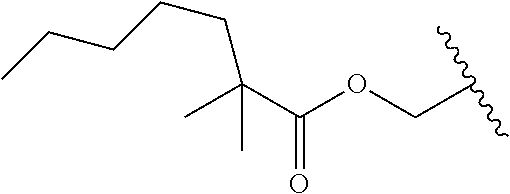
C00017

C00018

C00019

C00020

C00021

C00022

C00023

C00024
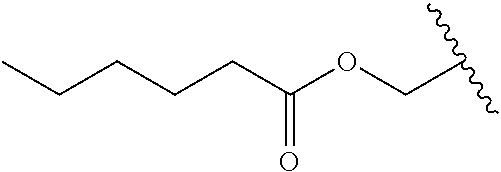
C00025

C00026

C00027

C00028

C00029

C00030

C00031

C00032

C00033

C00034

C00035

C00036

C00037

C00038

C00039

C00040

C00041

C00042

C00043
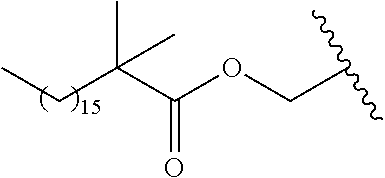
C00044

C00045

C00046

C00047

C00048

C00049

C00050

C00051

C00052

C00053

C00054

C00055

C00056

C00057

C00058

C00059

C00060

C00061

C00062

C00063

C00064

C00065

C00066

C00067

C00068

C00069

C00070

C00071

C00072

C00073

C00074

C00075

C00076

C00077

C00078

C00079

C00080

C00081

C00082

C00083

C00084
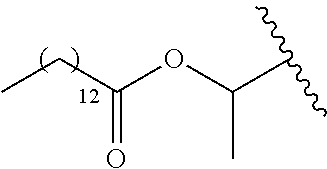
C00085

C00086

C00087

C00088

C00089

C00090

C00091

C00092

C00093

C00094

C00095

C00096

C00097

C00098

C00099

C00100

C00101

C00102

C00103

C00104

C00105

C00106

C00107
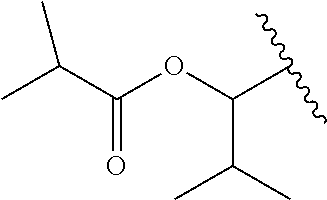
C00108

C00109
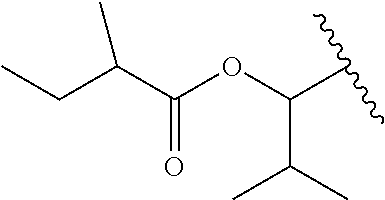
C00110

C00111

C00112

C00113

C00114

C00115

C00116

C00117

C00118
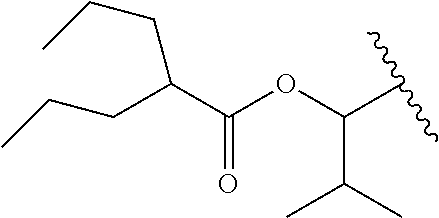
C00119

C00120

C00121

C00122

C00123

C00124

C00125

C00126

C00127

C00128

C00129

C00130

C00131

C00132

C00133

C00134

C00135

C00136

C00137

C00138

C00139
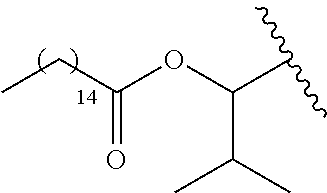
C00140

C00141

C00142

C00143

C00144

C00145

C00146

C00147

C00148

C00149

C00150

C00151

C00152

C00153

C00154

C00155

C00156

C00157
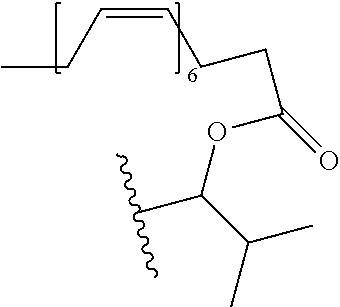
C00158

C00159

C00160

C00161

C00162

C00163

C00164

C00165

C00166

C00167

C00168

C00169

C00170

C00171

C00172

C00173

C00174

C00175

C00176

C00177

C00178

C00179

C00180

C00181

C00182

C00183

C00184

C00185

C00186

C00187

C00188

C00189

C00190

C00191

C00192

C00193

C00194

C00195

C00196

C00197
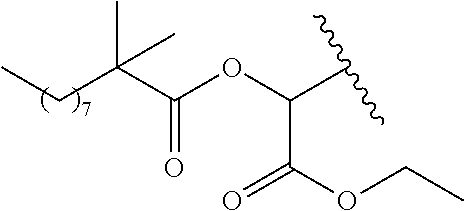
C00198

C00199

C00200

C00201

C00202

C00203

C00204

C00205

C00206

C00207

C00208

C00209

C00210

C00211

C00212

C00213

C00214

C00215

C00216

C00217

C00218

C00219

C00220

C00221

C00222

C00223

C00224

C00225

C00226

C00227

C00228

C00229

C00230

C00231

C00232

C00233

C00234
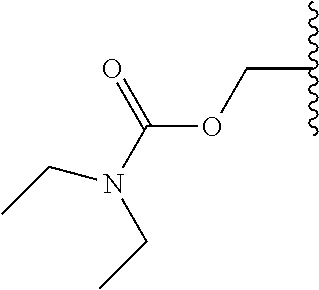
C00235

C00236

C00237

C00238

C00239

C00240

C00241

C00242

C00243

C00244

C00245

C00246

C00247

C00248
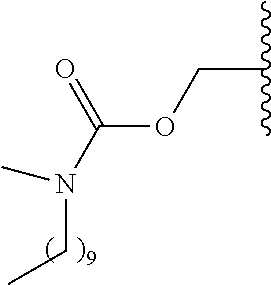
C00249

C00250

C00251

C00252

C00253

C00254
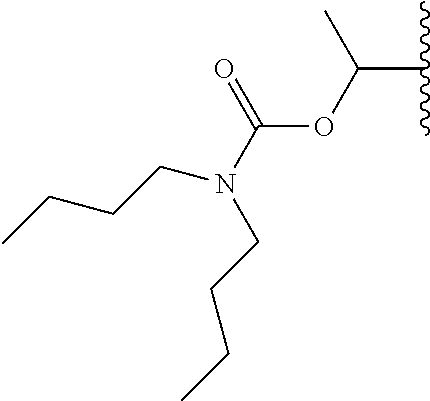
C00255

C00256

C00257

C00258

C00259
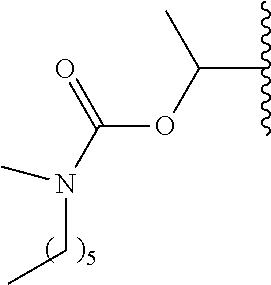
C00260

C00261

C00262

C00263

C00264

C00265

C00266

C00267

C00268

C00269

C00270

C00271

C00272

C00273

C00274

C00275

C00276

C00277

C00278

C00279

C00280

C00281

C00282

C00283

C00284

C00285

C00286

C00287

C00288

C00289

C00290

C00291

C00292

C00293

C00294

C00295

C00296

C00297

C00298

C00299

C00300

C00301

C00302

C00303
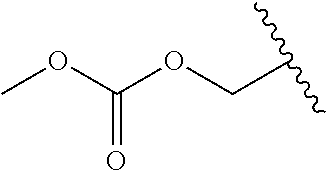
C00304

C00305

C00306

C00307

C00308

C00309

C00310

C00311

C00312

C00313

C00314

C00315

C00316

C00317
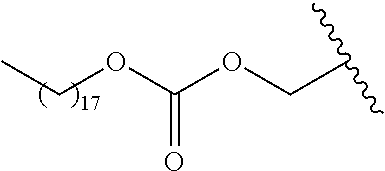
C00318

C00319

C00320

C00321

C00322
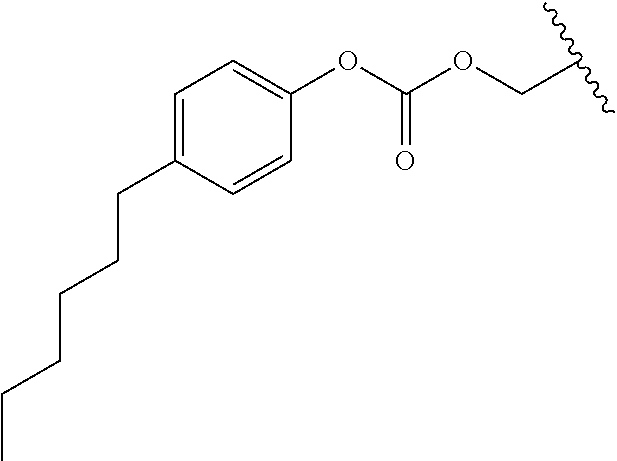
C00323

C00324

C00325

C00326

C00327

C00328

C00329

C00330

C00331

C00332

C00333

C00334

C00335

C00336

C00337

C00338

C00339

C00340

C00341

C00342

C00343

C00344

C00345

C00346

C00347

C00348

C00349

C00350

C00351

C00352

C00353

C00354

C00355

C00356

C00357

C00358

C00359

C00360

C00361

C00362

C00363

C00364

C00365

C00366
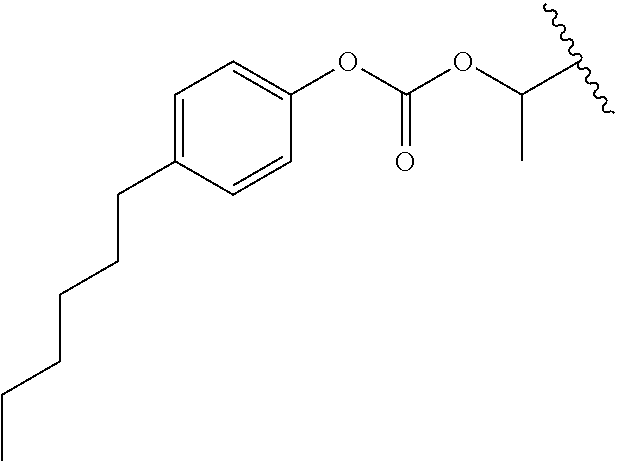
C00367

C00368

C00369

C00370
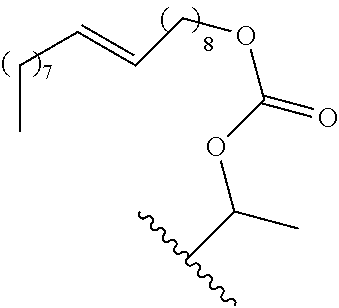
C00371

C00372

C00373

C00374
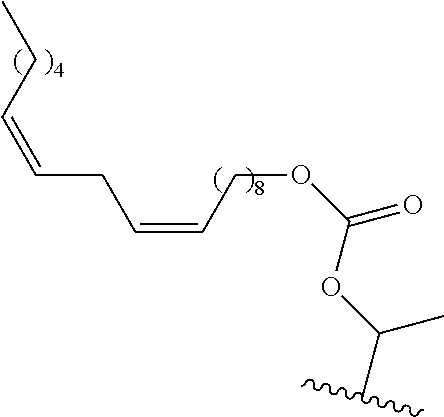
C00375

C00376
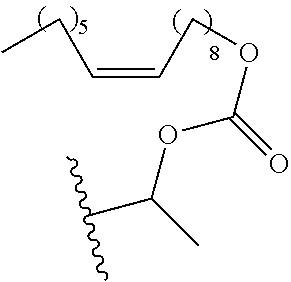
C00377
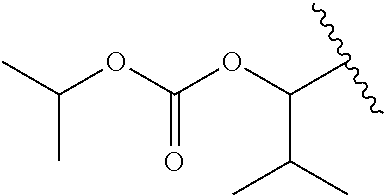
C00378

C00379

C00380

C00381

C00382

C00383

C00384

C00385

C00386

C00387

C00388

C00389

C00390

C00391

C00392

C00393

C00394

C00395

C00396

C00397

C00398

C00399

C00400

C00401

C00402

C00403

C00404

C00405

C00406

C00407

C00408

C00409
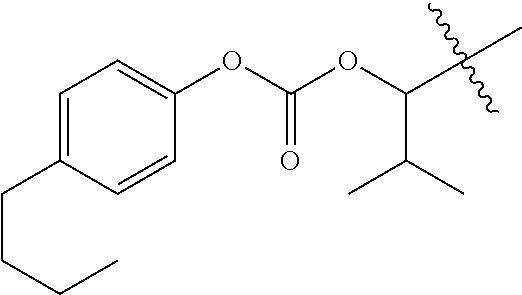
C00410

C00411

C00412

C00413

C00414

C00415

C00416

C00417

C00418

C00419

C00420

C00421

C00422

C00423

C00424

C00425
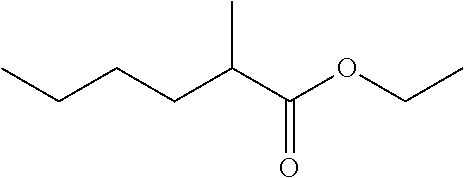
C00426

C00427

C00428

C00429

C00430

C00431

C00432

C00433

C00434

C00435

C00436

C00437

C00438

C00439

C00440

C00441

C00442

C00443

C00444

C00445

C00446

C00447

C00448

C00449

C00450
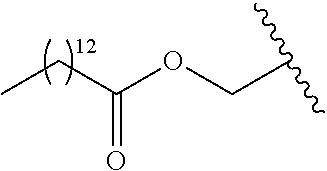
C00451

C00452

C00453

C00454

C00455

C00456

C00457

C00458

C00459

C00460
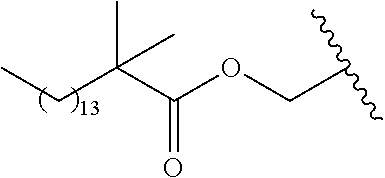
C00461

C00462

C00463

C00464

C00465

C00466

C00467

C00468

C00469

C00470

C00471

C00472

C00473

C00474

C00475

C00476

C00477

C00478

C00479

C00480

C00481

C00482

C00483

C00484

C00485
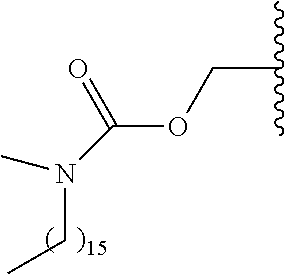
C00486

C00487

C00488

C00489

C00490

C00491

C00492

C00493
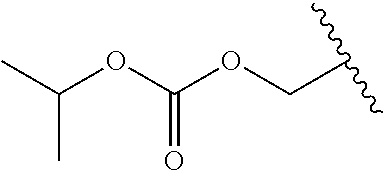
C00494

C00495

C00496

C00497

C00498

C00499
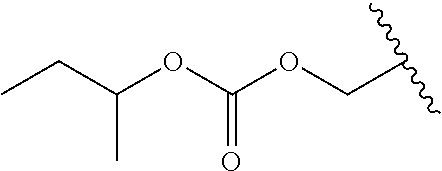
C00500

C00501

C00502

C00503

C00504

C00505

C00506

C00507

C00508

C00509

C00510

C00511

C00512

C00513

C00514

C00515

C00516

C00517

C00518

C00519

C00520

C00521

C00522
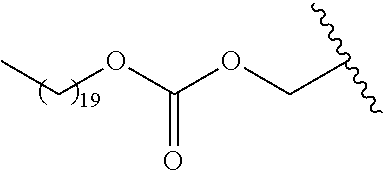
C00523

C00524

C00525

C00526
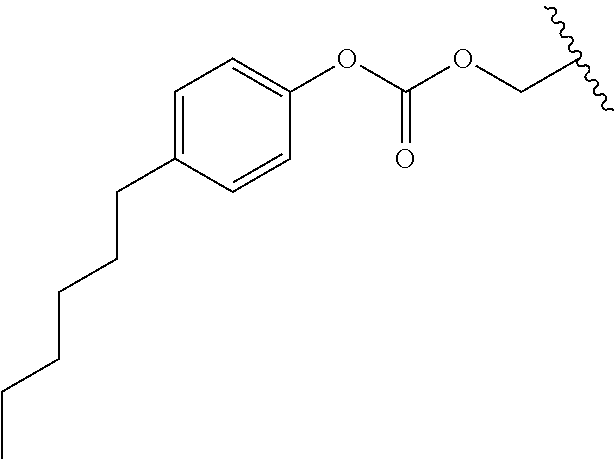
C00527
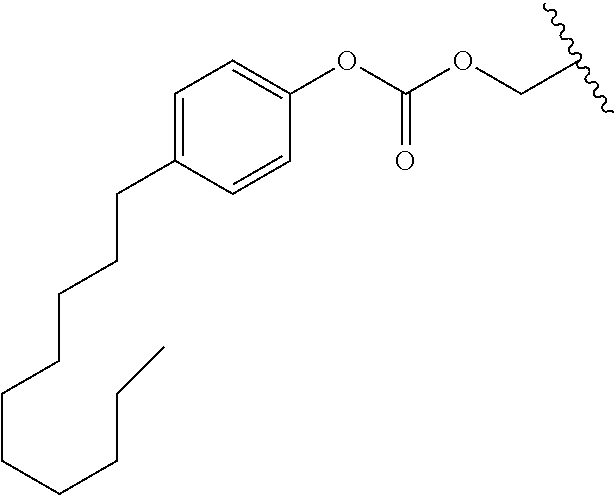
C00528

C00529

C00530

C00531

C00532

C00533

C00534

C00535

C00536

C00537

C00538
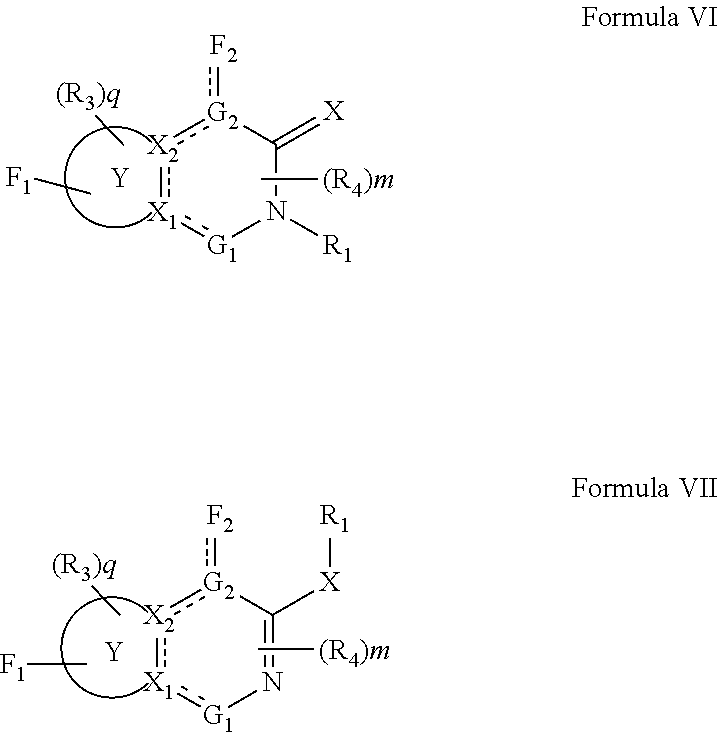
C00539

C00540

C00541

C00542

C00543

C00544

C00545

C00546
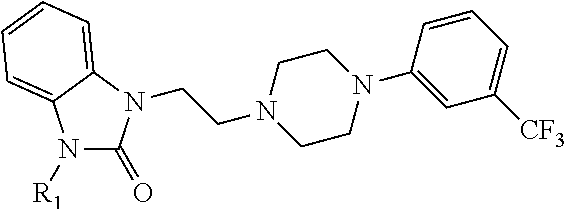
C00547

C00548

C00549
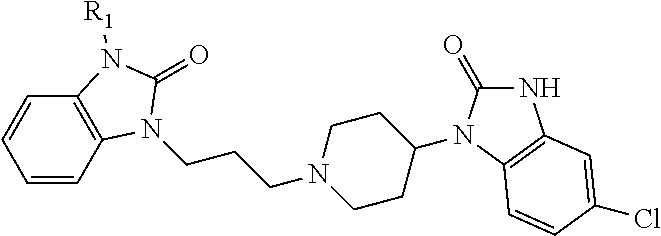
C00550

C00551

C00552

C00553

C00554

C00555

C00556

C00557

C00558

C00559

C00560

C00561

C00562
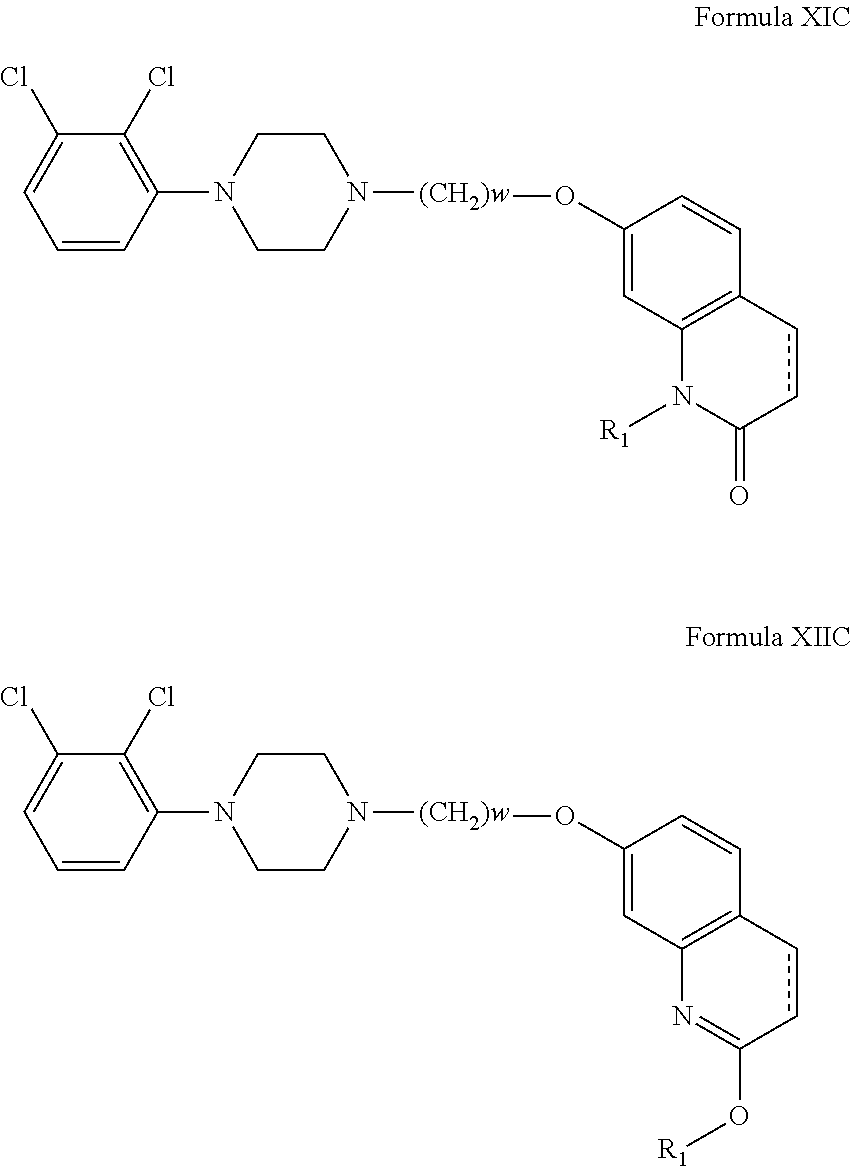
C00563

C00564

C00565

C00566

C00567

C00568

C00569

C00570

C00571

C00572

C00573

C00574

C00575

C00576

C00577
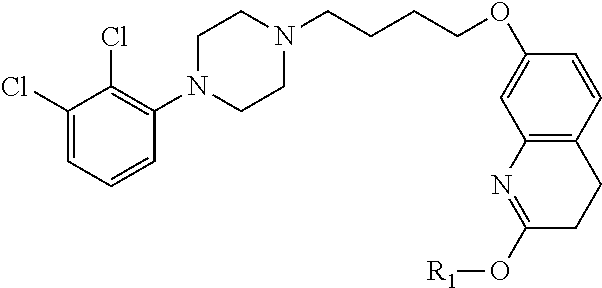
C00578

C00579

C00580

C00581

C00582

C00583

C00584

C00585

C00586

C00587

C00588

C00589

C00590

C00591

C00592

C00593

C00594

C00595

C00596
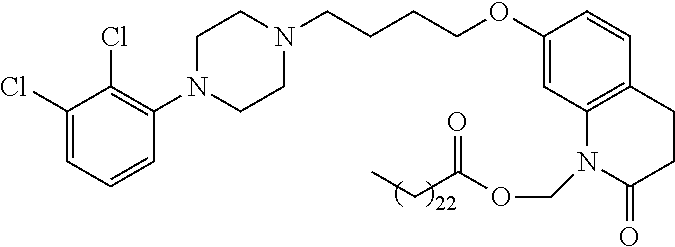
C00597

C00598

C00599

C00600

C00601

C00602

C00603

C00604

C00605

C00606

C00607

C00608
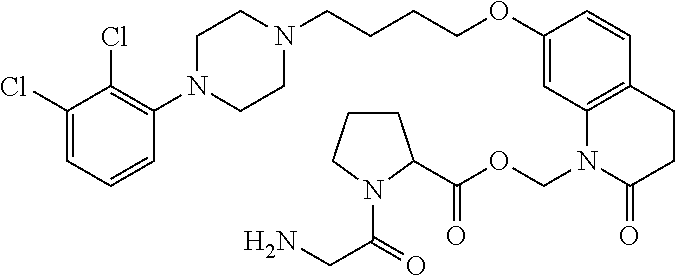
C00609

C00610

C00611
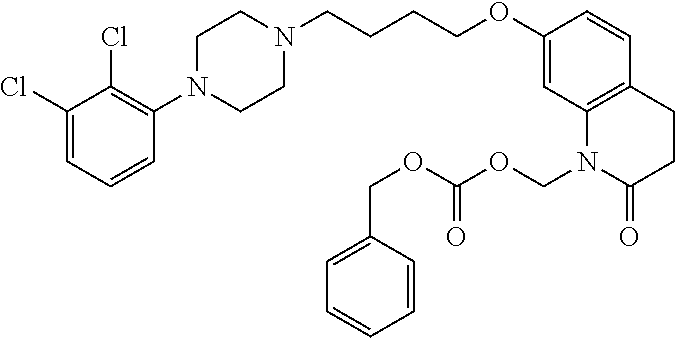
C00612

C00613

C00614

C00615

C00616

C00617

C00618

C00619

C00620

C00621

C00622

C00623

C00624
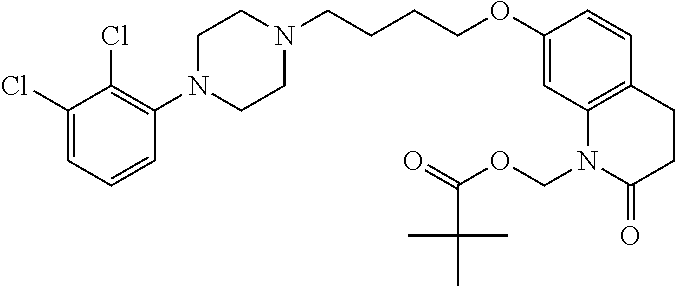
C00625

C00626

C00627

C00628

C00629

C00630

C00631

C00632

C00633
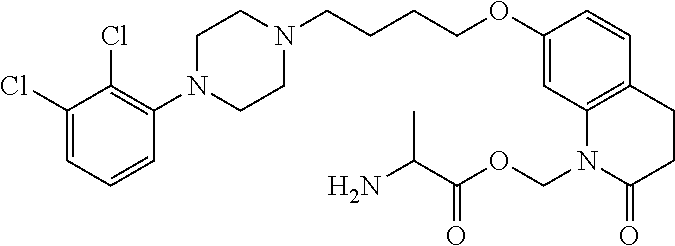
C00634

C00635

C00636

C00637

C00638

C00639

C00640

C00641

C00642

C00643
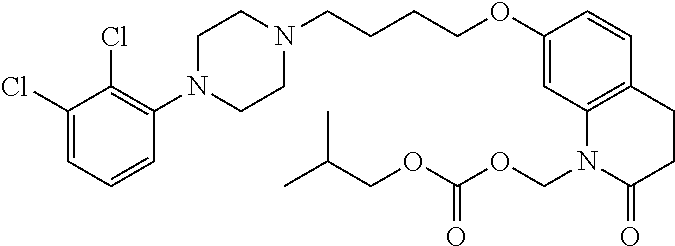
C00644

C00645

C00646

C00647

C00648

C00649

C00650
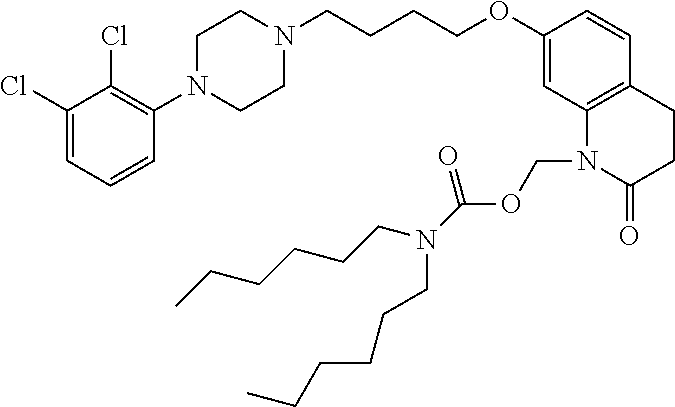
C00651

C00652

C00653

C00654

C00655

C00656

C00657
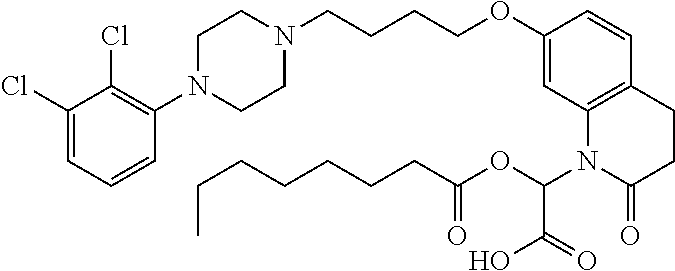
C00658

C00659

C00660
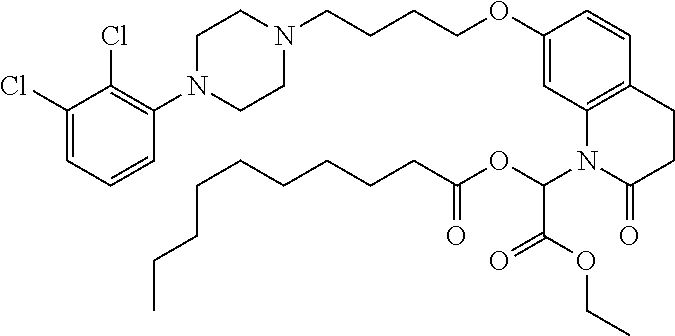
C00661

C00662

C00663

C00664

C00665

C00666

C00667

C00668

C00669
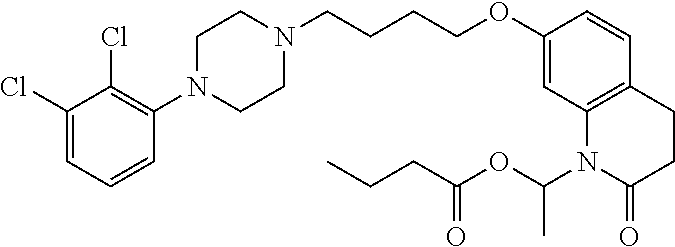
C00670

C00671

C00672

C00673

C00674

C00675

C00676

C00677

C00678

C00679

C00680

C00681

C00682

C00683

C00684

C00685

C00686

C00687

C00688

C00689

C00690

C00691

C00692

C00693

C00694

C00695

C00696

C00697

C00698

C00699

C00700

C00701

C00702
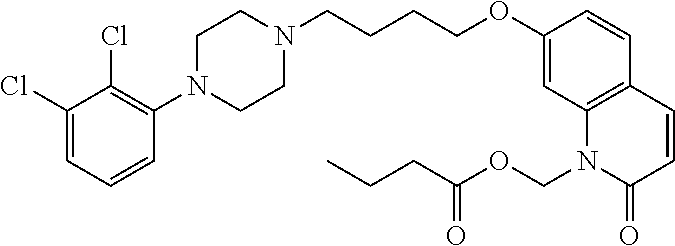
C00703
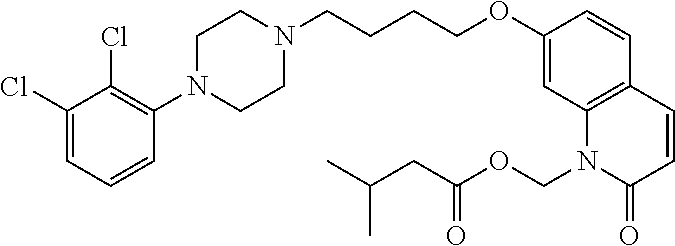
C00704

C00705

C00706

C00707

C00708

C00709

C00710

C00711

C00712

C00713
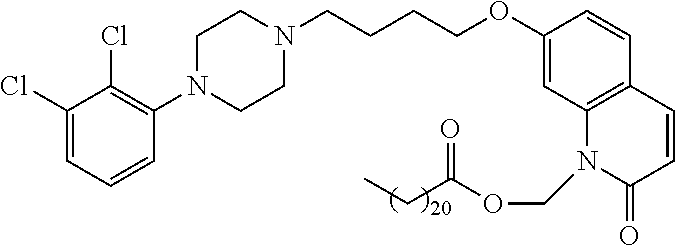
C00714

C00715

C00716

C00717
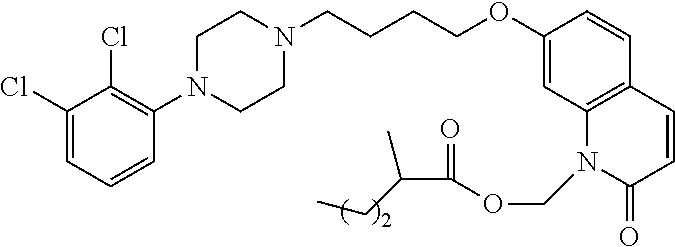
C00718

C00719

C00720

C00721

C00722

C00723
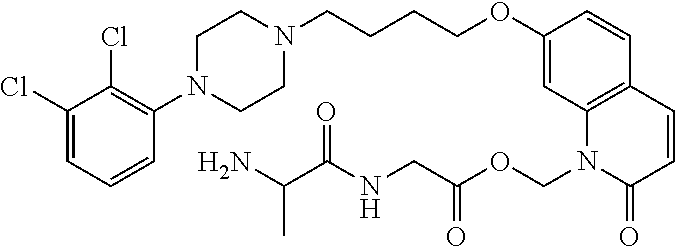
C00724
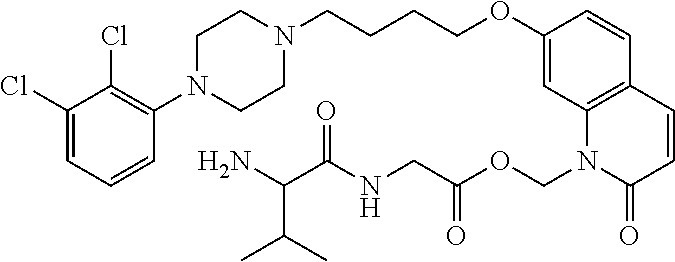
C00725

C00726

C00727

C00728

C00729
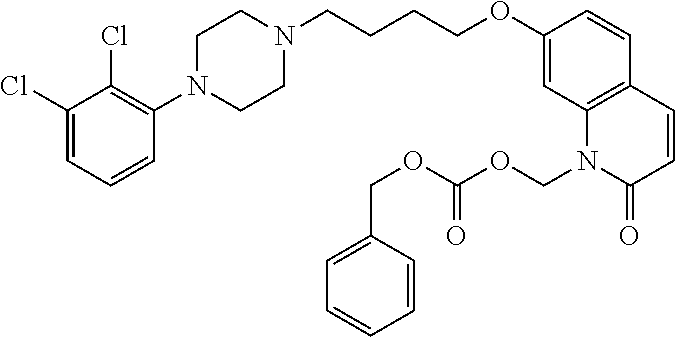
C00730

C00731

C00732

C00733

C00734

C00735

C00736

C00737

C00738

C00739

C00740

C00741

C00742
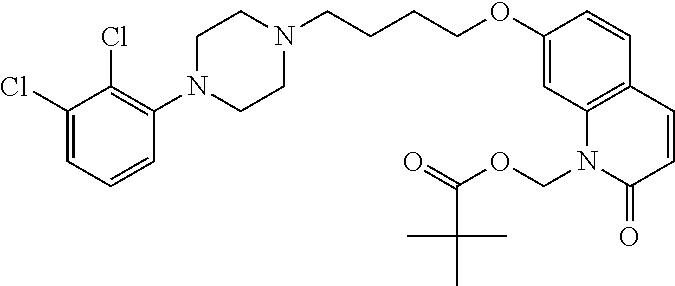
C00743

C00744

C00745

C00746
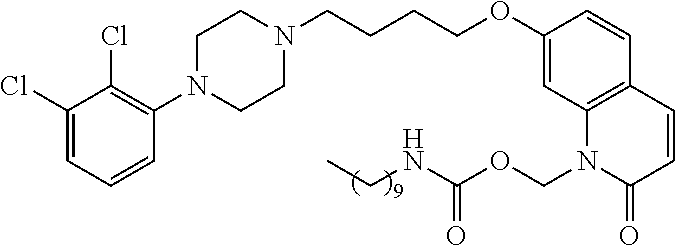
C00747
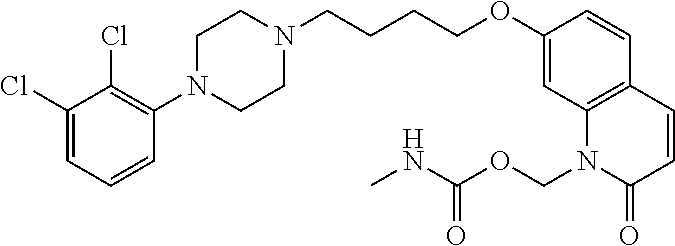
C00748

C00749

C00750

C00751

C00752

C00753

C00754

C00755

C00756

C00757

C00758

C00759

C00760

C00761

C00762

C00763

C00764

C00765

C00766

C00767

C00768

C00769

C00770

C00771

C00772

C00773

C00774

C00775

C00776

C00777

C00778

C00779

C00780

C00781

C00782

C00783

C00784

C00785

C00786

C00787

C00788

C00789

C00790

C00791

C00792

C00793

C00794

C00795

C00796

C00797

C00798

C00799
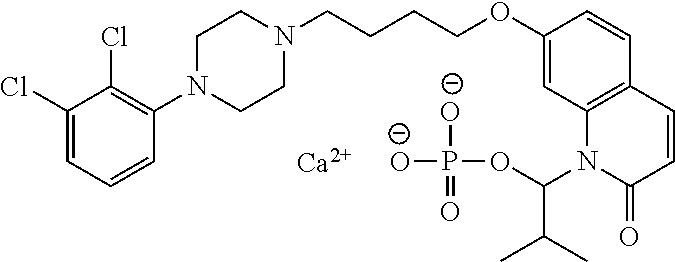
C00800

C00801

C00802

C00803
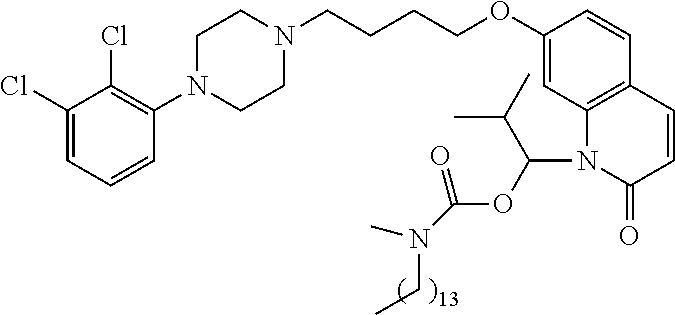
C00804

C00805

C00806

C00807

C00808

C00809

C00810

C00811

C00812

C00813

C00814

C00815

C00816

C00817

C00818

C00819

C00820

C00821

C00822

C00823

C00824

C00825

C00826

C00827

C00828

C00829

C00830

C00831

C00832

C00833

C00834

C00835

C00836

C00837

C00838

C00839

C00840

C00841

C00842

C00843

C00844

C00845

C00846

C00847

C00848

C00849

C00850

C00851

C00852

C00853

C00854
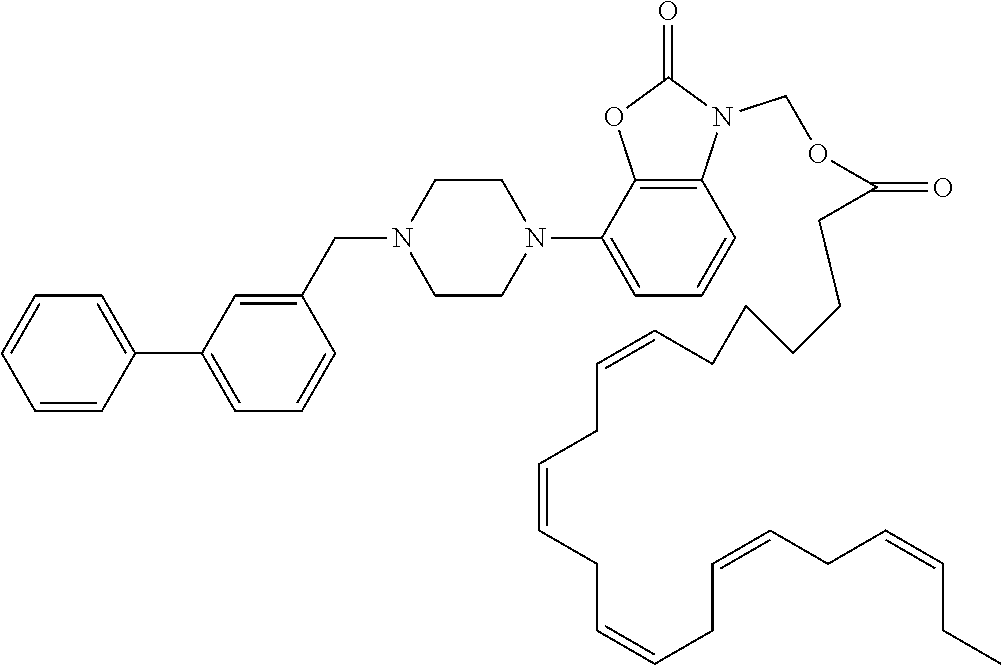
C00855

C00856

C00857

C00858

C00859

C00860

C00861

C00862

C00863

C00864

C00865

C00866

C00867

C00868

C00869

C00870
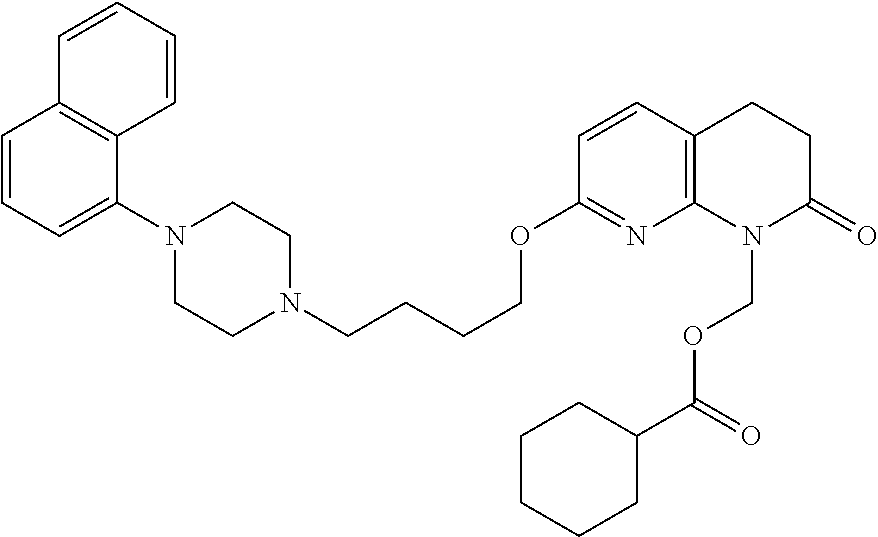
C00871

C00872

C00873

C00874

C00875

C00876

C00877

C00878

C00879
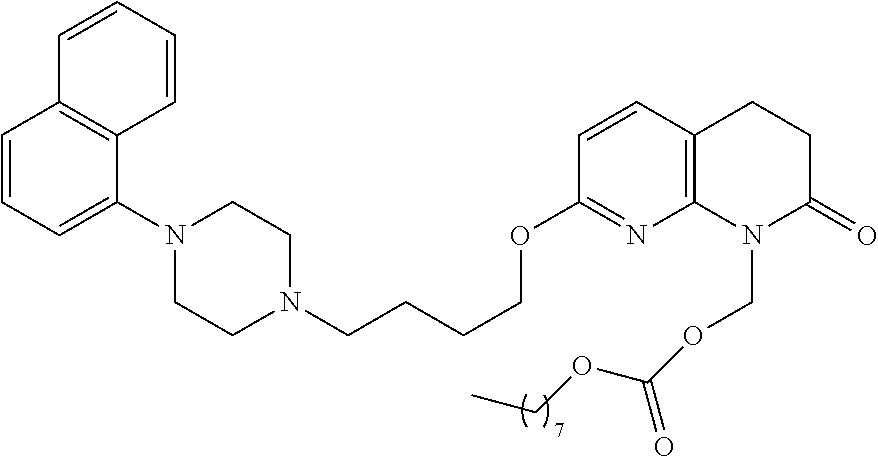
C00880

C00881

C00882

C00883

C00884

C00885

C00886

C00887

C00888

C00889

C00890

C00891

C00892

C00893

C00894

C00895

C00896

C00897

C00898

C00899

C00900

C00901

C00902

C00903

C00904

C00905

C00906

C00907

C00908

C00909

C00910

C00911

C00912

C00913

C00914

C00915

C00916

C00917

C00918

C00919

C00920

C00921

C00922

C00923

C00924

C00925

C00926

C00927

C00928

C00929

C00930

C00931

C00932

C00933

C00934
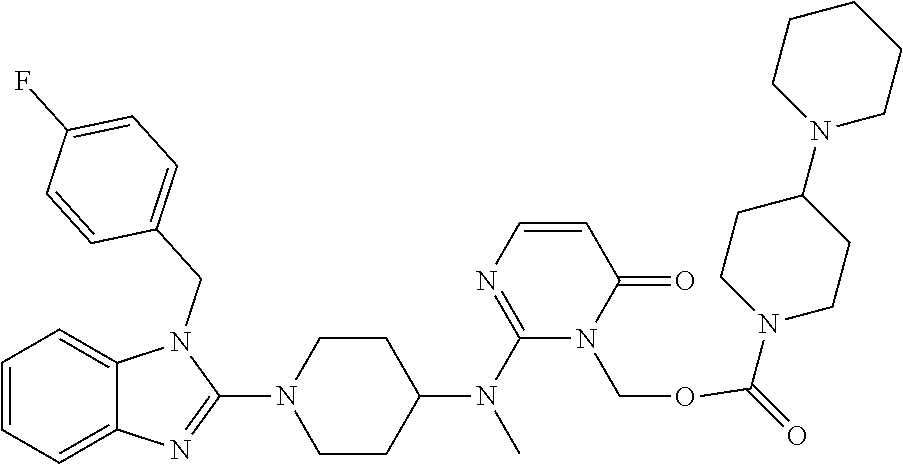
C00935

C00936

C00937

C00938

C00939

C00940

C00941

C00942

C00943

C00944

C00945

C00946

C00947

C00948

C00949

C00950

C00951

C00952

C00953

C00954

C00955

C00956

C00957

C00958

C00959
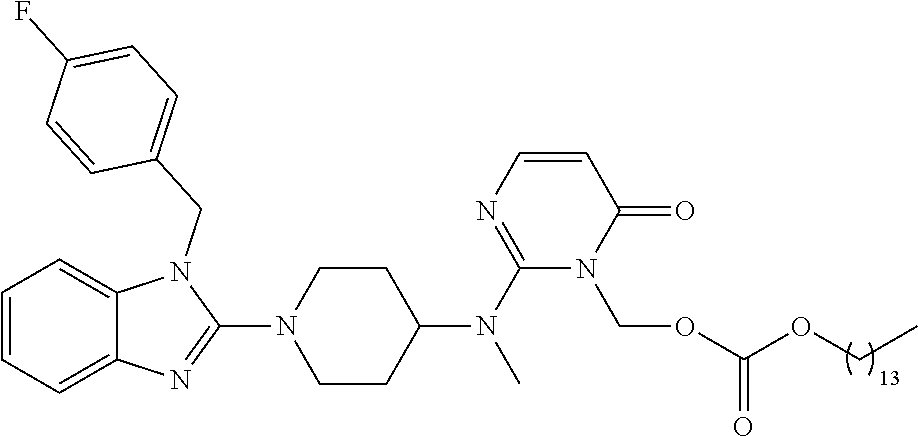
C00960

C00961

C00962

C00963

C00964

C00965
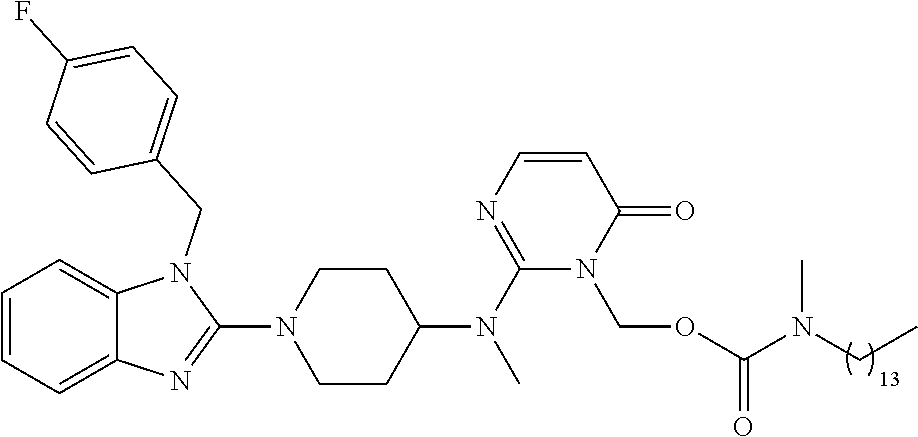
C00966

C00967

C00968

C00969

C00970

C00971

C00972

C00973
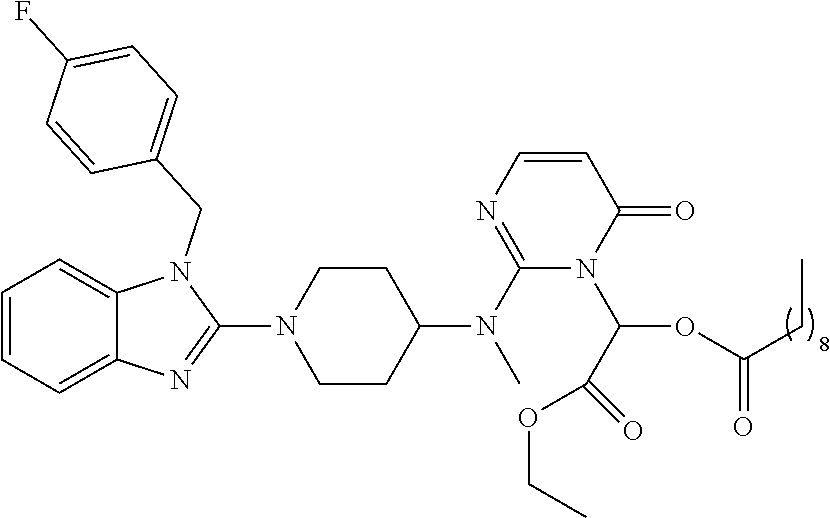
C00974

C00975

C00976

C00977

C00978

C00979

C00980

C00981
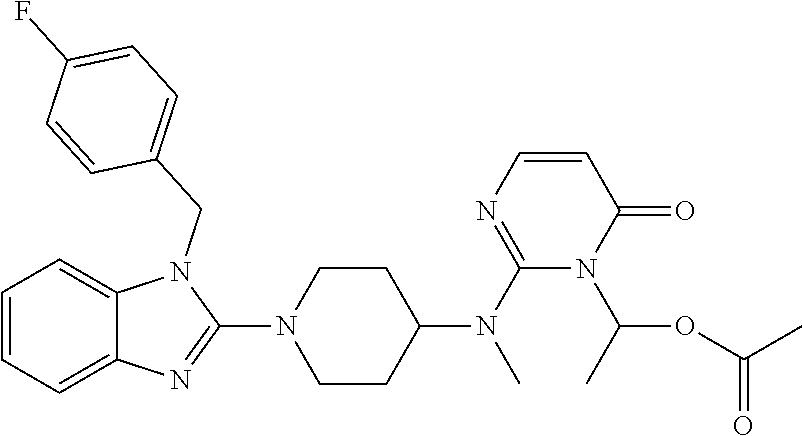
C00982

C00983

C00984

C00985

C00986

C00987

C00988

C00989

C00990
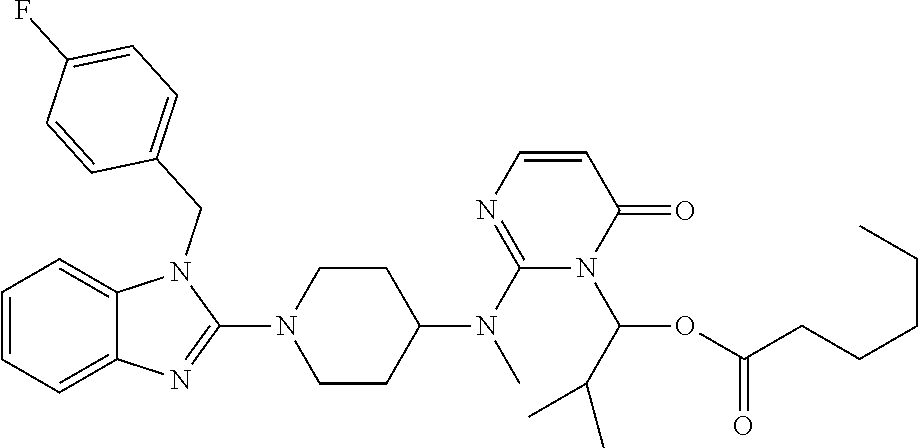
C00991

C00992

C00993

C00994

C00995

C00996

C00997

C00998

C00999

C01000

C01001

C01002

C01003

C01004

C01005

C01006

C01007

C01008

C01009

C01010
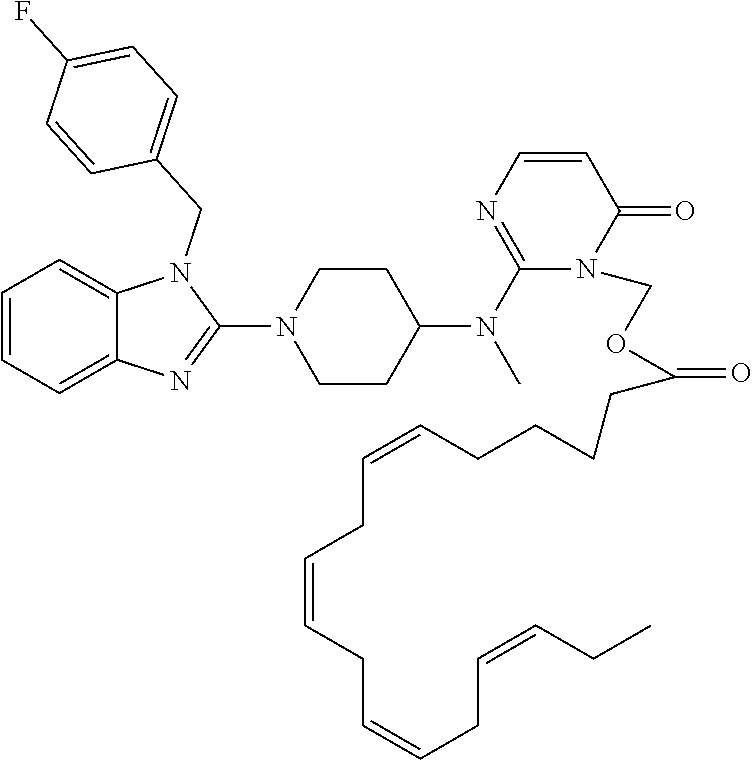
C01011

C01012

C01013

C01014

C01015

C01016

C01017

C01018

C01019

C01020

C01021

C01022

C01023

C01024

C01025

C01026

C01027

C01028

C01029

C01030

C01031

C01032

C01033

C01034

C01035

C01036

C01037

C01038

C01039

C01040

C01041
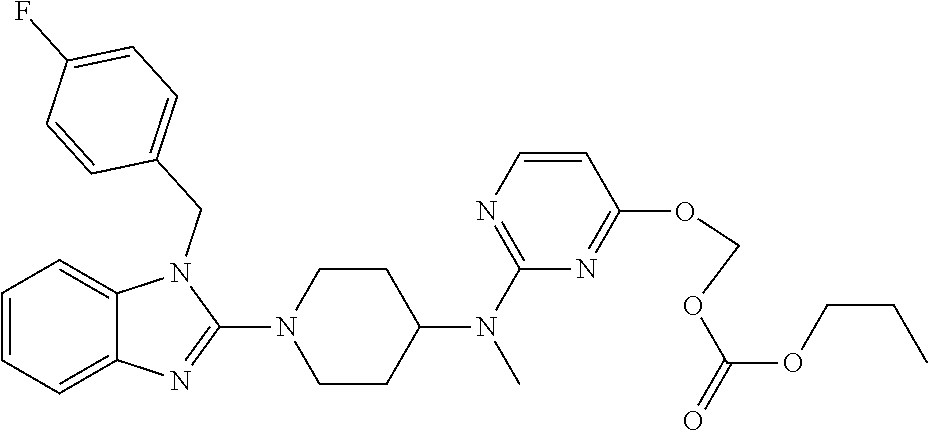
C01042

C01043

C01044

C01045
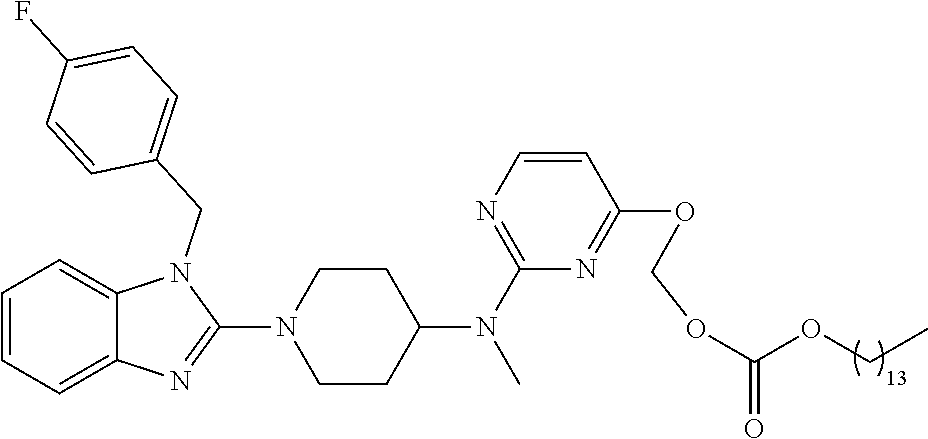
C01046

C01047

C01048

C01049

C01050

C01051

C01052

C01053

C01054

C01055

C01056
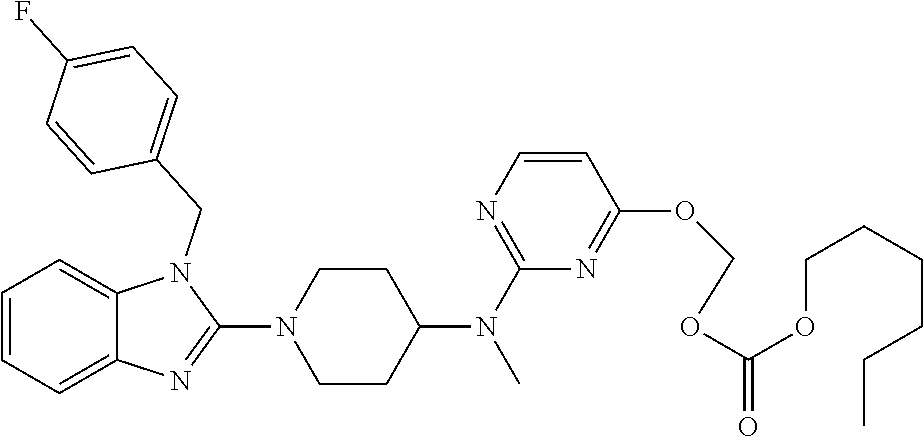
C01057

C01058

C01059

C01060

C01061

C01062

C01063

C01064

C01065

C01066

C01067

C01068

C01069

C01070

C01071

C01072

C01073

C01074

C01075

C01076

C01077

C01078

C01079

C01080

C01081

C01082

C01083

C01084

C01085

C01086
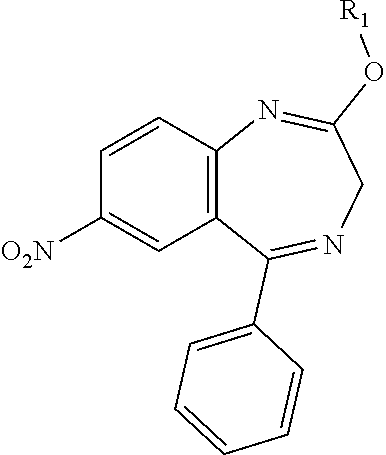
C01087

C01088

C01089

C01090
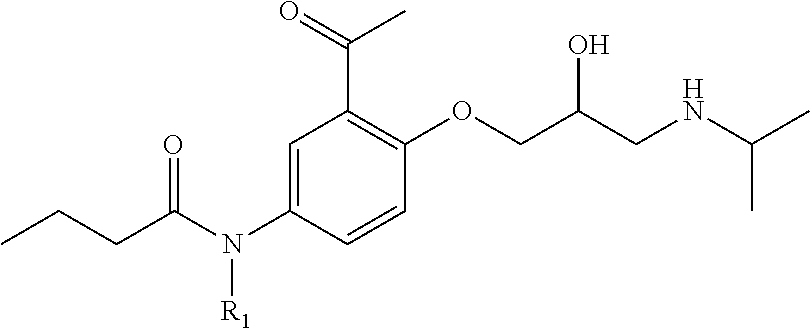
C01091

C01092

C01093

C01094

C01095

C01096
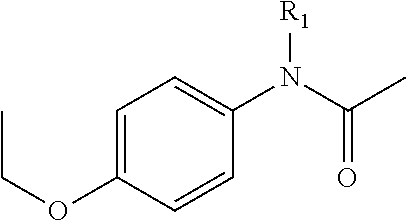
C01097

C01098

C01099

C01100

C01101

C01102

C01103

C01104

C01105

C01106
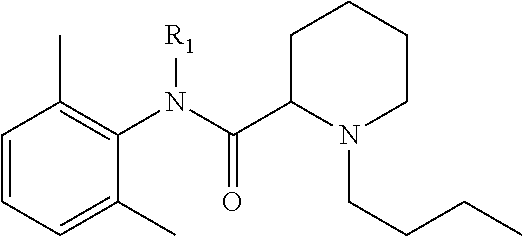
C01107

C01108

C01109
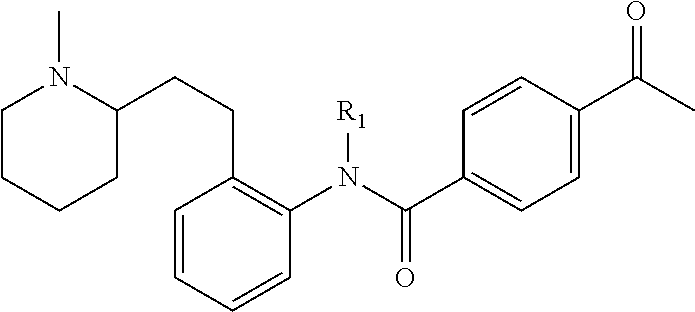
C01110

C01111

C01112

C01113

C01114

C01115

C01116

C01117

C01118
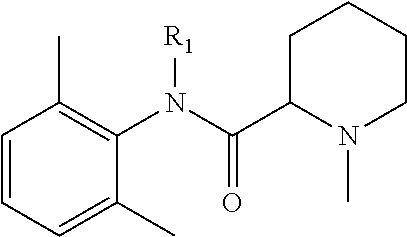
C01119
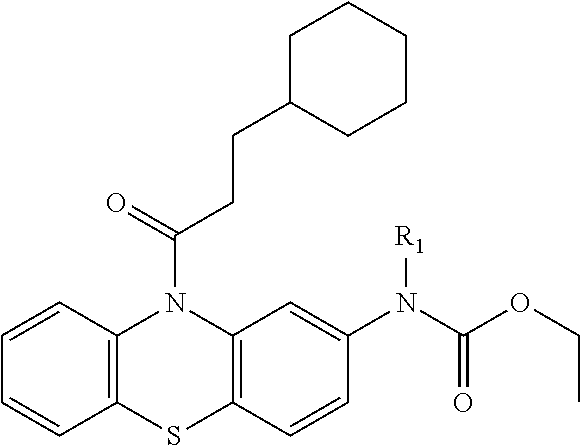
C01120

C01121

C01122

C01123

C01124

C01125

C01126

C01127

C01128

C01129

C01130

C01131

C01132

C01133

C01134

C01135

C01136

C01137

C01138

C01139

C01140

C01141

C01142

C01143

C01144

C01145

C01146

C01147

C01148

C01149

C01150

C01151

C01152

C01153

C01154

C01155

C01156

C01157

C01158

C01159

C01160

C01161

C01162

C01163

C01164
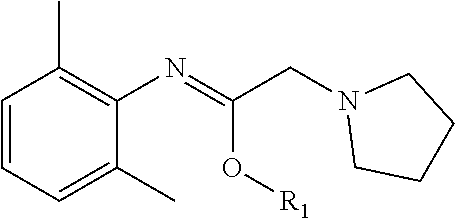
C01165

C01166

C01167

C01168

C01169
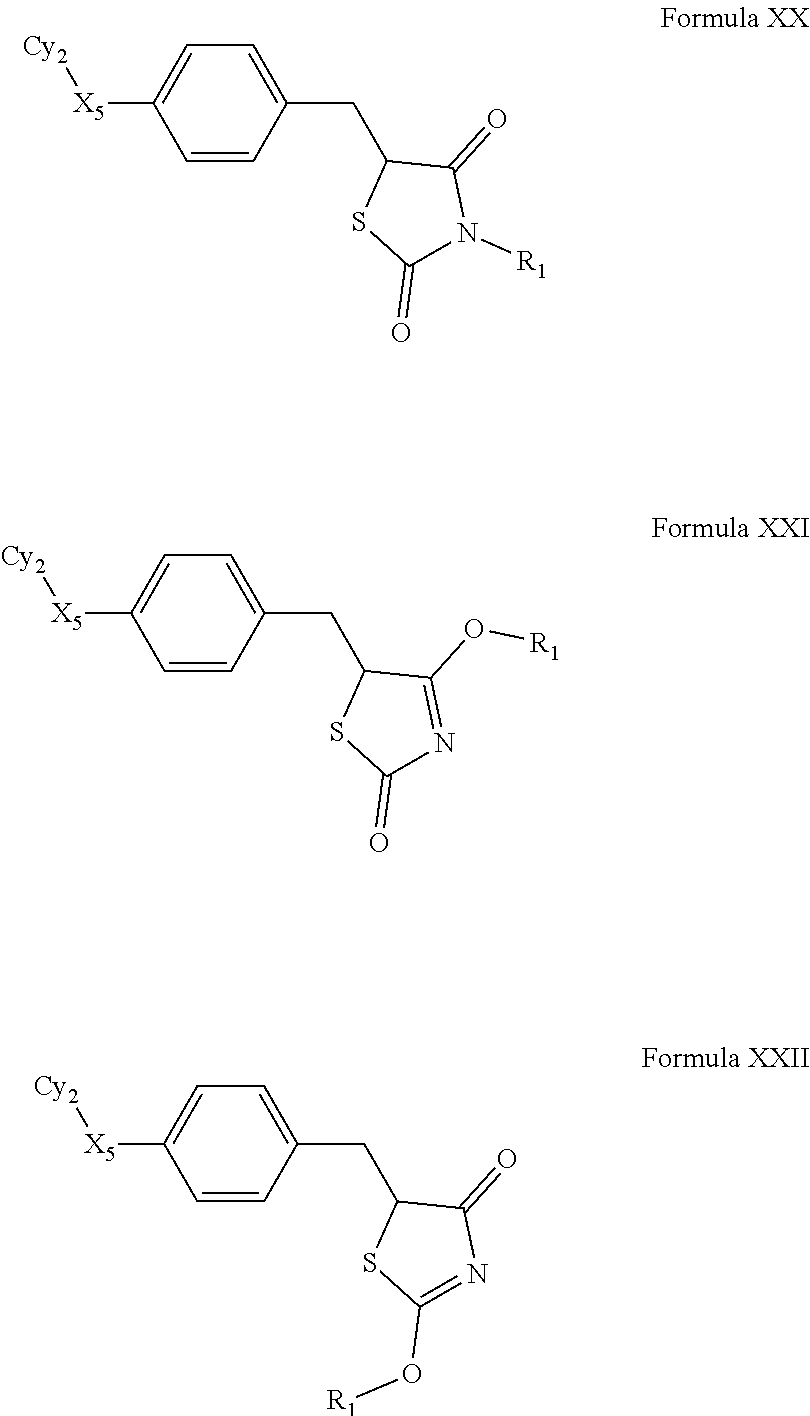
C01170

C01171

C01172

C01173

C01174

C01175

C01176

C01177

C01178

C01179

C01180

C01181

C01182

C01183

C01184

C01185

C01186

C01187

C01188

C01189

C01190

C01191

C01192

C01193

C01194

C01195

C01196

C01197

C01198

C01199

C01200

C01201

C01202

C01203

C01204

C01205

C01206

C01207

C01208

C01209

C01210
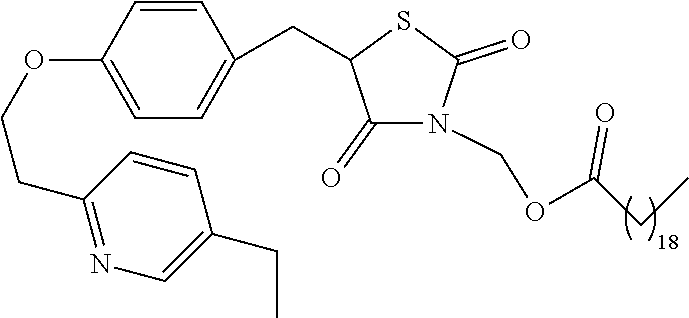
C01211
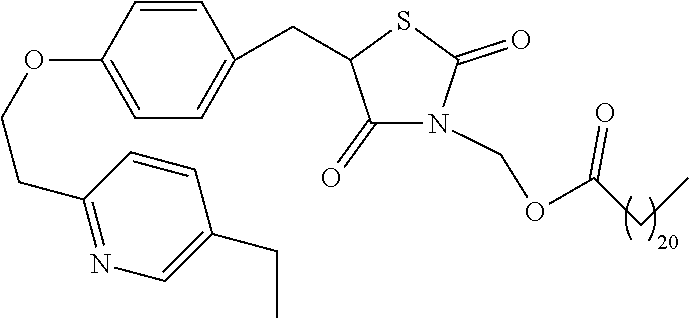
C01212

C01213

C01214

C01215

C01216

C01217

C01218

C01219

C01220

C01221

C01222

C01223

C01224

C01225

C01226

C01227

C01228

C01229

C01230

C01231

C01232

C01233

C01234

C01235

C01236

C01237

C01238

C01239
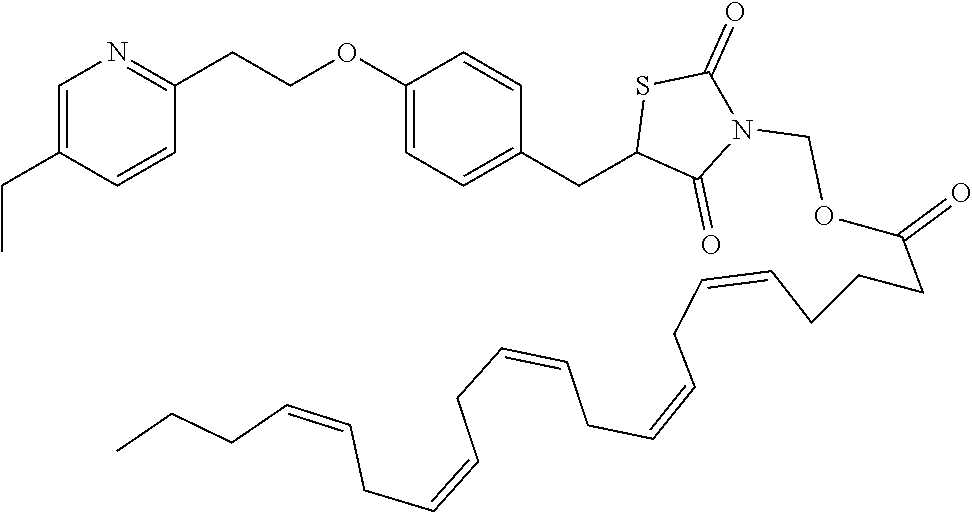
C01240

C01241

C01242

C01243

C01244

C01245

C01246

C01247

C01248

C01249
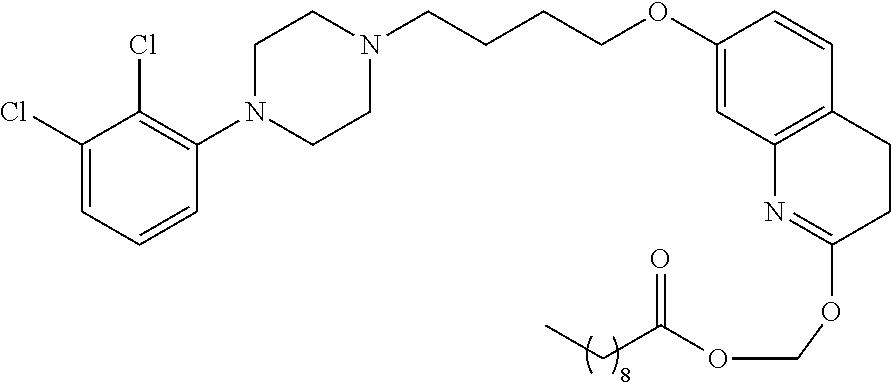
C01250

C01251

C01252

C01253

C01254

C01255

C01256

C01257

C01258

C01259

C01260

C01261

C01262

C01263

C01264

C01265

C01266

C01267

C01268

C01269

C01270

C01271

C01272

C01273

C01274

C01275

C01276
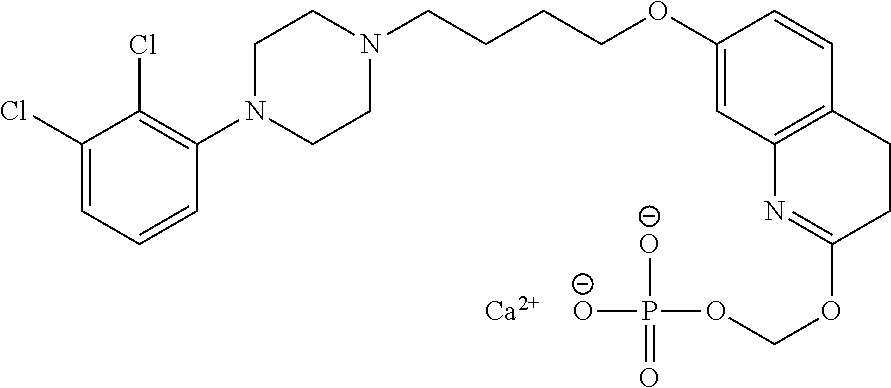
C01277

C01278

C01279
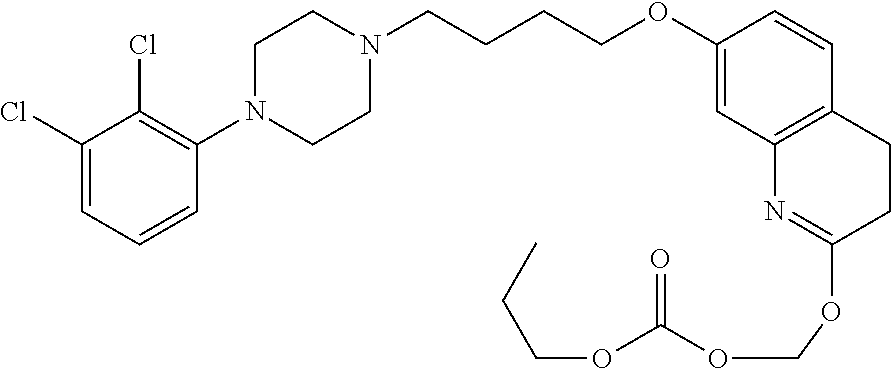
C01280

C01281

C01282

C01283

C01284

C01285

C01286

C01287

C01288

C01289

C01290

C01291

C01292

C01293

C01294

C01295

C01296

C01297

C01298

C01299

C01300

C01301

C01302

C01303

C01304

C01305

C01306

C01307

C01308

C01309

C01310

C01311

C01312

C01313

C01314

C01315

C01316

C01317

C01318

C01319

C01320
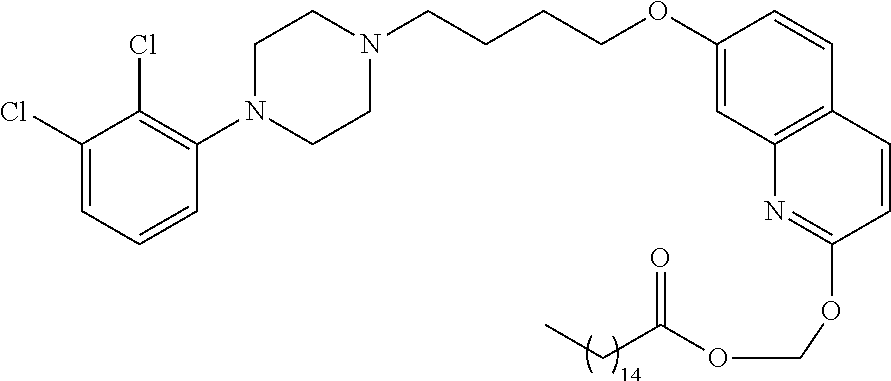
C01321

C01322

C01323

C01324

C01325

C01326

C01327

C01328

C01329

C01330

C01331

C01332

C01333

C01334
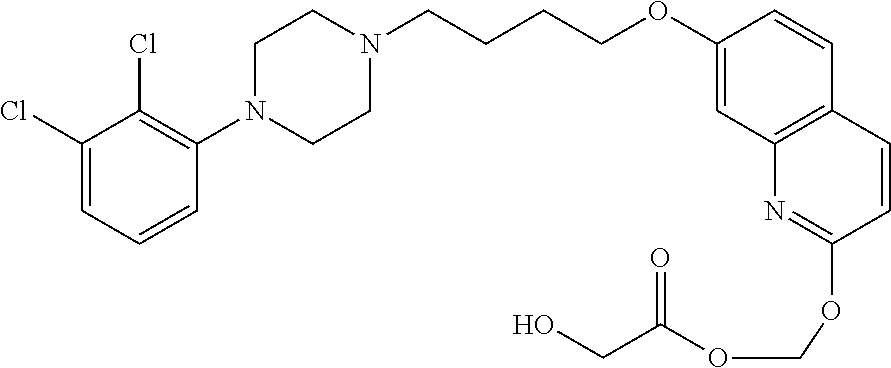
C01335

C01336

C01337

C01338

C01339

C01340

C01341

C01342

C01343

C01344

C01345

C01346
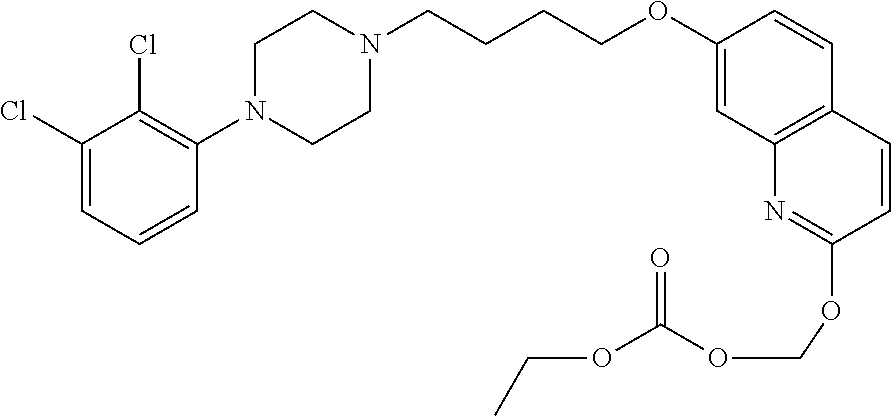
C01347

C01348

C01349

C01350

C01351

C01352

C01353

C01354

C01355

C01356
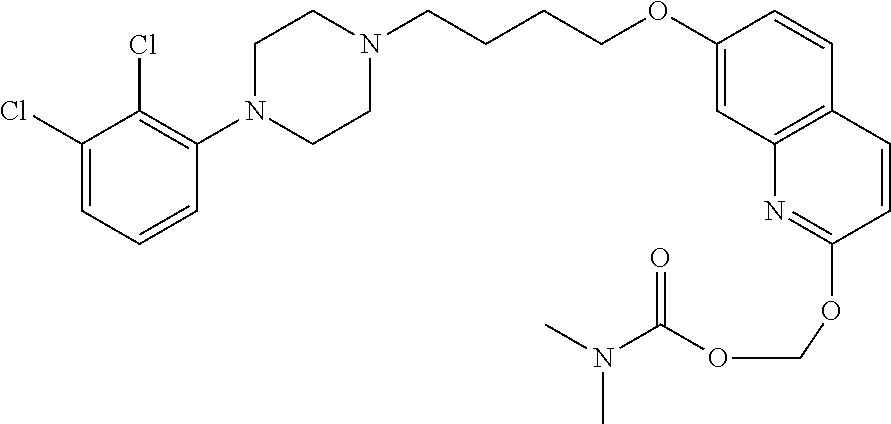
C01357

C01358

C01359

C01360

C01361
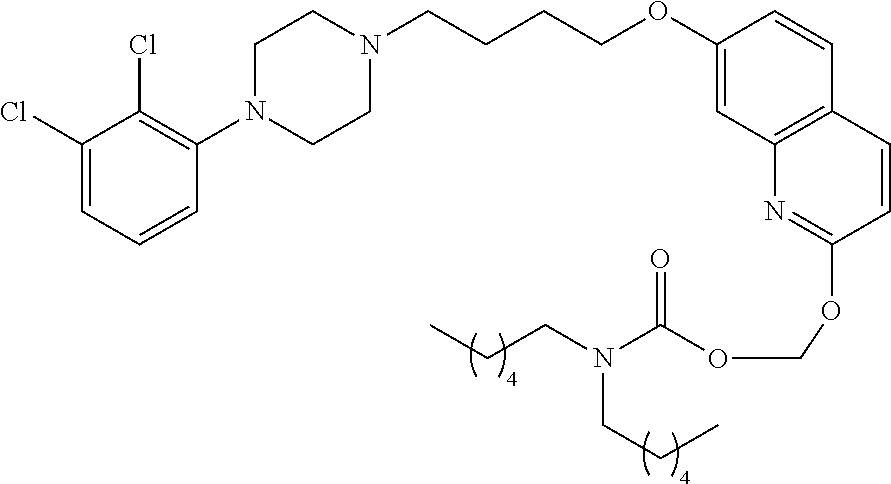
C01362

C01363
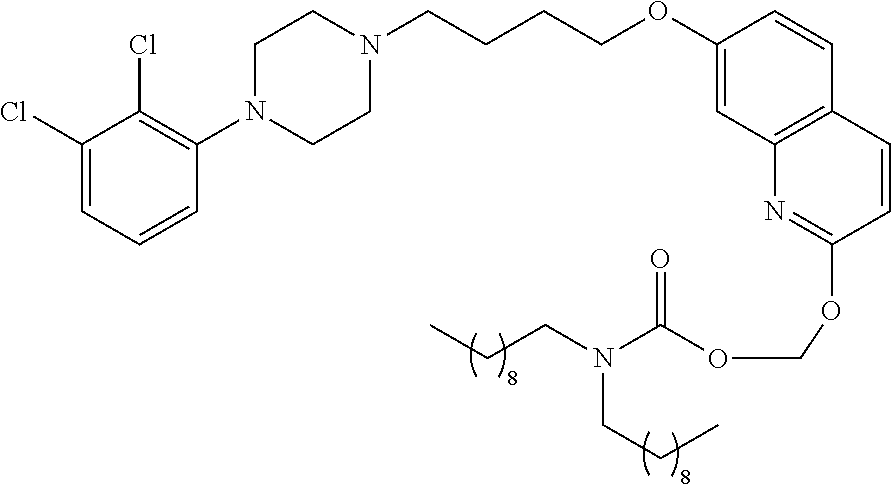
C01364

C01365

C01366

C01367

C01368

C01369

C01370
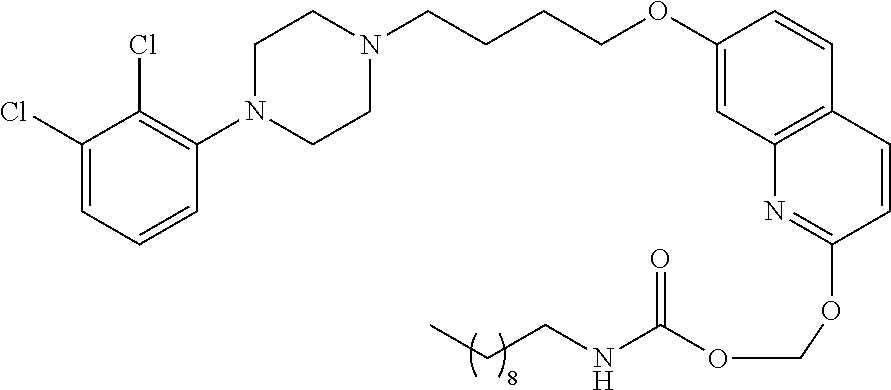
C01371

C01372

C01373

C01374

C01375

C01376

C01377

C01378

C01379

C01380

C01381

C01382

C01383

C01384

C01385

C01386

C01387

C01388

C01389

C01390

C01391

C01392

C01393

C01394

C01395

C01396

C01397

C01398

C01399

C01400

C01401

C01402

C01403

C01404

C01405

C01406

C01407

C01408

C01409

C01410

C01411

C01412

C01413

C01414

C01415
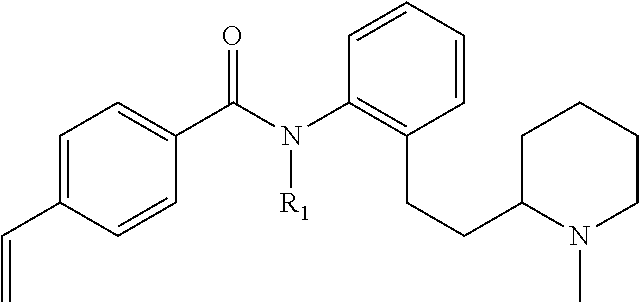
C01416

C01417

C01418

C01419

C01420

C01421

C01422

C01423

C01424

C01425

C01426

C01427
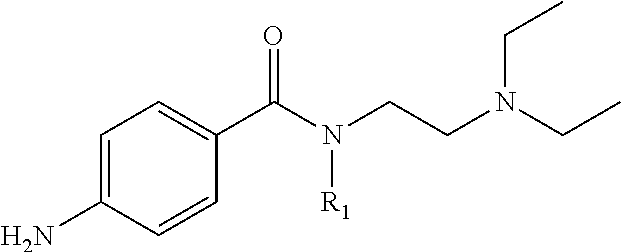
C01428

C01429
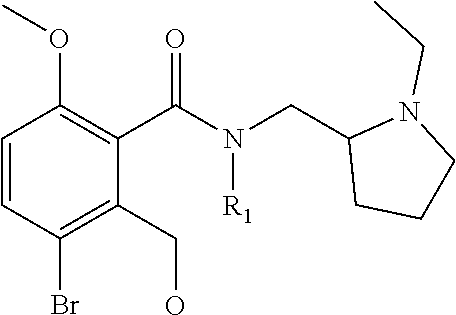
C01430

C01431

C01432

C01433

C01434

C01435

C01436

C01437

C01438

C01439
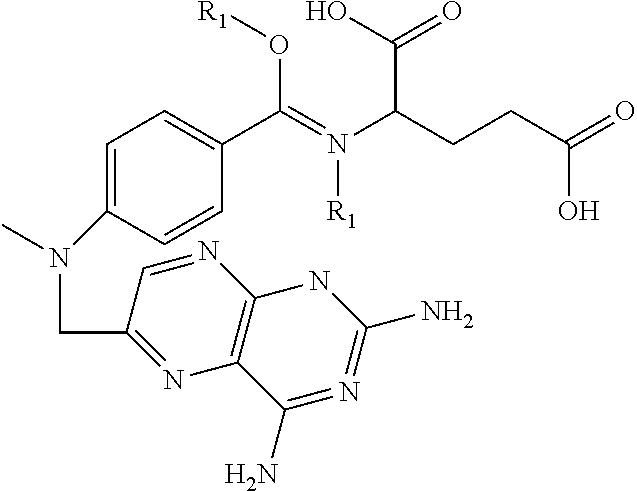
C01440

C01441

C01442

C01443

C01444

C01445

C01446
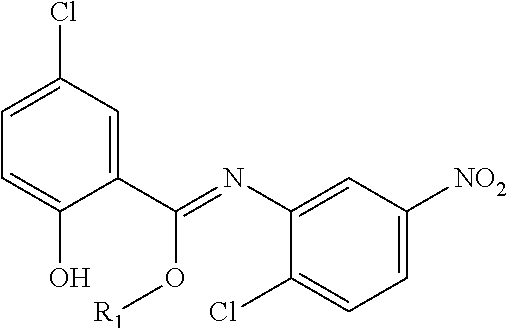
C01447

C01448

C01449
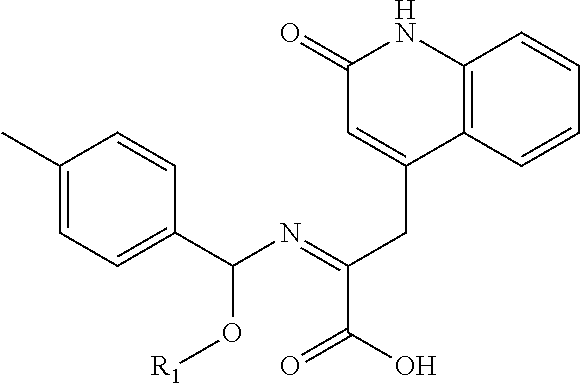
C01450

C01451

C01452
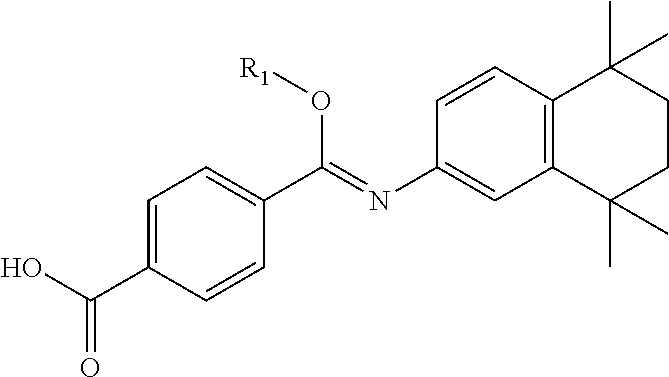
C01453

C01454
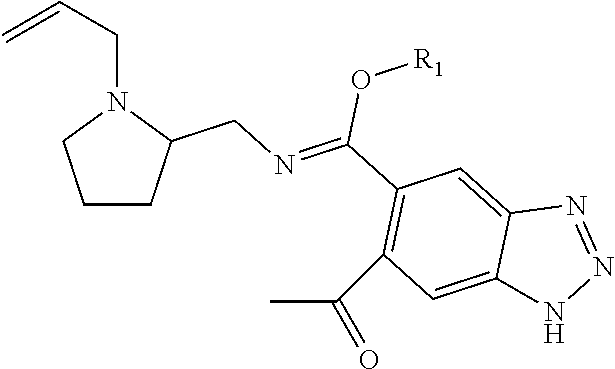
C01455

C01456

C01457

C01458

C01459

C01460

C01461

C01462

C01463

C01464

C01465
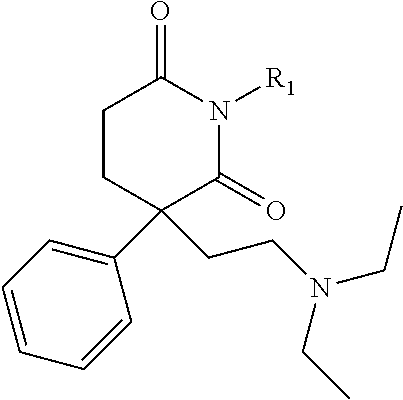
C01466

C01467

C01468

C01469

C01470

C01471

C01472

C01473

C01474

C01475

C01476

C01477

C01478

C01479

C01480

C01481

C01482

C01483

C01484

C01485

C01486

C01487

C01488

C01489

C01490

C01491

C01492

C01493

C01494

C01495
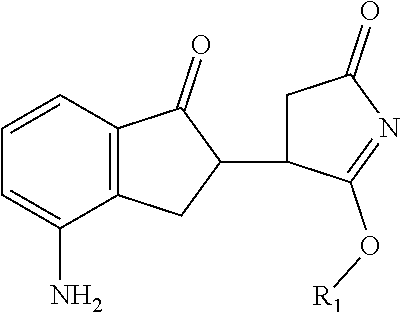
C01496

C01497

C01498
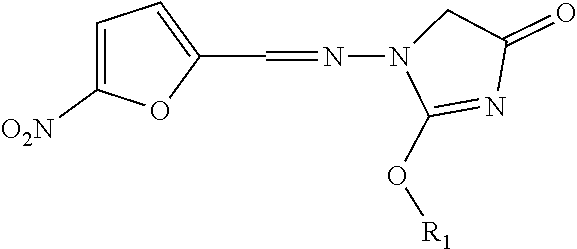
C01499

C01500
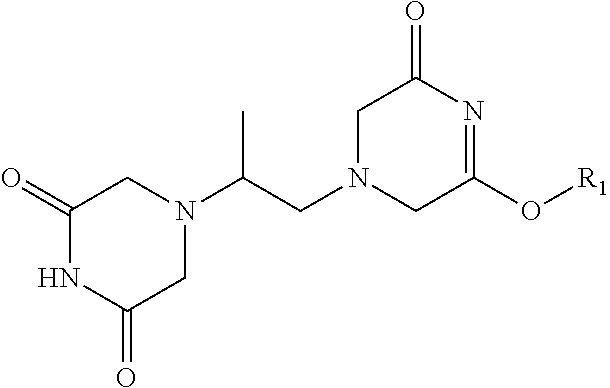
C01501

C01502

C01503

C01504

C01505
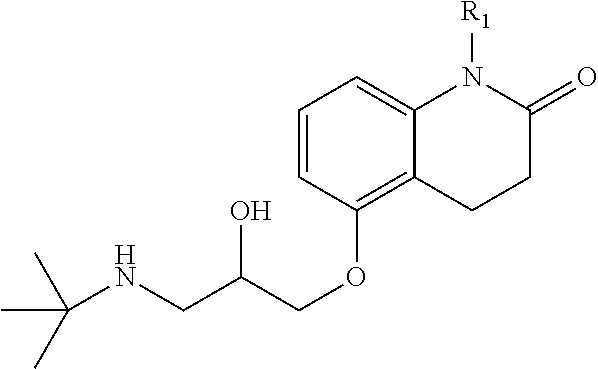
C01506

C01507

C01508

C01509

C01510

C01511

C01512

C01513

C01514

C01515

C01516

C01517

C01518

C01519

C01520

C01521

C01522

C01523
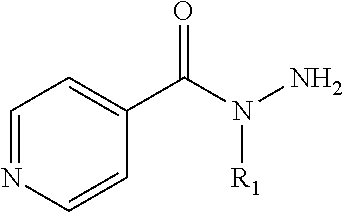
C01524

C01525

C01526
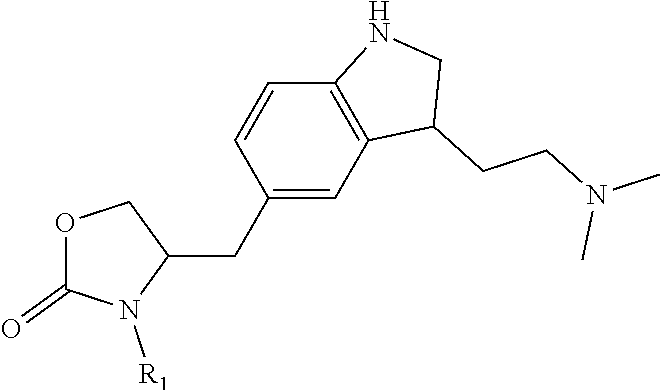
C01527

C01528

C01529
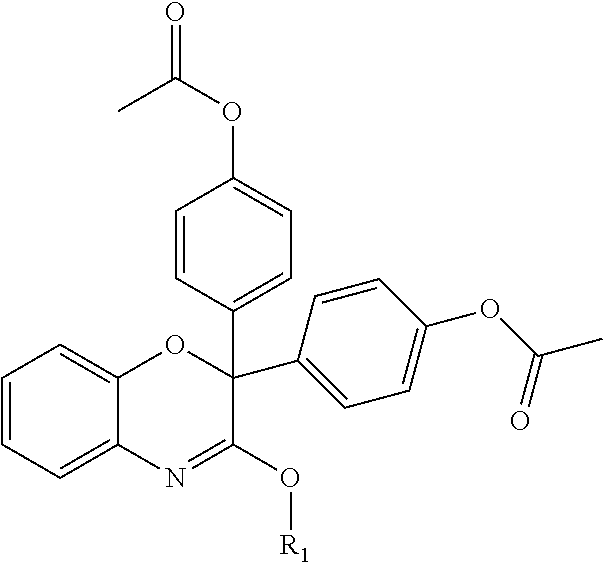
C01530

C01531

C01532

C01533

C01534

C01535

C01536

C01537

C01538

C01539

C01540

C01541

C01542

C01543

C01544

C01545

C01546

C01547

C01548

C01549

C01550

C01551

C01552

C01553

C01554

C01555

C01556

C01557

C01558

C01559

C01560

C01561

C01562

C01563

C01564

C01565

C01566

C01567

C01568

C01569

C01570

C01571

C01572

C01573

C01574

C01575

C01576

C01577

C01578

C01579

C01580
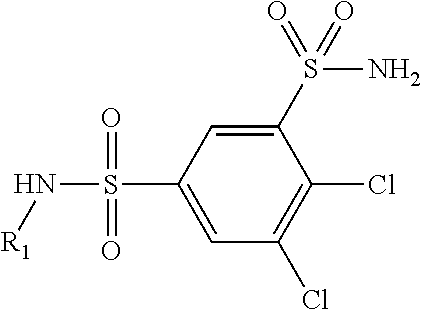
C01581

C01582

C01583

C01584

C01585

C01586

C01587
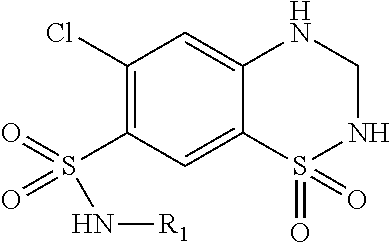
C01588

C01589

C01590

C01591

C01592

C01593

C01594

C01595

C01596

C01597

C01598
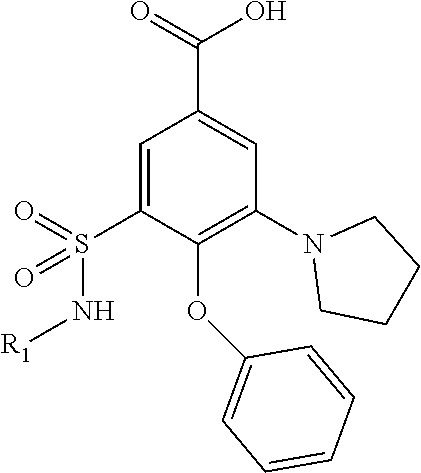
C01599

C01600

C01601

C01602

C01603

C01604

C01605

C01606

C01607

C01608

C01609

C01610

C01611

C01612

C01613
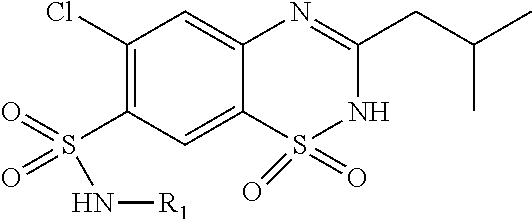
C01614

C01615

C01616

C01617

C01618

C01619

C01620

C01621

C01622

C01623

C01624

C01625

C01626

C01627

C01628

C01629

C01630
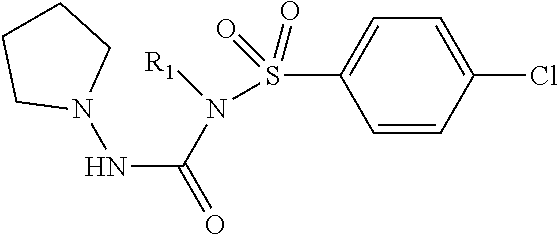
C01631

C01632

C01633

C01634

C01635

C01636

C01637

C01638

C01639

C01640

C01641

C01642

C01643

C01644

C01645
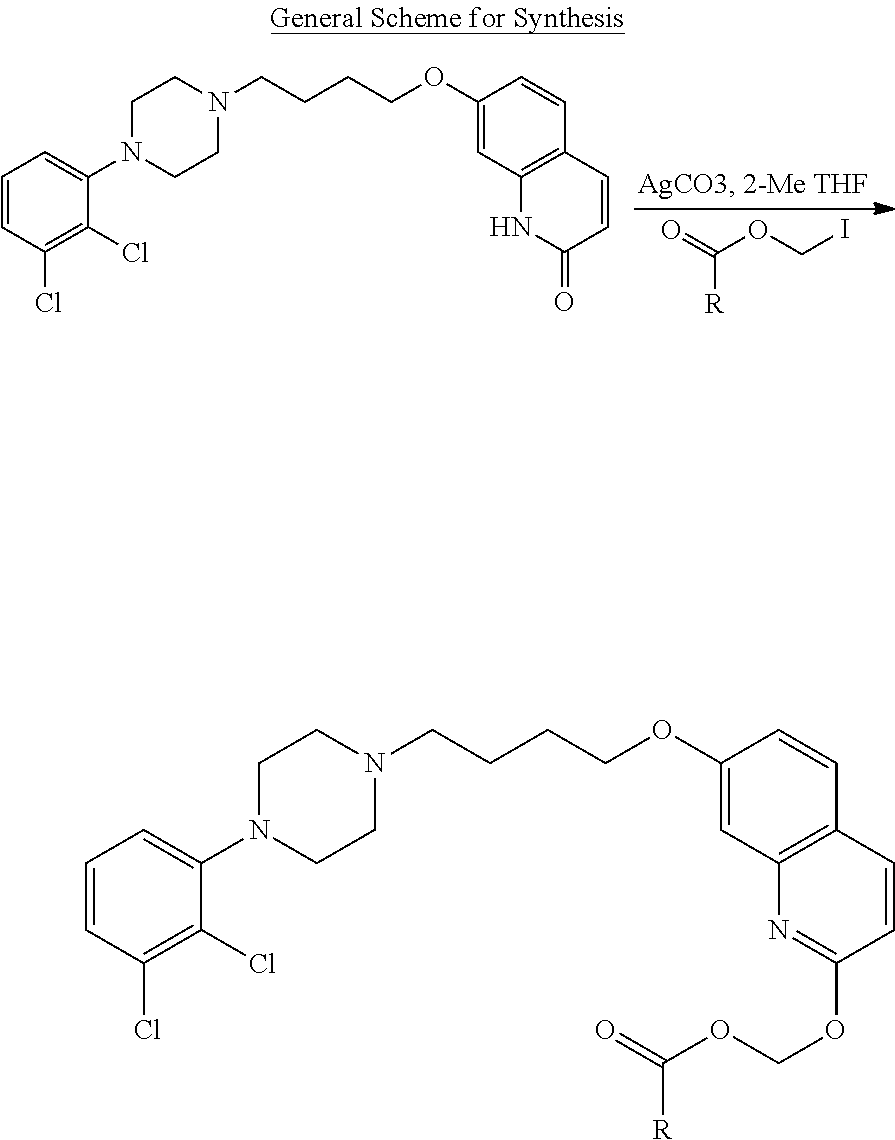
C01646

C01647

C01648

C01649

C01650

C01651

C01652

C01653

C01654

C01655

C01656

C01657

D00001
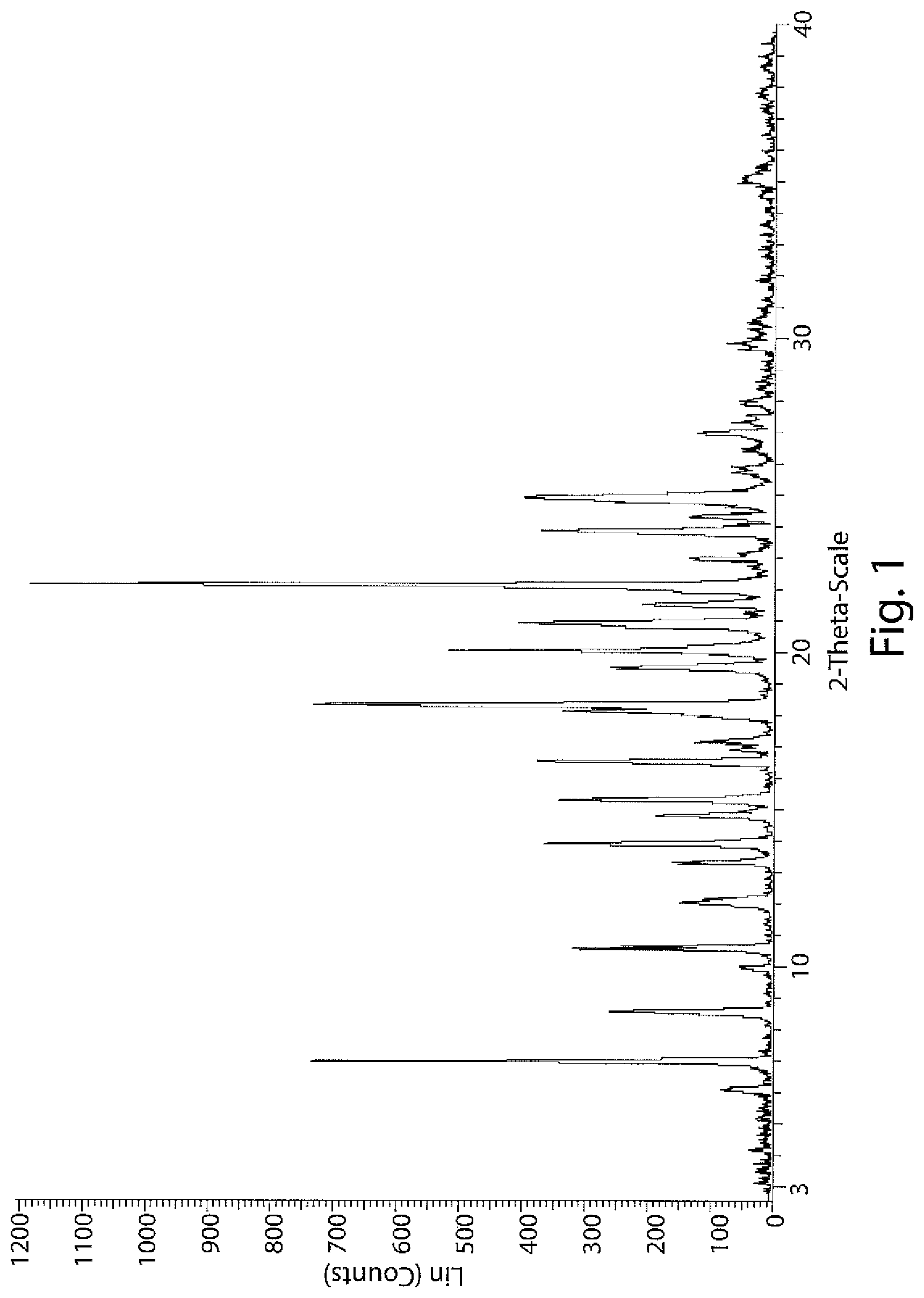
D00002

D00003

D00004

D00005

D00006

D00007

D00008

D00009

D00010

P00001

XML
uspto.report is an independent third-party trademark research tool that is not affiliated, endorsed, or sponsored by the United States Patent and Trademark Office (USPTO) or any other governmental organization. The information provided by uspto.report is based on publicly available data at the time of writing and is intended for informational purposes only.
While we strive to provide accurate and up-to-date information, we do not guarantee the accuracy, completeness, reliability, or suitability of the information displayed on this site. The use of this site is at your own risk. Any reliance you place on such information is therefore strictly at your own risk.
All official trademark data, including owner information, should be verified by visiting the official USPTO website at www.uspto.gov. This site is not intended to replace professional legal advice and should not be used as a substitute for consulting with a legal professional who is knowledgeable about trademark law.